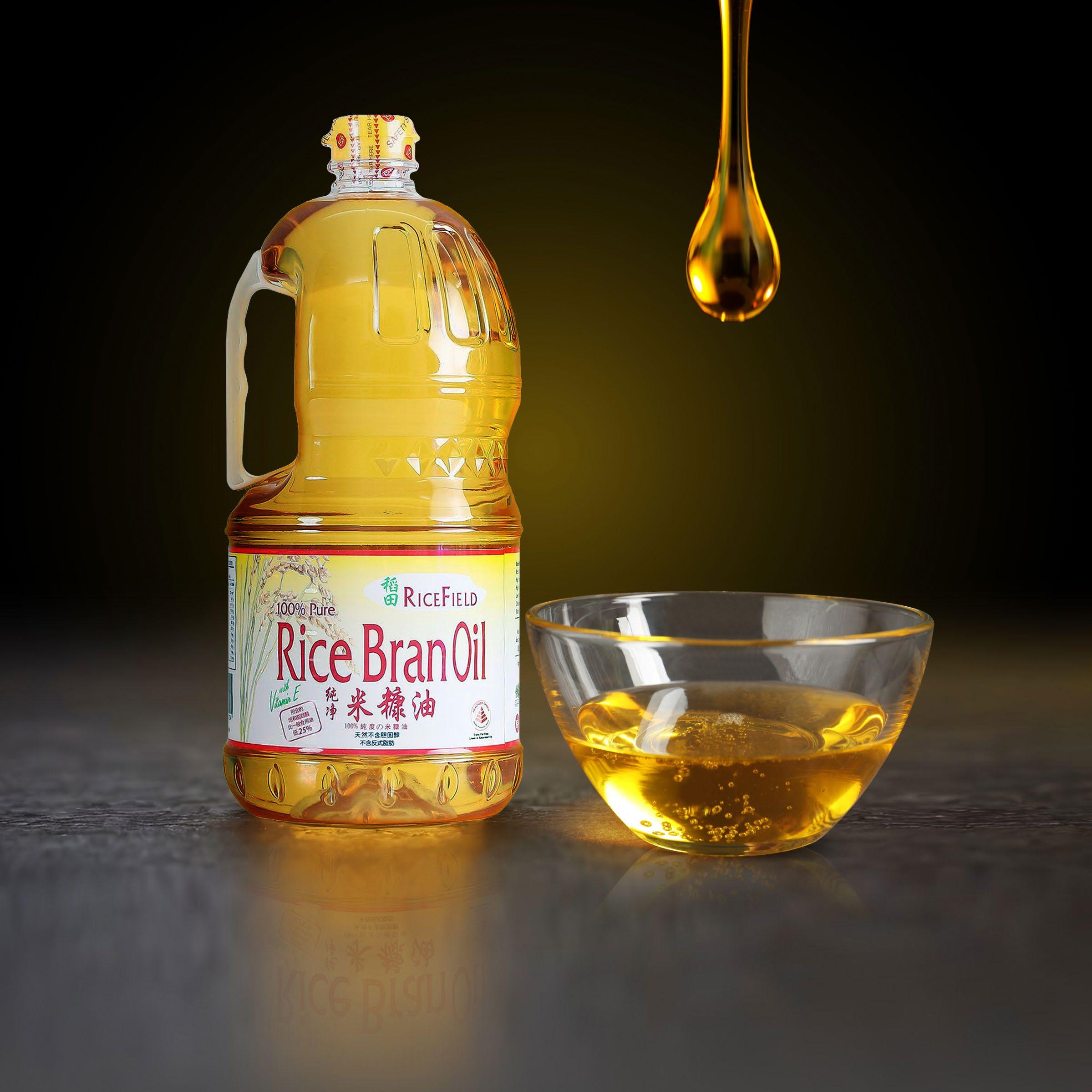







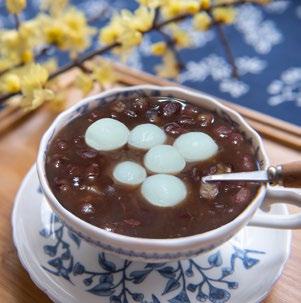














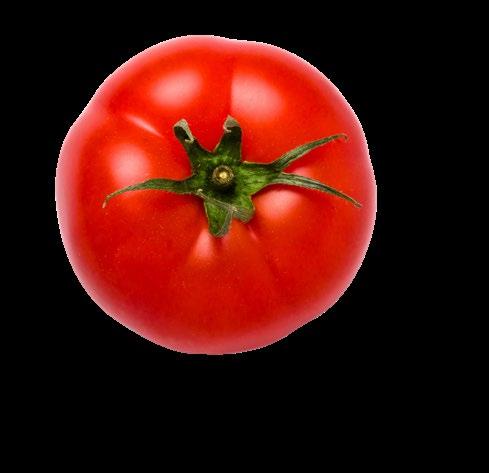


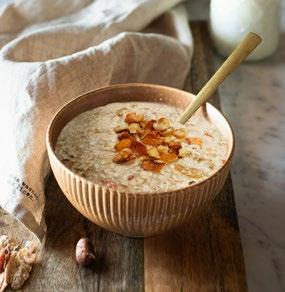












RECIPES WITH EIGHT INGREDIENTS OR LESS











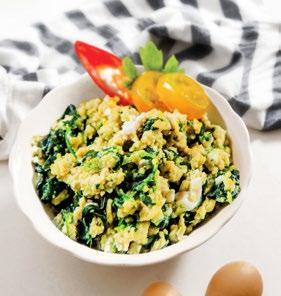










































RECIPES WITH EIGHT INGREDIENTS OR LESS














Asour population ages, we want to encourage our silver generation to adopt healthy eating habits and to age gracefully.
In celebration of the 20th anniversary of Awareness of Macular Diseases (AMD) Week and the 30th anniversary of our Geriatric Medicine Department, we are proud to present this cookbook as part of our commitment to promoting health and wellbeing.
These recipes are developed to help you “See Straight & Live Great”. They are both nutritious and simple to prepare. They are carefully selected, tried, and tested by our dietitians and chefs. What’s more, each dish can be prepared with just 8 ingredients or less, making healthy eating simple and straightforward.
In addition to recipes, this cookbook includes nutritional facts and food tips for healthy ageing. You will find information on topics such as understanding sarcopenia, strengthening bones to combat osteoporosis, addressing age-related vision challenges, as well as maintaining cognitive health through proper diet.
We hope this easy-to-follow guide would be of great use to you and your loved one in maintaining a healthy lifestyle.
We hope you try the recipes, enjoy the meals, see straight, and live great!

Prof Chua Hong Choon Chief Executive Officer
Khoo Teck
Puat Hospital
& Yishun
Health

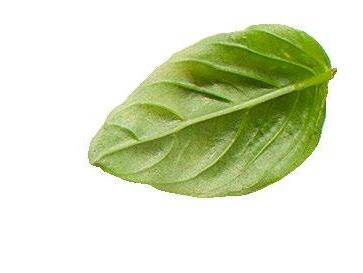
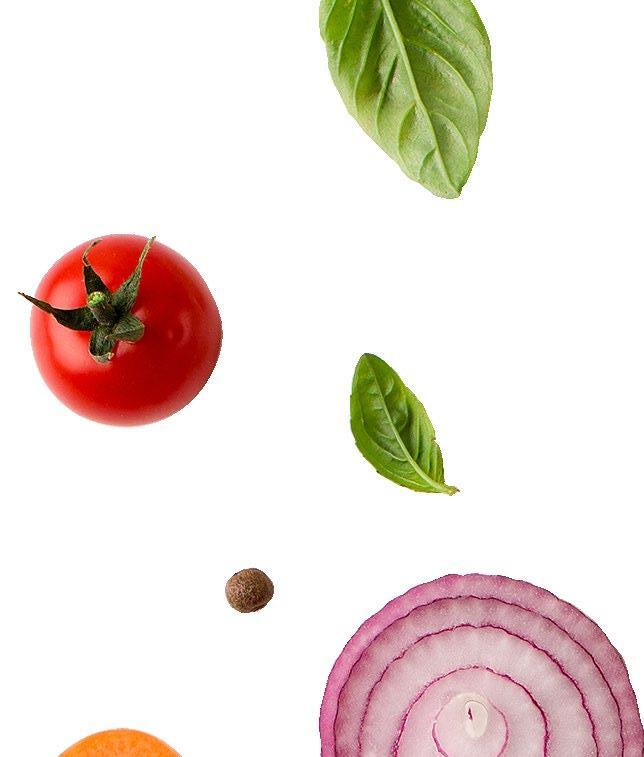
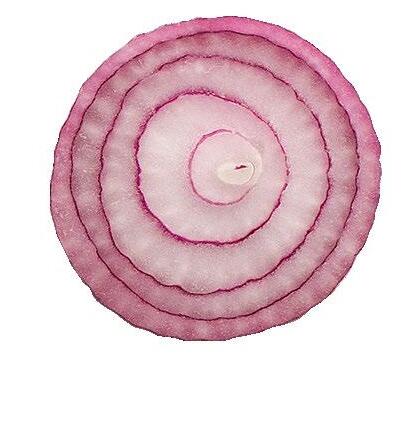
Introduction to Healthy Ageing
Understanding Sarcopenia
Strengthening Your Knowledge on Osteoporosis
Exploring Age-related Vision Challenges
Maintaining Cognitive Health
Guidelines from My Healthy Plate
Carrot Cake Oats
Dosa
Oatmeal Pancake
Shakshuka
Soft Idli
Strawberry Shortcake Oats
SIDE DISHES
Ayam Masak Merah
Baked Garlic Lemon Fish
Baked Salmon with Steamed Potatoes,
Mango Chicken Curry
Meatless Peking Duck Popiah
Ngoh Hiang
Palak Paneer
Poached Chinese Spinach with Gold and Silver Fish
Sambal Stingray
Spicy Tofu and Spinach Scrambled Eggs
Steamed Egg with Broccoli and Wolfberries
Sweet Soy Tempeh
Vegan Sesame Tofu Dumpling
Xiao Bai Cai and Minced Chicken Wonton
Cauliflower Fried Rice
Chili Lime Chicken Oat Porridge
Creamy Tuna and Spinach Whole Grain Pasta
and Century Egg Porridge
Fried Rice with Grilled Chicken
Healthy Bean Pasta
Korean Salmon Bibimbap
Miso Noodle Soup
One Pot Salmon Rice
Pineapple Fried Rice
Pumpkin Tempeh Rice
Sea Bass Fish Congee with Carrot
Sliced Fish Bee Hoon Soup
Spinach and Prawn Aglio Olio
Tomato Egg Spinach Noodle Soup
Tuna Sushi Roll
Old Cucumber and Peanut Soup
Pumpkin Fish Soup
Red Lentil and Carrot Soup
SNACKS/DESSERTS
Adzuki Red Bean Soup
Almond Berry Smoothie Bowl
Banana Oatmeal Mug Cake
Fruit Rojak
Mango and Oatmeal Smoothie
Mango Bean Salad
Mango Lassi
HIGH PROTEIN SNACKS
Baked Egg Muffin
Chocolate and Chia Tofu Pudding
Fresh Spring Rolls
Tofu Pizza Rice Bran Oil:


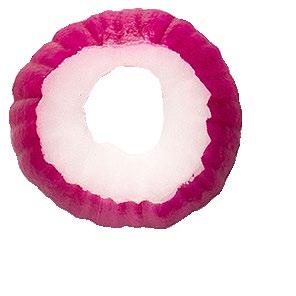

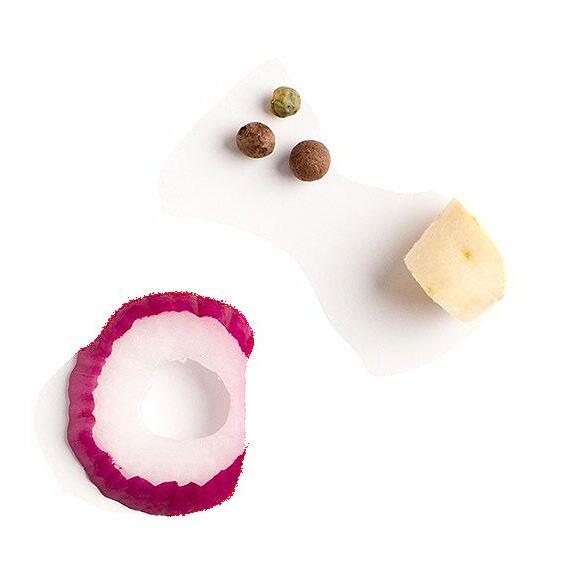
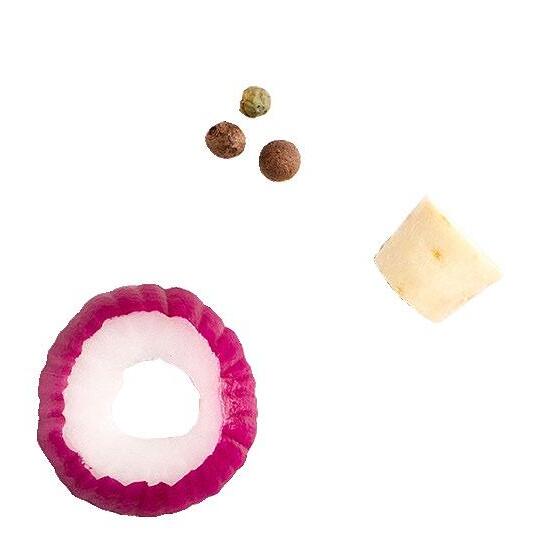

Doyou know that by 2030, one in 4 Singaporeans will be aged 65 and above? People usually associate ageing with frailty. However, evidence has shown us that frailty is preventable, reversible, and treatable. We can age gracefully by adopting a healthy lifestyle and healthy eating is part of it.
Understanding the unique dietary needs of older adults is vital for maintaining a healthy living and mitigating age-related health concerns. In this cookbook, we will explore the different types of nutrition-related challenges associated with ageing, guidelines on healthy eating for elderly, and specific nutritional requirements for the elderly to support their health and well-being.
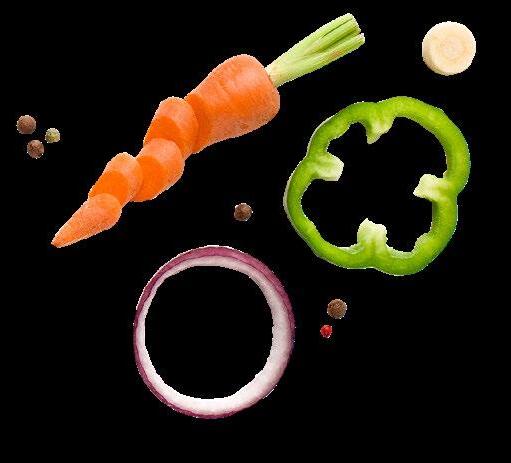
People
start to lose up to 8% of muscle mass per decade at around the age of 40. At 70 years old, the rate of muscle loss may double. This poses a threat in a common geriatric syndrome such as sarcopenia, among the elderly population. Sarcopenia is defined as an age-associated progressive and generalised skeletal muscle disorder that involves loss of muscle mass, loss of muscle strength, and/or reduced physical performance.
Proteins are the building blocks of muscles. Elderly people require more protein in their daily diet to minimise loss of muscle mass and strength. This will help reduce the risk and progression of sarcopenia and the risks of falls and fractures.
Functions of Protein:
• Tissue growth, repair and maintenance
• Preserve muscle and bone mass
• Reduce the risk and progression



Food Sources of Protein
Animal-based Plant-based
• Eggs
• Poultry
• Fish and Seafood
• Lean Meat
• Dairy Products (milk, cheese, yoghurt)
• Soy and Soy Products (tofu, soymilk, tempeh)
• Legumes (lentils, chickpeas)
• Nuts
• Seeds
Recommended Intake: Aim 3 servings a day


1 palm-sized piece of lean meat, fish or poultry (90g - 100g)


Example of 1 serving size of protein are the following:
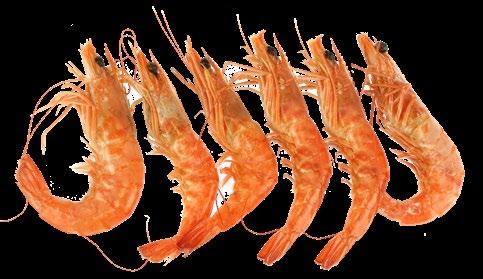
5-6 pieces of medium-sized prawns
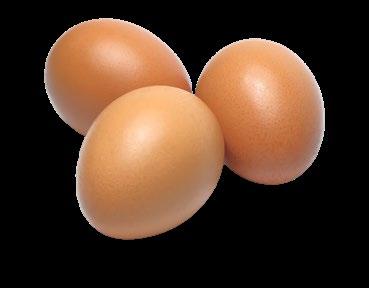





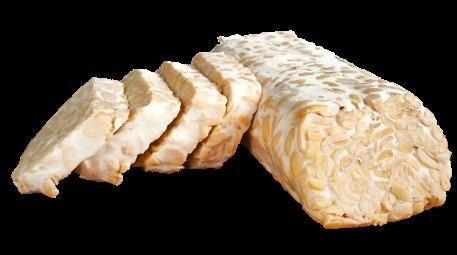
4 pieces of tempeh or ¾ small bowl chopped (90g - 100g)
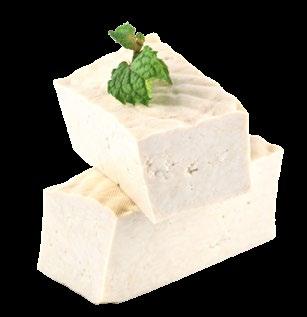

Besides obtaining sufficient protein intake, spreading protein intake throughout the day is important to maximise muscle growth. For example, include 1 serving of protein-rich food at breakfast, lunch and dinner.
Osteoporosis is a disease that causes bones to become weak, brittle, and prone to fracture. It is a ‘silent’ disease, with usually no signs or symptoms during the early stages. The risk of osteoporosis increases with age. The International Osteoporosis Foundation Asian Audit in 2013 showed that 1 in 3 Singaporean women over 50 have osteoporosis. Over the last 30 years, hip fractures in those aged 50 and above have increased. This disease is becoming prevalent in Singapore. Poor calcium intake and lack of exercise are two main modifiable contributors to risk of osteoporosis.
Due to ageing, the absorption of important nutrients, vitamins, or minerals, like vitamin D and calcium, that are important for bone health declines. Substantial bone loss starts to happen after the age of 50 for women and 65 for men, and it is important to maintain a high-calcium diet to reduce the risk of osteoporosis. Food such as milk and dairy products like cheese and yoghurt contain significantly high amounts of calcium.
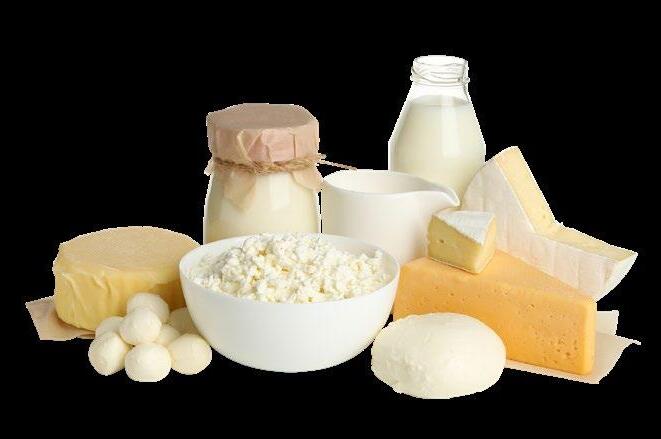
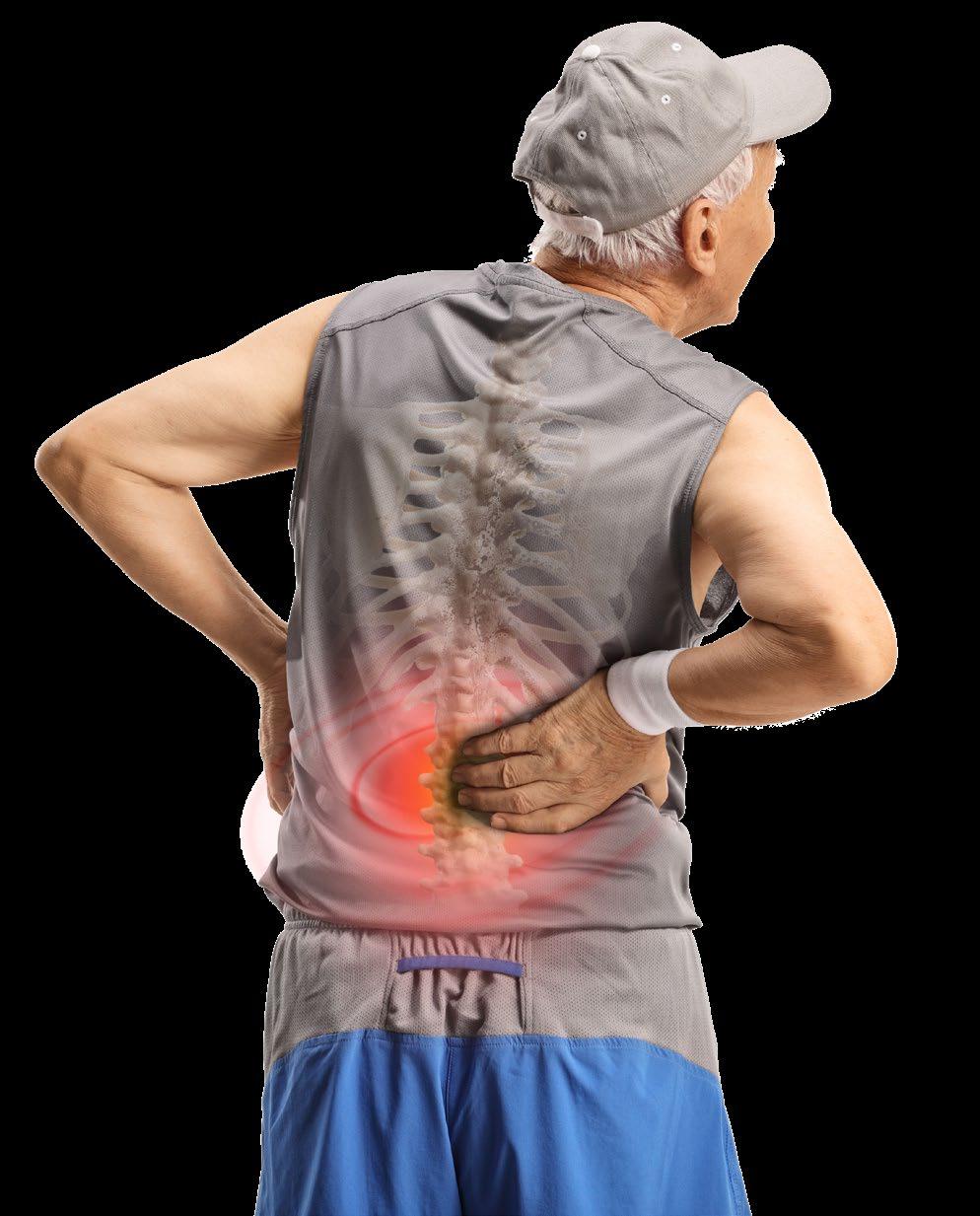
Animal-based
• Milk
• Dairy Products
• Anchovies (with bones)
• Sardines (with bones)

For those who do not drink milk or who are lactose intolerant
Plant-based
• Firm tofu
• Tempeh
• Spinach
• Green Leafy Vegetables
• Almonds
• Black Sesame Seeds
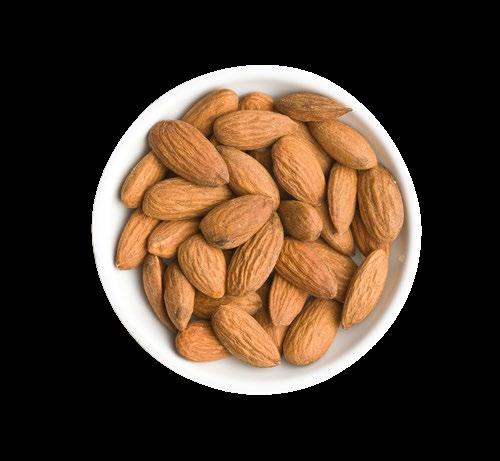
• High-calcium soy milk, almond milk, rice milk
• Cheese & yoghurt as the lactose content is lesser
Recommended Intake: 1,000mg to 1,200mg per day
Vitamin D promotes bone health by helping with calcium absorption from food in the intestine, ensures the correct renewal and mineralisation of bone, helps to keep muscles strong and reduces the risk of falls and osteoporosis. A diet lack in vitamin D increases the risk of osteoporosis. Only a limited number of foods contain vitamin D. Therefore, exposing the skin to sunlight allows us to obtain 70-80% of the vitamin D our body needs. It is recommended to have 15 to 30 minutes of sunlight exposure daily for sufficient vitamin D.
For elderly, sun exposure may be insufficient as ageing can affect the skin’s ability to convert sunlight into vitamin D efficiently. Hence, vitamin D supplementation is necessary for those who have vitamin D deficiency.
Age-related Macular Degeneration (AMD) is one of the causes of blindness affecting those 50 years old and above. It is a natural result of ageing affecting an older adult’s central vision, causing blurry vision. Though the disease rarely causes complete blindness, it may still affect daily activities like reading and cooking. A healthy lifestyle, healthy eating, physical activity and avoiding smoking can reduce the risk and slow the progression of AMD.
Antioxidants like Vitamins A, C, and E, lutein and zeaxanthin, and omega-3 are important nutrients to maintain eye health. These nutrients are important in reducing the risk of chronic eye diseases. Dark green leafy vegetables are primary source of lutein and zeaxanthin.


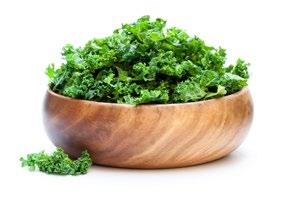

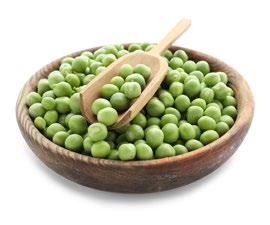
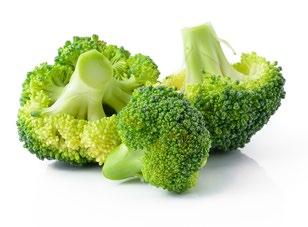
Recommended Intake: 10mg of Lutein per day and 2mg of Zeaxanthin per day
Omega-3 fatty acids are building blocks of fats that the human body needs to function daily. Aim for 2 servings of fatty fish, at least twice a week.
Functions of Omega-3:

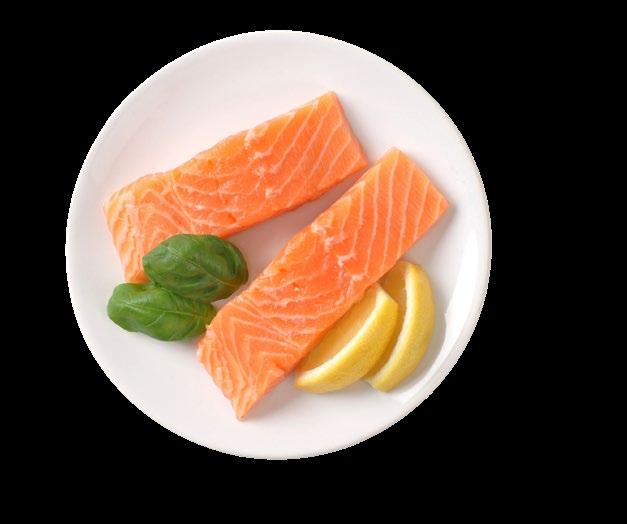
• Mackerel
• Salmon
• Tuna
• Sardines
• Flax Seeds
• Chia Seeds
• Walnuts
• Canola Oil
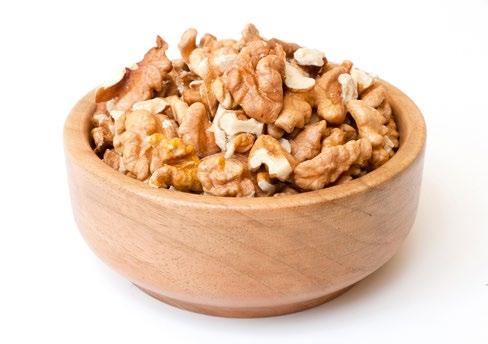
Ageing
causes changes in brain size and cognition. Losing some cognitive ability is a natural part of aging. While subtle changes in cognition are normal, some people experience a decline that is more than what would be considered normal, such as dementia. According to a 2015 study by the Institute of Mental Health (IMH), about 1 in 10 people aged 60 and above in Singapore has dementia. Adherence to a Mediterranean diet may reduce risks of cognitive decline and dementia. Mediterranean diet comprises mainly plant-based sources, including green leafy vegetables, nuts and seeds, fresh fruits, and wholegrains. Olive oil contains natural antioxidants and high level of healthier fat like monounsaturated fats and polyunsaturated fats. The antioxidants (phenolic compounds) from olive oil is considered to have a protective effect against cognitive decline.

A higher intake of foods with Vitamin Bs is vital to slow down cognitive decline or even the possible risk of diseases related to memory loss. Vitamin B6, B9 and B12 are highly associated with a better cognitive performance in immediate and delayed memory recall, processing speed, sustained attention, and working memory among elders. Thus, the elderly should obtain sufficient vitamin B intake by consuming oily fish, poultry, and dark leafy vegetables in their meals. Aim for a variety of fruits and vegetables as they are rich in brain-healthy nutrients such as vitamin B. It is recommended to include 2 servings of fruit and 2 servings of vegetables daily.
Function of Vitamin B include:

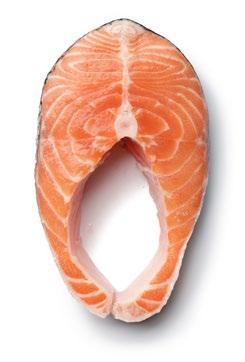

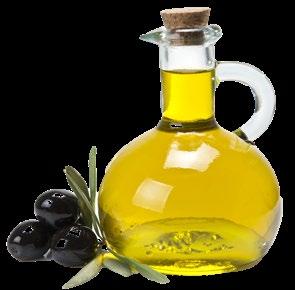
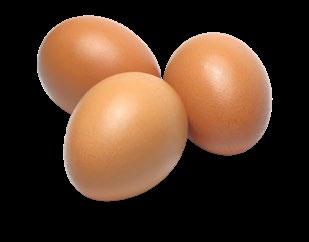

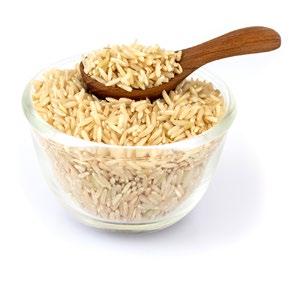
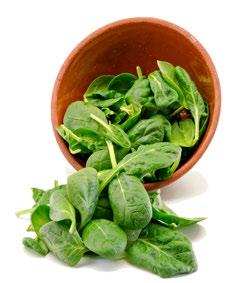

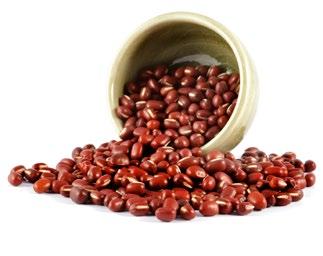
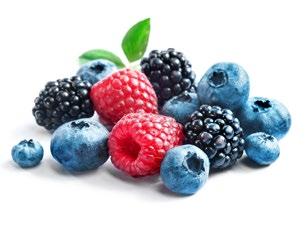
Excessive alcohol consumption can increase the loss of vitamin B. If you drink, limit alcohol consumption to not more than 2 standard servings for men and not more than 1 standard serving for women in a day.
One quarter plate of brown rice and wholemeal bread
One quarter plate of meat and others
plate of fruits and vegetables
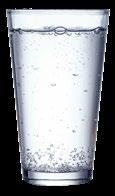
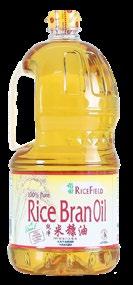


1. Boost up on bright coloured fruits and vegetables in daily meal for antioxidants
2. Choose lean meats, tofu, beans for protein
3. Include fish high in omega-3 at least 2 to 3 times a week
4. Have a handful of nuts as snacks in a week
5. Ensure adequate hydration by drinking 6-8 cups of water a day (to achieve ~1.5 - 2L of fluid intake in a day)



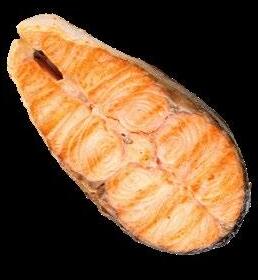


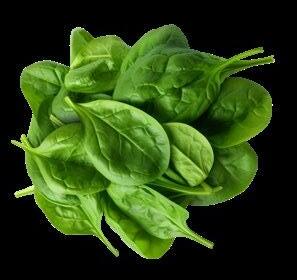

6. Lower salt and sugar intake by avoiding processed food and sweet desserts
1. Cut meats into bite-size, choose tender cuts of meat or fish
2. When cooking brown rice, soak 1 cup of brown rice with 2 ½ cup water for at least an hour before cooking. Brown rice can be replaced with porridge as well
3. Choose less fibrous vegetables such as carrots, pumpkin, and sweet potato. Cut them into smaller pieces and cook them into a softer texture
4. Include soft fruits such as blueberry, mango, papaya, banana, and watermelon
For people with specific medical conditions or on therapeutic diets please consult your dietitian or doctor.
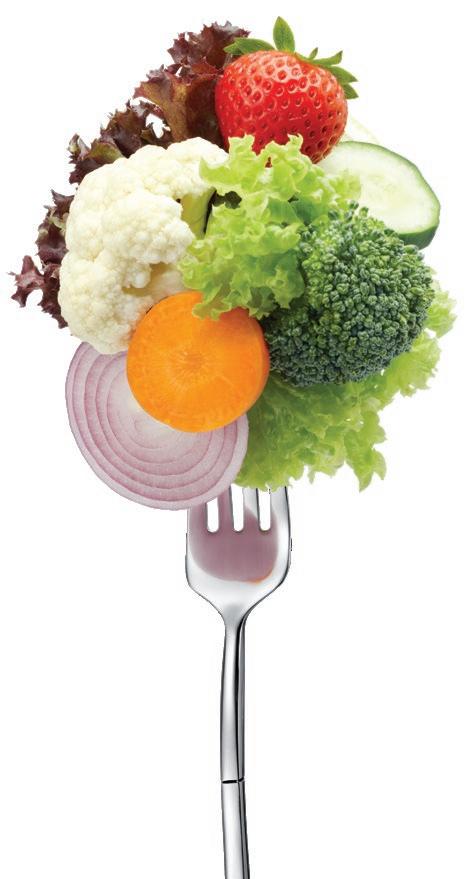

Instant oats
Ingredients
Unsweetened nut milk/ low fat milk Maple syrup Raisins Chopped
Quantity
(g) Cholesterol (mg)
Dietary fibre (g)
Sodium (mg)
METHODS:
1. Chop carrots and walnuts separately
2. Combine all ingredients together and refrigerate for 3 hours or overnight and enjoy!
FOOD TIP:
Wholegrains like oats, brown rice, and wholemeal bread are high in dietary fibre, which help to control blood cholesterol levels and reduces the risk of heart disease. This dish is also high in fibre, which can help to relieve constipation.
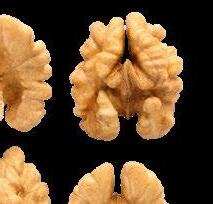

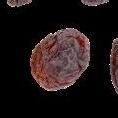
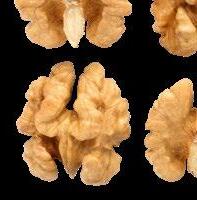




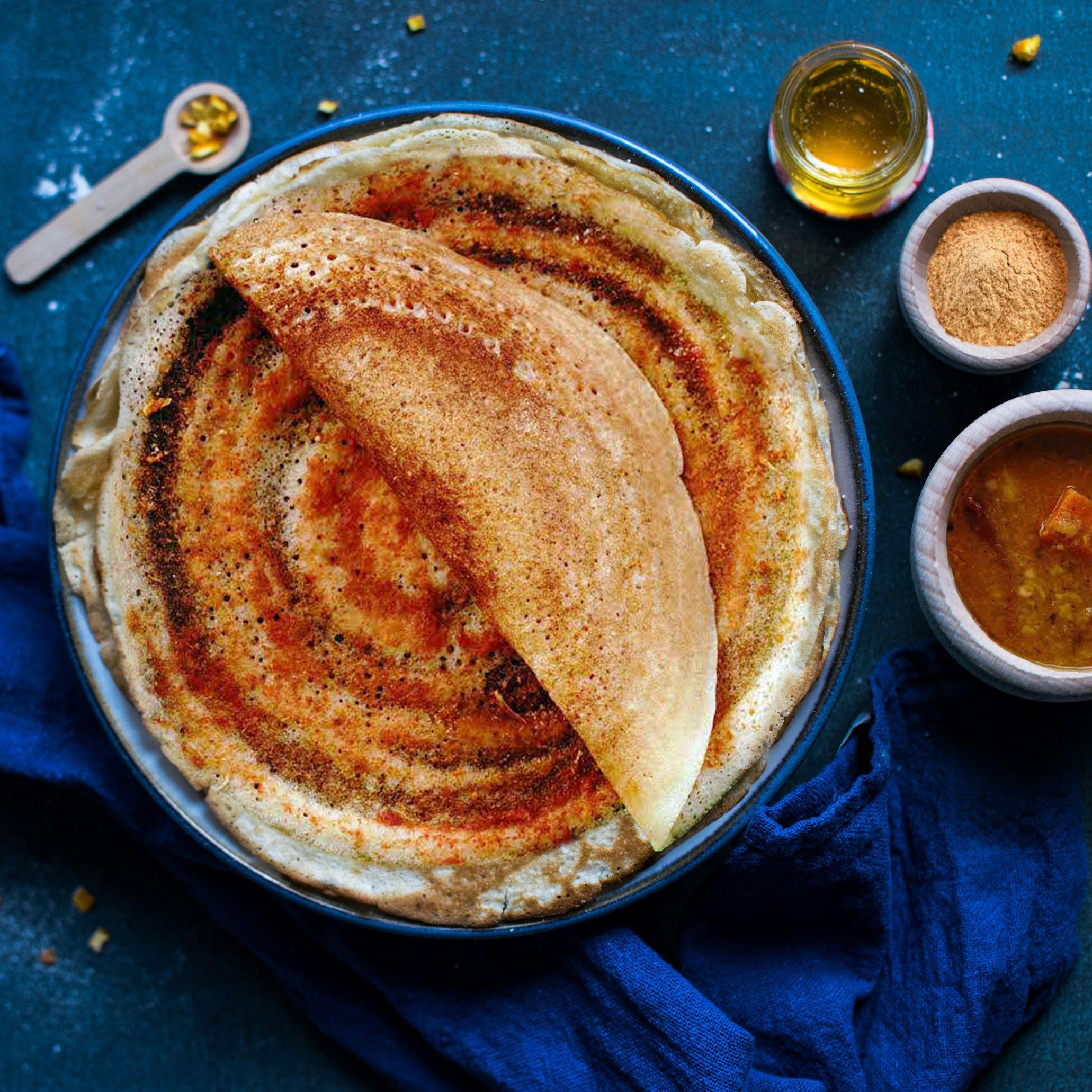
TIP: Drop half a spoonful of fermented batter into a bowl filled with water. A well fermented batter will float and not sink.
METHODS:
1. Soaked the rice and black gram individually for 4-5 hours.
2. Drain and grind both ingredients separately with one cup water.
(g) Sodium (mg)
3. In a large bowl, combine both grinded ingredients. Add salt and mix well.
4. Cover the mixture with a lid and keep it aside to ferment for a minimum of 12 hours. The batter should be frothy and bubbly and must not be too thick or too thin.
5. On a heated dosa 9” pan, drizzle some oil.
6. Pour the batter in the centre of the pan and spread the batter from the center moving your hand in clockwise, making circles until you reach the edge.
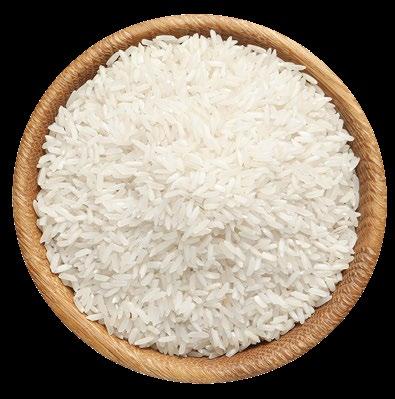
7. When the edges turn slightly brown and the centre well cooked, flip it and cook on the other side. Serve hot!
FOOD TIP:

Black gram is a type of lentil which is good source of plant-based protein. It is also high in dietary fibre, calcium and iron. Take this dosa with 1 serving of protein-rich food like dhal or paneer and 1 serving of vegetable to make it a completed and balanced meal.


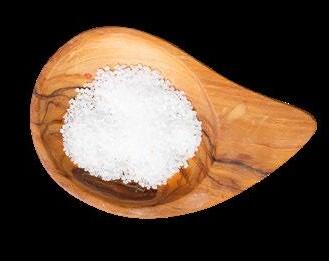
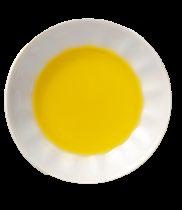
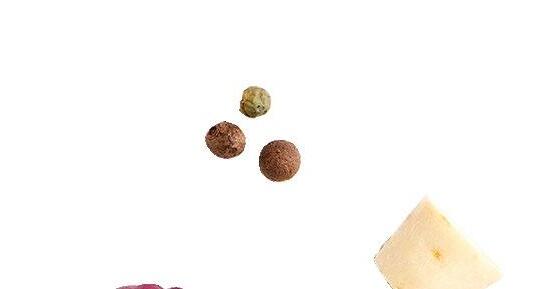

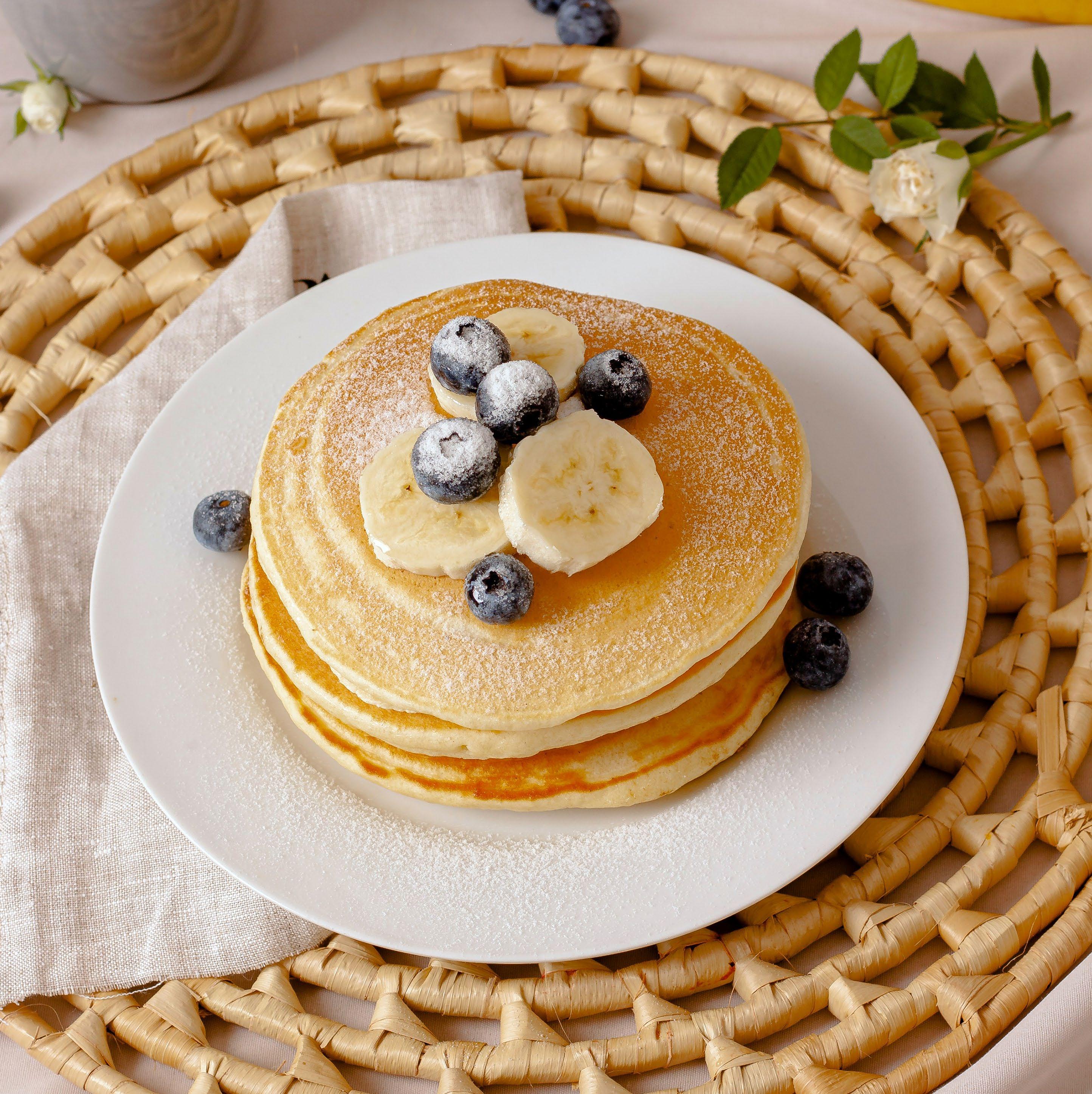
METHODS:
(mg)
(mg)
(g)
1. Combine flour, oatmeal and baking powder in a mixing bowl. Make a well in the middle and pour in milk and egg yolk mixture. Incorporate well.
2. Whip the egg whites while adding the sugar gradually till soft peaks with an electric mixer. Fold in the egg whites to the mixture with a spatula until combined.

3. Heat a non-stick frying pan over medium heat, pour approximately ¼ cup of batter onto the hot pan. Flip the pancake over when tiny bubbles start to form. Cook for another 1-2 minutes until both sides are golden brown. Continue to cook with the remaining batter.
4. Serve with cut fruits and honey if desired.
FOOD TIP:
Low-fat milk is a good source of dietary calcium. Adequate calcium intake is important to reduce risk of osteoporosis and loss of bone mass. It is recommended to consume 2 servings of milk or high-calcium soy milk daily to meet the calcium requirement. Quantity



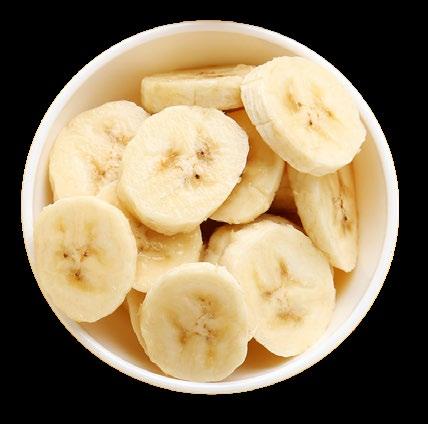


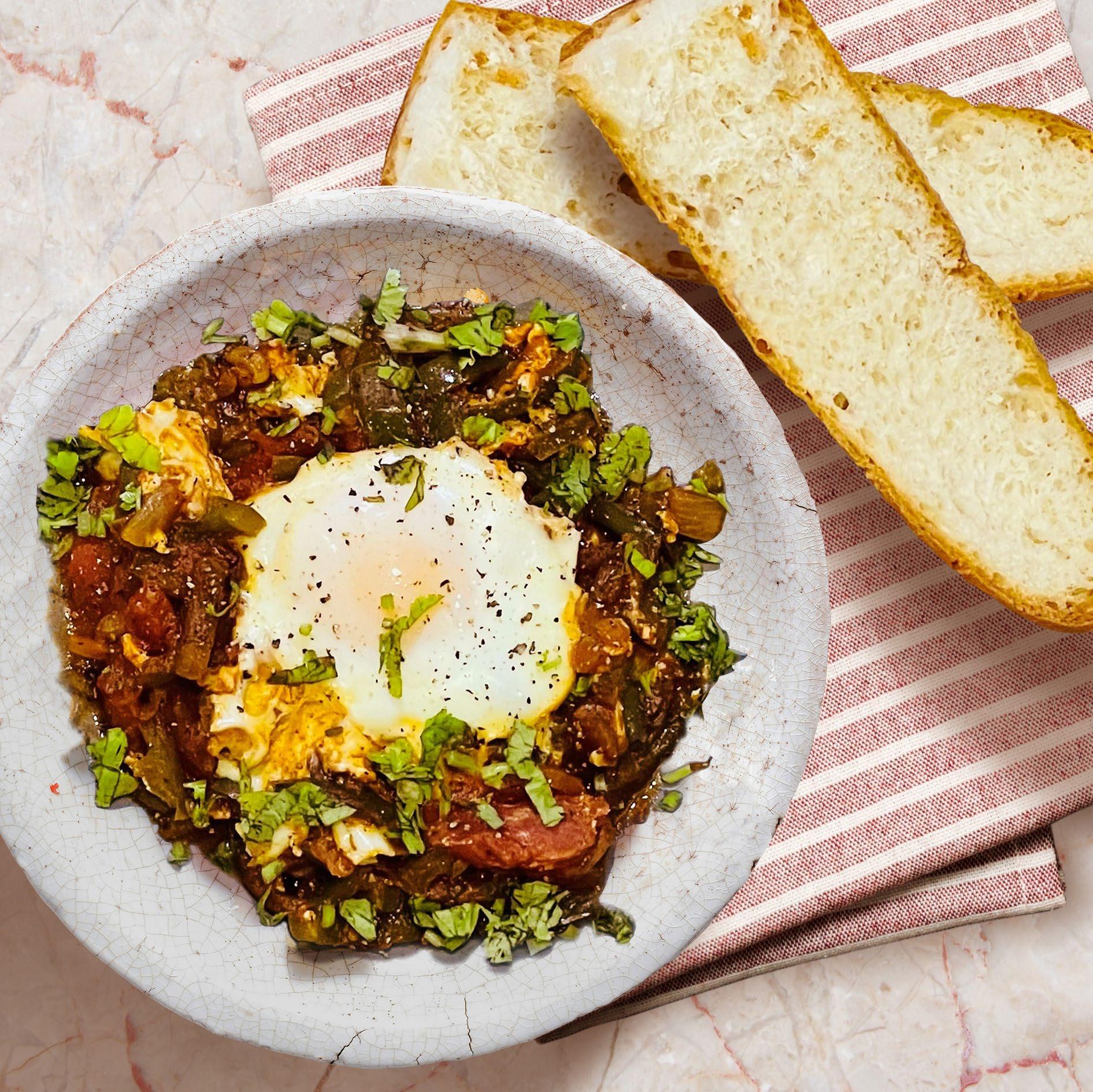
Olive oil
Onion, diced
Green capsicum, chopped
Garlic cloves, minced
Mediterranean spice mix
Whole peeled tomatoes, canned
Salt, lower sodium (1.0g)
Eggs, large
Mediterranean spice mix (10g):
Coriander powder
Paprika powder
Cumin powder
Nutrition Information (Per Serving)
(kcal)
Carbohydrate (g)
Protein (g)
Fat (g)
Cholesterol (mg)
Dietary fibre (g)
Sodium (mg)
Optional: Chili flakes to be added with salt
METHODS:
1. In a sauté pan, heat up olive oil on medium heat.
2. Add in chopped onions and capsicum and cook for 5 minutes or until onions are translucent.
3. Add in garlic cloves and mediterranean spice mix and cook for an addition of 2 mins.
4. Add in canned tomatoes (with its juice) and break down the tomato using a large spoon or scissors.
5. Add salt and bring the sauce to a simmer until it starts to thicken.
6. Make 4 wells in the tomato sauce and filling each well with an egg.

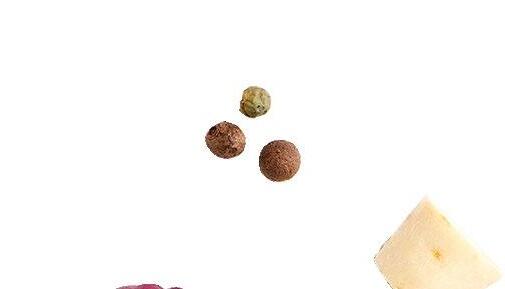
7. Cover the pan and let it simmer 5 minutes, or until the egg are done to your liking.
8. Serve hot with toasted wholemeal bread to make it into a balanced meal.
FOOD TIP:

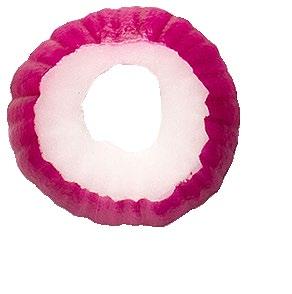
Herbs and spices are not only flavourful but rich in plant antioxidants. Use herbs and spices instead of salt to enhance the taste of the dish. Stock up your kitchen with a variety of herbs and spices is an easy way to prepare delicious meals.

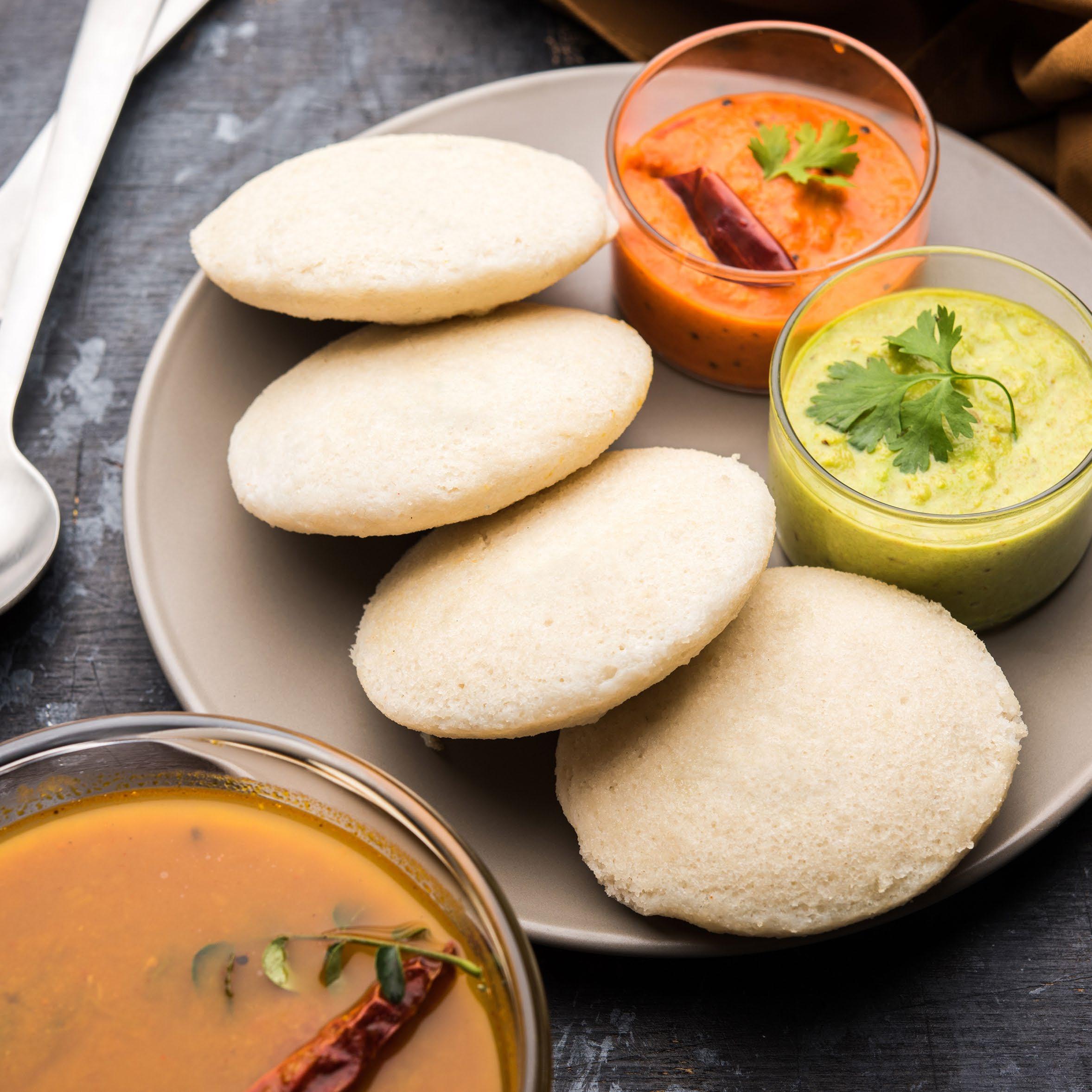
Ingredients
Urad dal (raw, pre-soaked)
Idli rice (raw, pre-soaked)
Fenugreek seeds (vendhayam)
METHODS:
Quantity
Nutrition Information (Per Serving)
Energy (kcal)
Carbohydrate (g)
Protein (g)
Fat (g)
Cholesterol (mg)
Dietary fibre (g)
Sodium (mg)
1. Grind soaked fenugreek seeds in water for 4-5 minutes until finely ground and have fluffed up.
2. Add Urad dal to wet grinder with the fenugreek with ½ cup water. Pour in water slowly. The dal should have increased about 8-10 times of its original volume. Grind for 10 minutes. Then transfer dal mixture into a bowl and set aside.
3. Grind rice separately for 10 minutes until smooth. Add ¼ cup water while grinding. Transfer to dal mixture and mix well.
4. Add salt to batter and set aside for 12 hours or overnight.

5. Put ¼ cup water in an idli vessel on medium heat. Oil idli plate and gently fill plate with batter.

6. Put inside idli vessel and let it steam for 8-10 minutes. Leave it undisturbed for 4-5 minutes after cooking and spoon it out. Serve hot.
FOOD TIP:
Urad dal is a type of lentil. Legumes like lentils and beans are all plant-based sources that are rich in dietary fibre and protein. Fibre increases weight of stool and softens it and thus relieve constipation. Remember to drink enough water while increasing your dietary fibre intake.



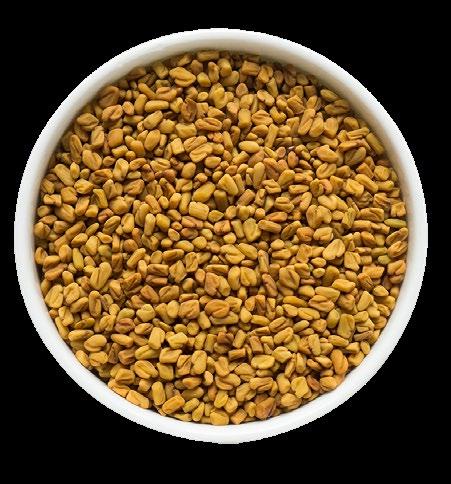
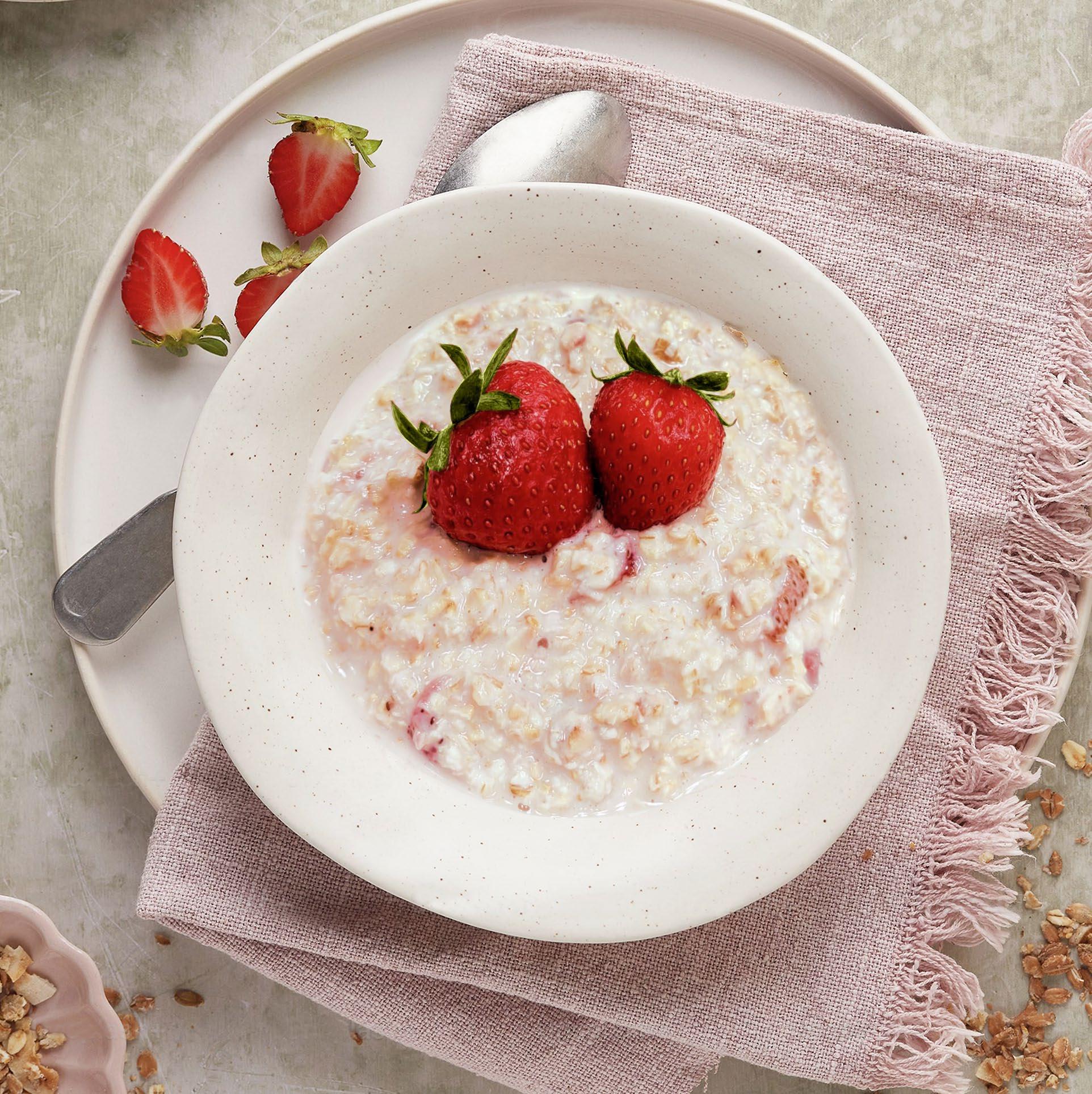
(mg)
Dietary fibre (g)
(mg)
METHODS:
1. Dice your strawberries.
2. Measure out and mix all ingredients together.
3. Refrigerate for 3 hours or overnight and Enjoy!

FOOD TIP:
Oats are wholegrains and it is rich in dietary fibre, especially the soluble fibre called beta-glucan which helps to reduce bad cholesterol level and thus reduce risk of heart diseases. Oats can be prepared in both sweet and savoury dishes.


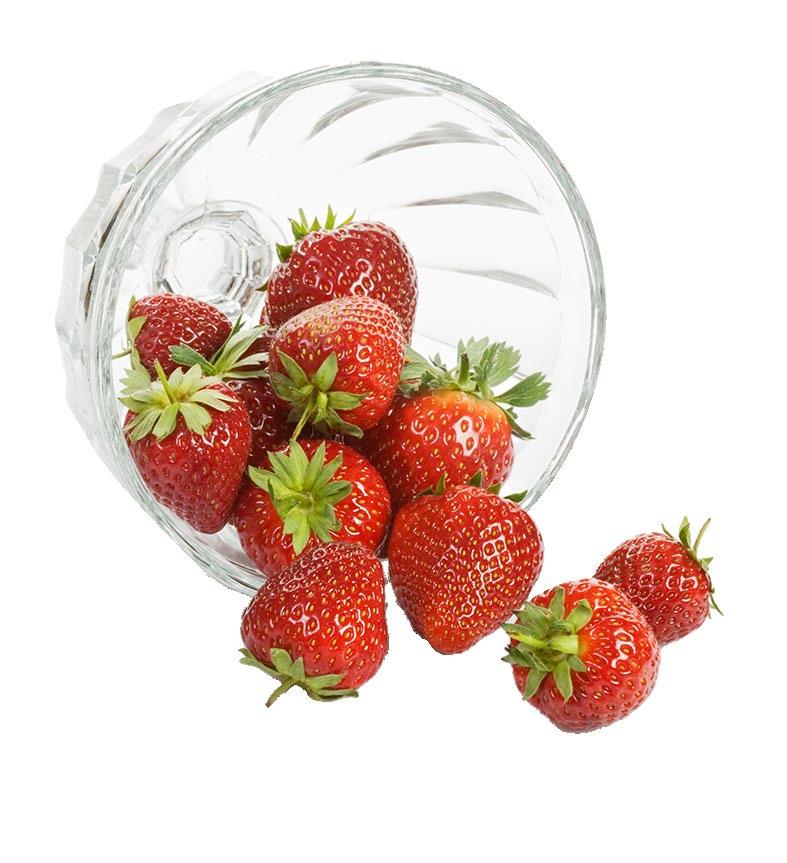
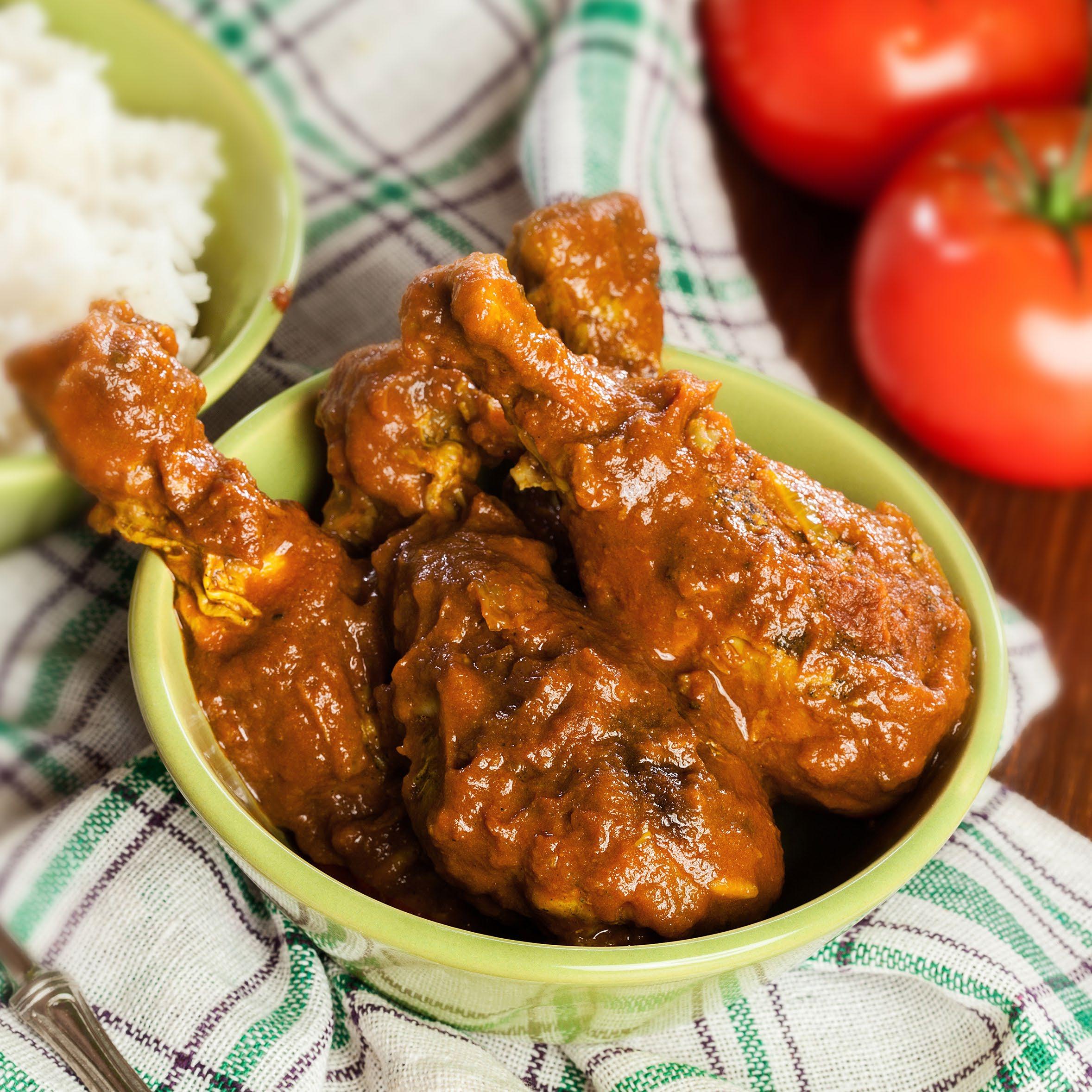
Chicken breast, cut into bite size
Turmeric powder
Canola oil
Yellow onion, chopped
Dried spices (cinnamon stick, star anise, cardamom & cloves)
Rempah (chili paste mix)
Tomato, chopped Tomato puree
1 kg
3 tsps
3 tbsps
1 medium 1 set
50 – 100 g
500 g
8 tbsps
2 cups
Optional: Salt and sugar to taste; Some coriander leaves as garnish
METHODS:
Nutrition Information (Per Serving)
1. Marinate the chicken pieces with Himalayan salt, turmeric powder and 1 tbsp of canola oil.
2. Air fry at 180⁰C for 15 mins or stir fry till chicken until cooked. Set aside.
3. In a wok, add 2 tbsps of canola oil & sauté the onion till translucent.
4. Add dried spices, rempah and chopped tomato, cook till soft.
5. Add tomato puree with 2 cups of water and mix well.
6. Stir in the chicken and cook for another 5 mins.
7. Finally add in chopped coriander leaves and turn off the heat.
FOOD TIP:


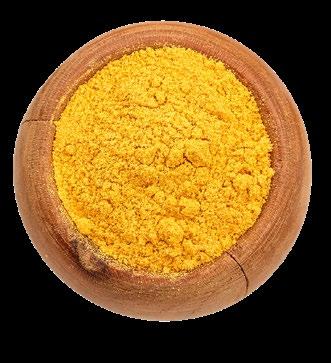
To improve the nutritional values of this dish, vegetables such as carrots or cabbage, and nuts such as cashew can be added. Turmeric contains curcumin, which is known for its anti-inflammatory and antioxidant properties that support brain health.


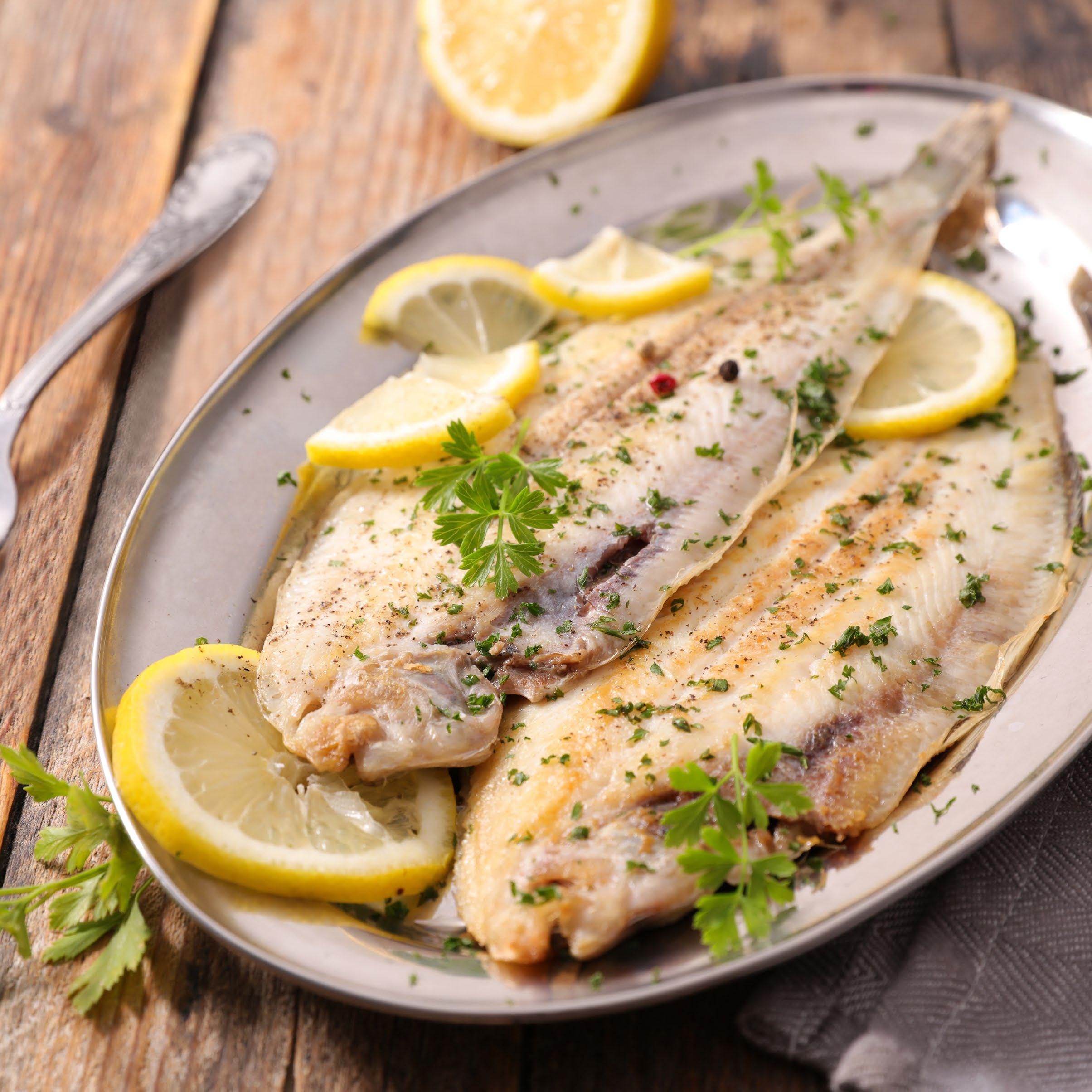
White fish fillets (95 g per fillet)
Garlic, minced
Dried mixed herbs
Lemon juice
Olive oil Optional: Garnish with coriander; Add salt and pepper to taste
METHODS:
1. Preheat oven to 175 degrees Celsius.
2. Combine olive oil and lemon juice in a small mixing bowl.
3. Pat dry fish before cooking.
4. Rub fish fillets with minced garlic, herbs and salt as desired.
5. Cover baking dish with aluminium foil. Arrange fish and pour olive oil mixture and sprinkle fresh coriander.
6. Bake for 15-20 minutes until fish flakes easily when tested with a fork.
FOOD TIP:
This dish is high in protein and low in sodium. Proteins support growth and maintenance of muscle. Instead of using sauces, this dish uses natural herbs and spices (garlic, mixed herbs, pepper) to enhance the taste. Quantity Ingredients
(mg) Nutrition Information (Per Serving)







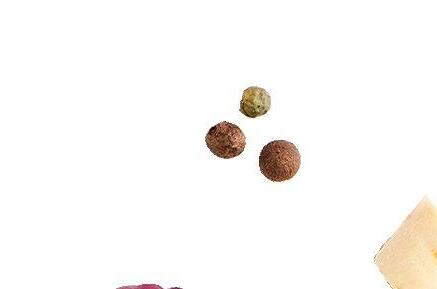

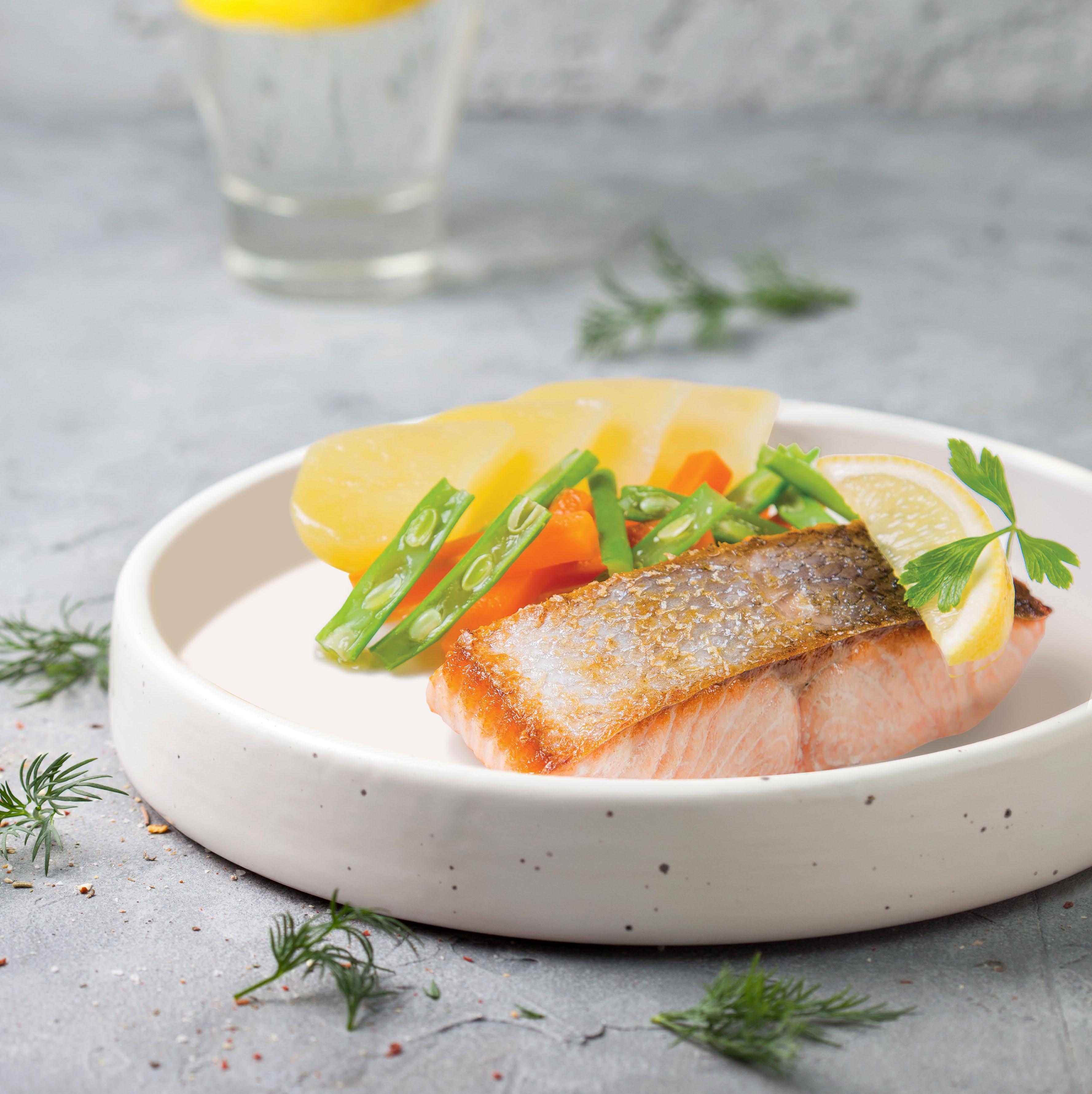
Nutrition Information (Per Serving)
Salmon fillets (raw)
French beans (ends trimmed and sliced to about 2-3 cm length)
Potato (steamed, sliced)
Vegetable oil
Garlic (minced)
Carrot (raw, sliced into strips)
Lemon
Optional: Garnish with parsley
METHODS:
1. Place french beans and carrots on a plate.
2. Put plate in a steamer and steam for 5 minutes.
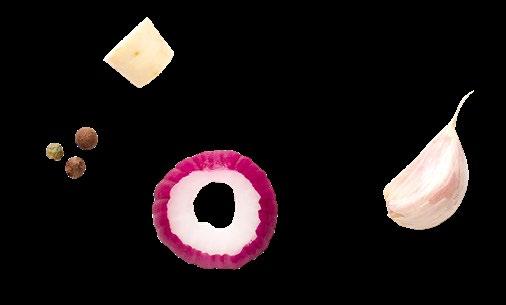
3. Meanwhile, season salmon fillets with salt and pepper to taste. Drizzle with lemon juice.
4. Add vegetable oil, garlic, french beans and carrots and combine well.
5. Place salmon on the vegetables.
6. Bake salmon and vegetables for 10 minutes, until cooked thoroughly.
7. Serve with steamed potatoes. Garnish with chopped parsley (if desired).
FOOD TIP:
Oily fishes like salmon, sardine, mackerel and tuna are excellent sources of unsaturated fats (omega-3) in a diet. Oily fish may have protective effect on age-associated cognitive decline, and dementia. It is recommended to consume oily fish twice a week.

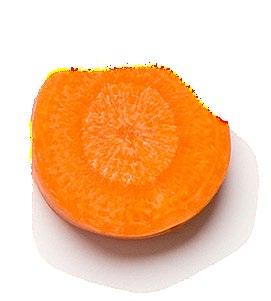
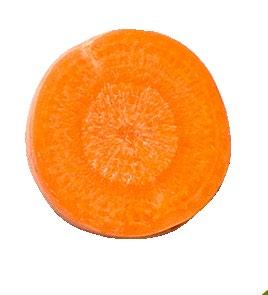

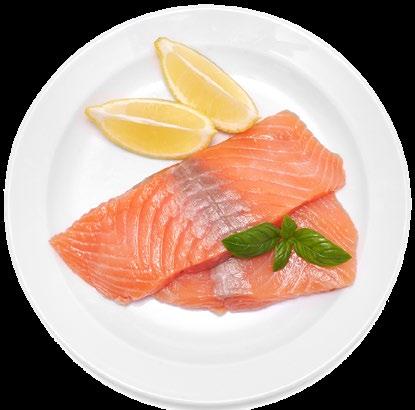



Olive oil
Eggplant, diced
French beans, diced
Garlic, minced
Chili padi, chopped
Chicken breast, skinless, minced
Oyster sauce
METHODS:
1. In a heated non-stick pan, add 1 tbsp of olive oil.
2. Stir-fry eggplant & French bean until slightly browned and set aside.
3. In the same pan, heat up 1 tbsp of olive oil.
4. Sauté garlic and chilli padi until fragrant.
5. Add in the chicken and stir-fry for 3 mins until cooked.
6. Toss in eggplant & French bean and mix well.
FOOD TIP:
(mg)
fibre (g)
(mg)
7. Add in oyster sauce and stir fry for another 3 minutes.
8. Turn off fire and add in the basil leaves.

9. Toss for another 2 minutes.
10. To complete the meal, serve with 1 cup of brown rice and enjoy!


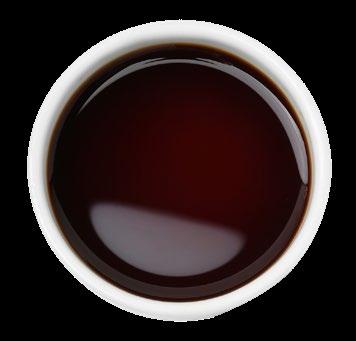
This dish is made with olive oil. The Mediterranean diet is marked by the regular intake of olive oil, which may play a role in preventing and protecting against cognitive deterioration and dementia. Excessive saturated fat intake will increase bad cholesterol. Removing the skin of chicken reduces the total amount of saturated fat intake.


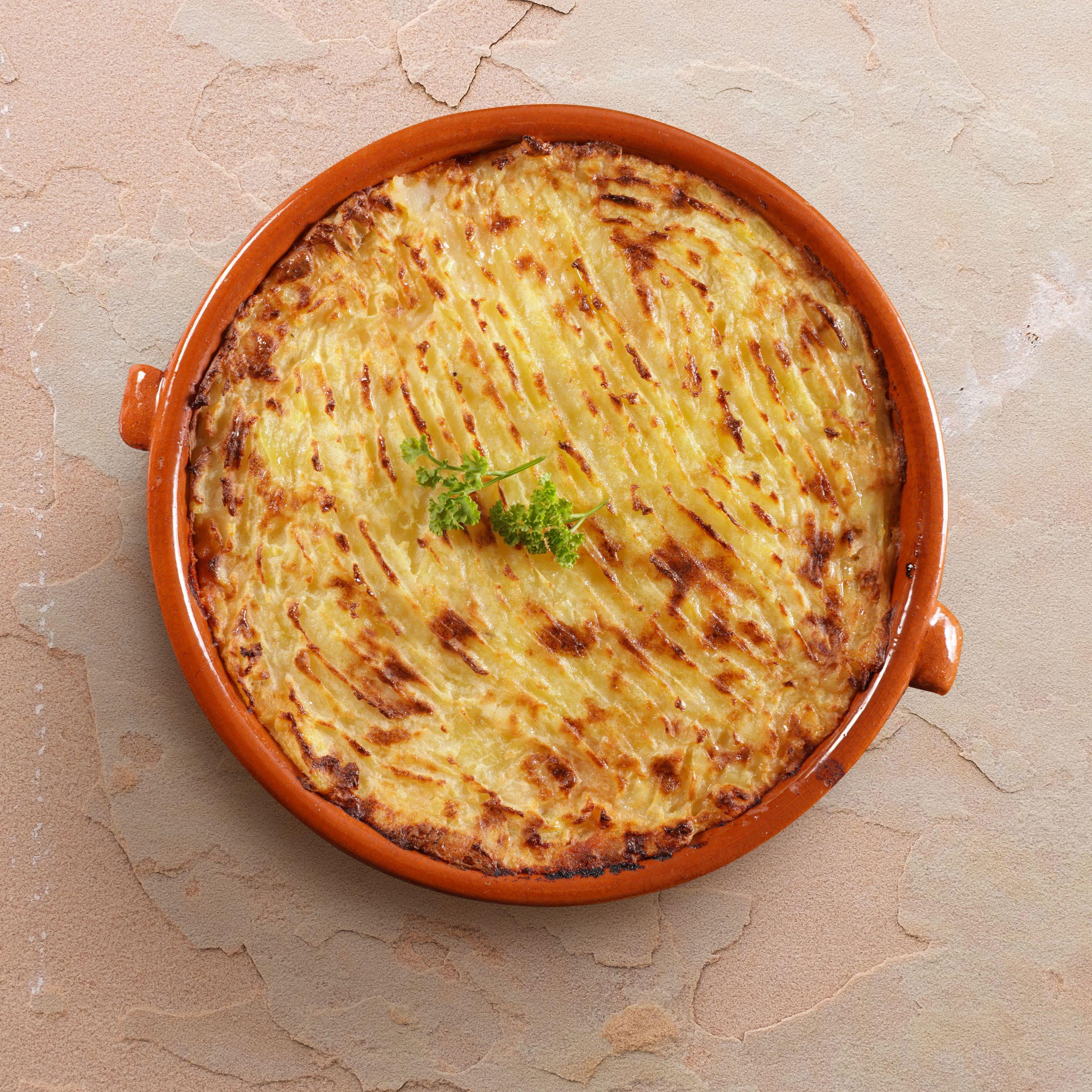
Potatoes, with skin
Mushroom concentrated stock, lower in sodium
Margarine
Onion, medium, chopped
Lentils, brown or green
Black pepper
Mixed vegetables, frozen
Thyme, dried
METHODS:
(g)
Protein (g)
Fat (g)
Cholesterol (mg)
Dietary fibre (g)
Sodium (mg)
1. Chop potatoes into chunks. In a pot, boil the potatoes for 20 mins or until soft.
2. To prepare mushroom stock, add 600ml of water to the concentrated stock. Set aside.
3. In a heated pot, add 15g margarine and sauté onions until brown.
4. Add in lentils and mushroom stock. Simmer with a cover for 35 mins or until the lentils are tender.
5. Drain the potato. In a large mixing bowl, mash potatoes with 30g margarine and 1 tsp of pepper with a fork and set aside.
6. Add in frozen vegetables, thyme and remaining 1 tsp of pepper to the lentils.
7. Continue to simmer to evaporate any excess liquid.
8. Transfer to a 7 inch round baking pan and top it with mashed potatoes.
9. Air fry at 180⁰C or bake at 200⁰C for 10 mins or until lightly browned on top.
FOOD TIP:

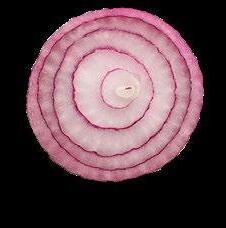
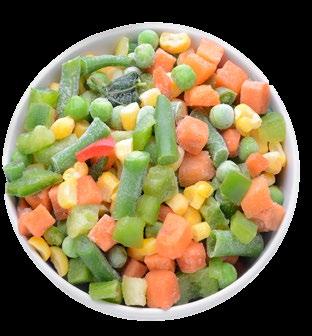
Lentils provide a great source of proteins and fibre. This is a healthy and balanced one-dish meal and packed with vitamins and minerals from different vegetables. This dish is also suitable for older adults due to its soft texture.


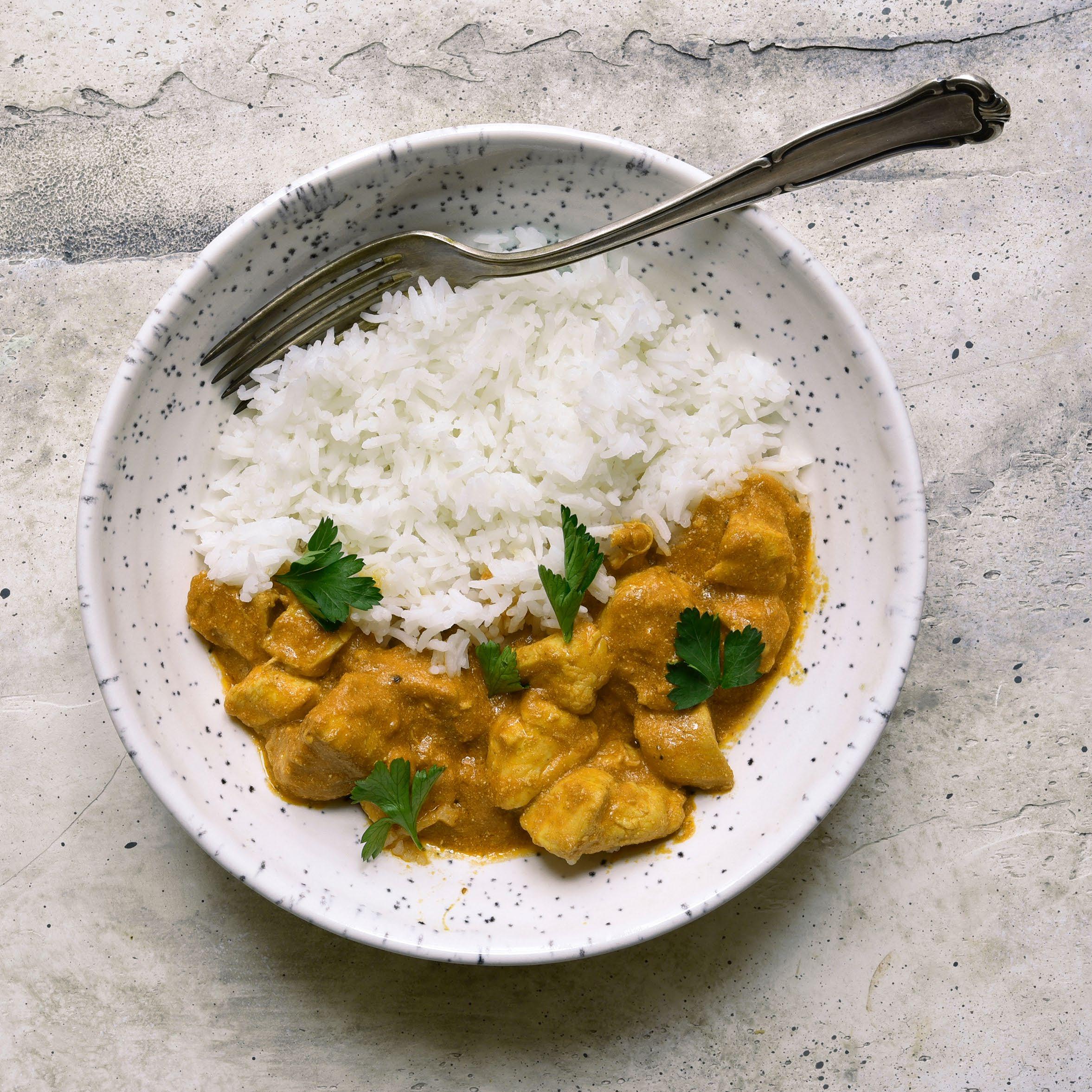
Onion, chopped
Ginger, chopped
Curry powder
Mango, frozen & diced
Salt, lower in sodium
Coconut milk, trim
Chicken thigh, diced & skinless
TIP: To replace frozen mango, use 1 medium fresh mango (140g).
METHODS:
1. Heat up oil in a large frying pan over medium heat.
Energy (kcal)
Carbohydrate (g)
Protein (g)
Fat (g)
Cholesterol (mg)
Dietary fibre (g)
Sodium (mg)
2. Add in onion, ginger and sauté for 3 mins or until the onions are translucent.
3. Blend sauté onion and ginger with the curry powder, salt, trimmed coconut milk and ¾ cup of mango until smooth.
4. Return blended curry paste to the frying pan at low heat then add chicken with ¼ cup of water.
5. Cover the pan and cook for 15 minutes, stirring a few times.
6. When the chicken are fully cooked, turn off heat.
7. Add in remaining ¾ cup of mango and serve.
FOOD TIP:
To increase calcium content, we can use low fat milk or high-calcium soymilk to replace coconut milk in making this dish. Calcium can be found in milk and milk products. This nutrient plays a crucial role in supporting strong bones.

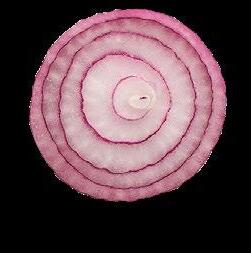
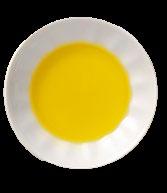
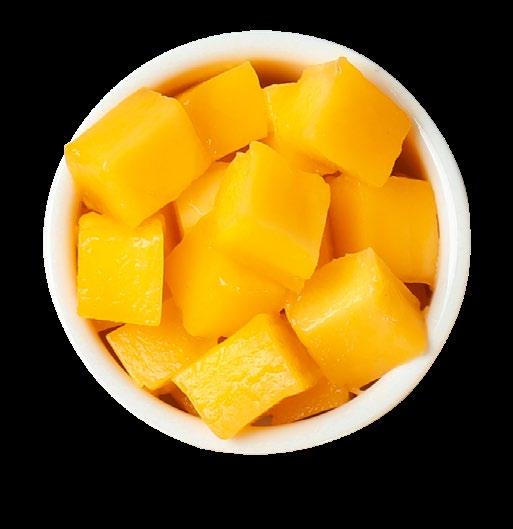


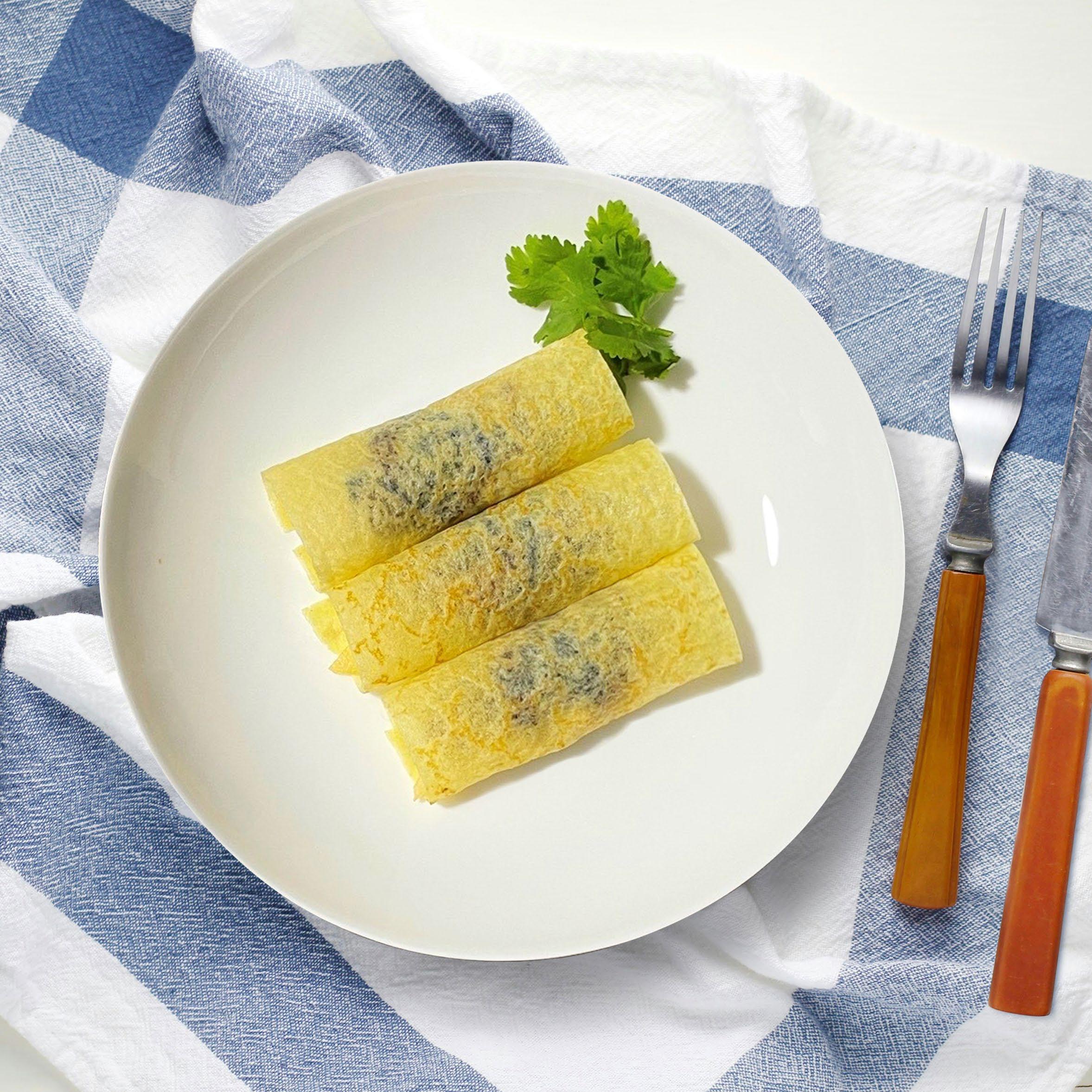
Jackfruit, fresh & deseeded
Cooking oil
Chinese five spice powder
Garlic, chopped
Hoisin sauce
Cucumber, deseeded & julienned
Cantaloupe, julienned
METHODS:
1. Using your hands, shred the jackfruit pieces onto a clean kitchen paper and pat dry.
2. Heat oil in a large frying pan.
3. When hot, add the jackfruit and fry for about 10 mins or until the edges start to crisp.
4. Reduce heat to medium and add five spices, garlic and fry until fragrant.
FOOD TIP:
Carbohydrate (g)
Protein (g)
Fat (g)
Cholesterol (mg)
Dietary fibre (g)
Sodium (mg)
5. Stir in hoisin sauce and mix well. Set aside.
6. Place popiah skin on a flat surface and put the jackfruit “duck” in the middle, followed by julienned cucumber and cantaloupe.
7. Roll the popiah as desired and enjoy!

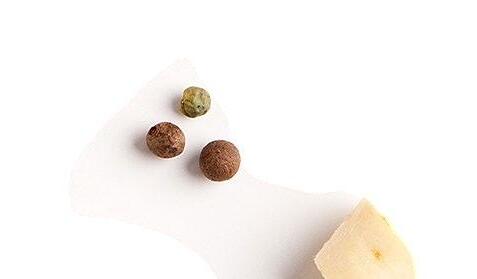


This is a refreshing snack that made with fruit and vegetables. It is important to include 2 servings of fruit and 2 servings of vegetables in our diet as they are rich in vitamins, minerals, and antioxidants to maintain our health. Plant based alternatives such as firm tofu or tempeh can be added as well to increase protein intake.

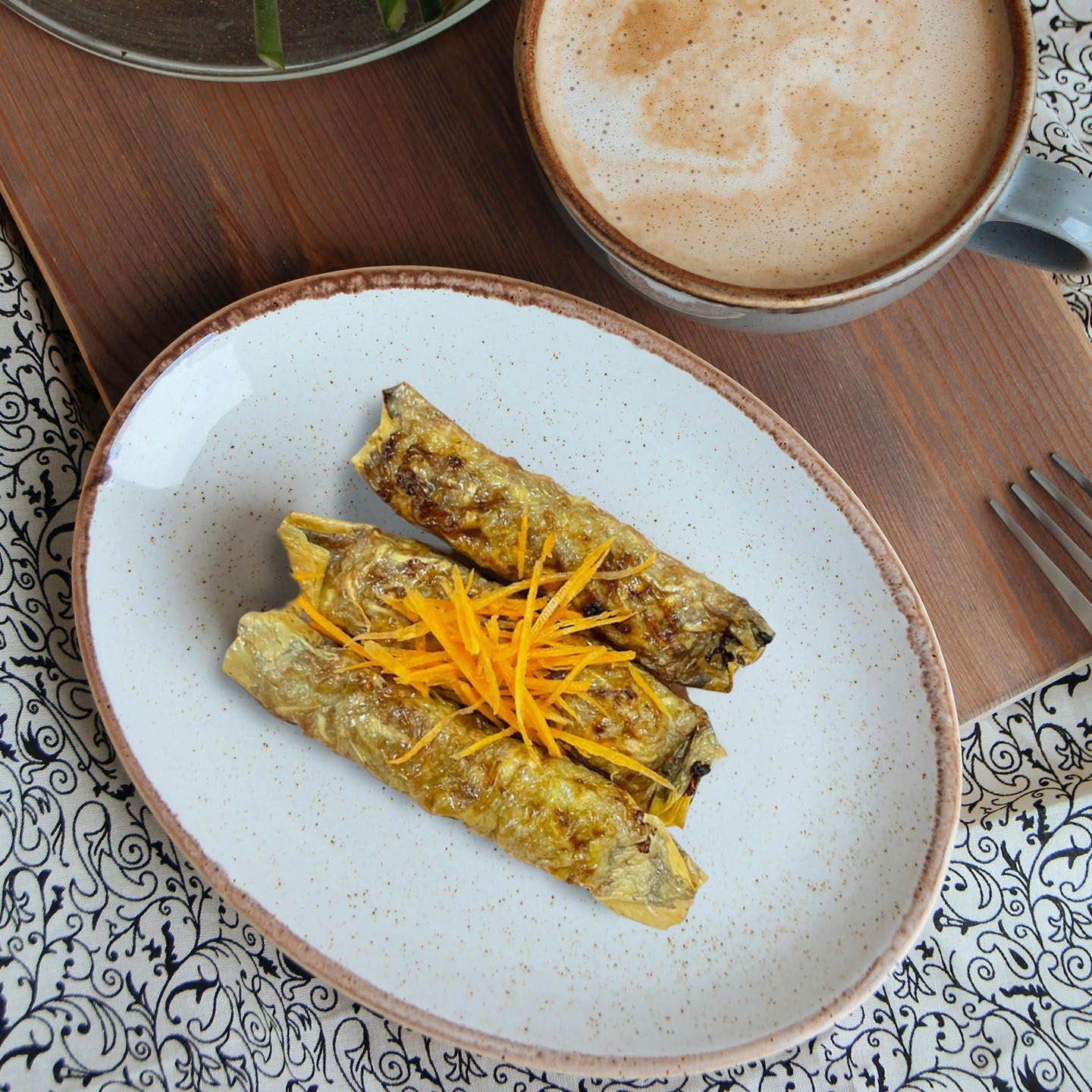
Dried bean curd skin, sized 12cm x15cm
Chicken fillet, minced
Shrimp, shelled and minced
Taukwa, mashed
Egg, beaten
Carrot, shredded
Soy sauce, less sodium
Ground white pepper
1. Wipe the bean curd skin with wet kitchen towel to remove excess salt and set aside.
2. Mix chicken fillet, shrimp, tau kwa, egg, carrot in a large bowl. Marinate the filling with soy sauce and white pepper. Divide the marinated filling into 8 equal portions.
3. Lay out the prepared bean curd skin on your work surface. Spoon one of the marinated filling and arrange along the edge of skin, leaving a ½-inch gap from the edge. Roll the filling into a slim sausage.
(mg)
Dietary fibre (g)
Sodium (mg)
4. After rolling the filling, fold the sides over and set aside. Repeat the steps until finish all the fillings.
5. Place the Ngoh Hiang into the air fryer leaving some space around each other. Air fry at 200°C for 10 minutes or until golden brown. Flip the Ngoh Hiang halfway during air-frying to make sure it’s evenly cooked.
6. Serve hot and enjoy!
This is a high-protein snack. It is recommended to have 3 servings of protein a day and spread protein intake throughout the day to maximise muscle growth. Instead of deep frying the Ngoh Hiang, we use air fry to minimise total fat intake.



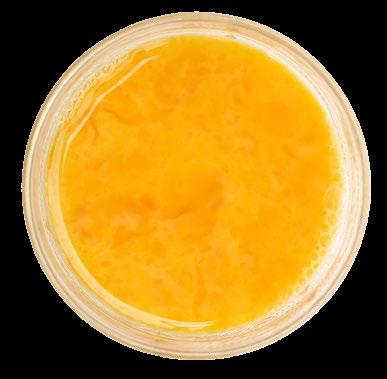
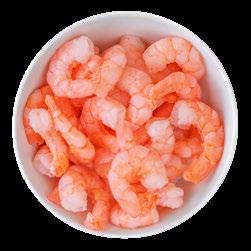



Palak leaves, frozen
Canola oil
Tomatoes, chopped
Paneer cubes
Low-fat yogurt
Salt
Herb mix:
Chopped ginger
Chopped garlic
Green chili
Onion
Spice mix:
Cumin seeds
Turmeric powder
Chili powder
Garam masala
METHODS:
440 g
1 ½ tbsps
½ cup
310 g
2 ½ tbsps ¼ tsp
1 ¼ inch
2 ½ tsps
3 ½ ⅔ tsp
tsp
tsp ⅓ tsp
1. In a pot, boil 3 cups of water with a dash of salt and blanch the palak leaves for 1-2 mins.
2. Transfer the leaves to a bowl of iced water and leave it in for 1-2 mins.
3. Remove the leaves from the iced water and press to remove excessive water.
4. In a blender, add in the palak, chopped ginger, 1 ½ tsp of garlic and green chillis.
5. Blend the mixture until it forms a smooth puree.
6. In a heated pan, add in 2 tbsp of oil and add in cumin seeds and chopped onions.
7. Once the onions turn golden brown, add in remaining 1 tsp of chopped garlic and fry for 2 mins.
Nutrition Information (Per Serving)
Energy (kcal)
Carbohydrate (g)
Protein (g)
Fat (g)
Cholesterol (mg)
Dietary fibre (g)
Sodium (mg)
8. Add in ½ cup of chopped tomatoes and fry until it softens.
9. Add in turmeric powder, chilli powder and mix well.
10. Add in pureed palak and ⅔ cup of water.
11. Simmer it for 6-7 minutes or until the pureed palak mixture is cooked.
12. Stir in salt and garam masala.
13. Add in the paneer cubes and mix it in gently before switching off the heat.
14. Stir in 2 ½ tbsp of low-fat yoghurt and serve with wholegrain options such as chapati.
Palak leaves (spinach) are rich in lutein and zeaxanthin which protect one from age-related macular degeneration. This dish is also rich in protein and calcium from paneer and yogurt.

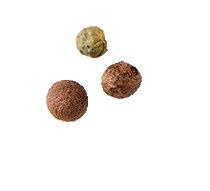
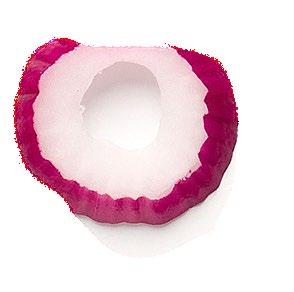

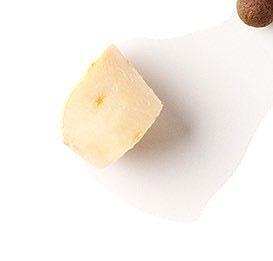
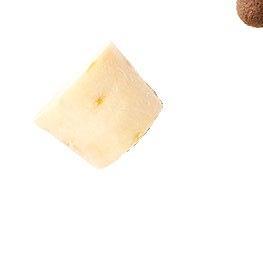
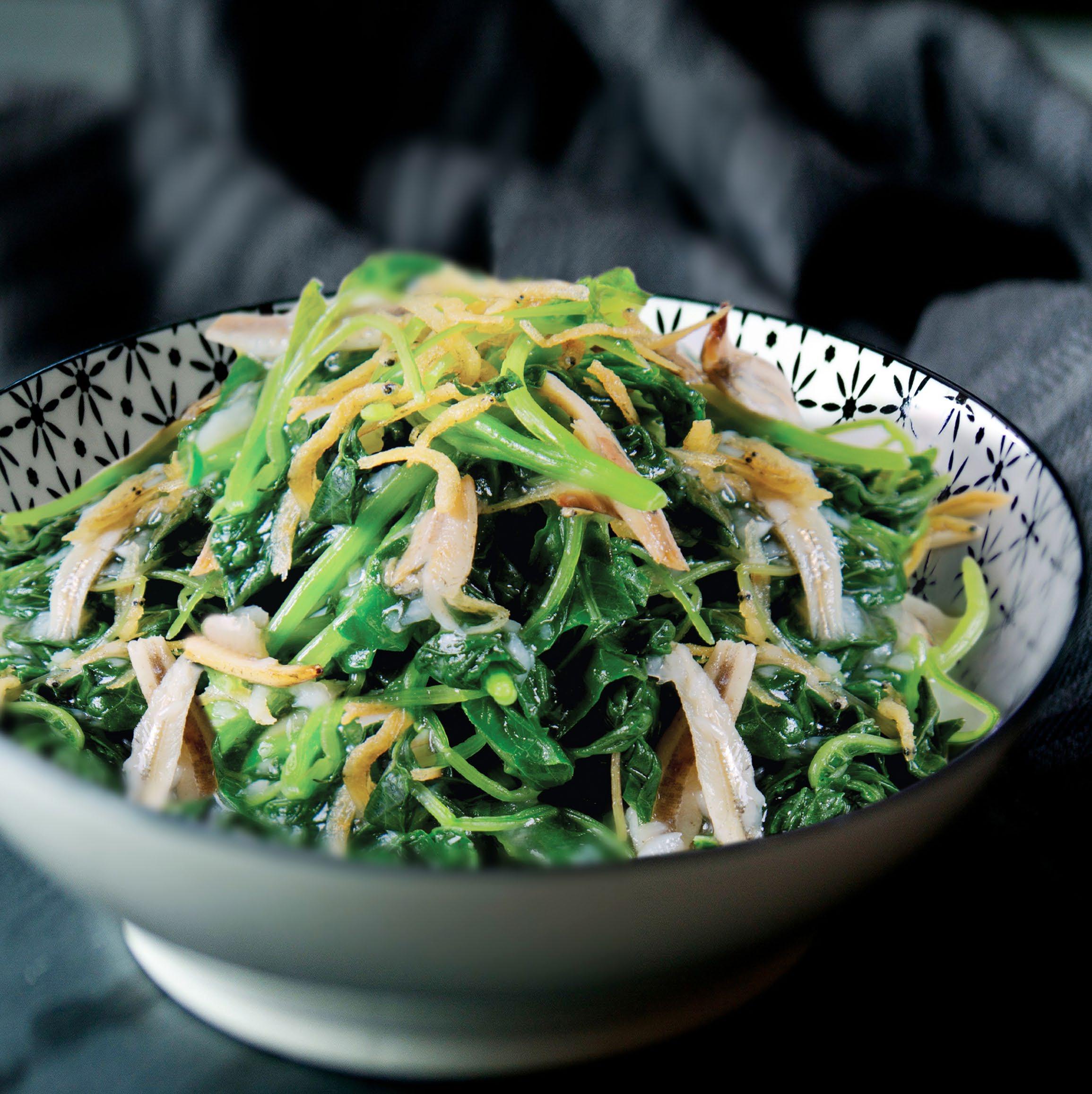
Bayam (Chinese spinach)
Ikan bilis (pre-soaked and drained)
Chicken stock with Healthier Choice Symbol
Garlic (minced)
Silver fish (pre-soaked)
(g)
(g)
(g)
Cholesterol (mg)
Dietary fibre (g)
Sodium (mg)
Optional: Add salt and pepper to taste
METHODS:
1. Peel stems of spinach leaves and slice to about 2-3 cm lengths.
2. Heat wok, add 1 tsp canola oil, sauté silver fish until golden brown. Set aside.
3. Using same wok, sauté garlic, add ikan bilis and toss continuously, followed by adding the chicken stock in 1 cup water.
4. Stir continuously until vegetables are soft.
5. Add silver fish and stir until cooked. Serve immediately.


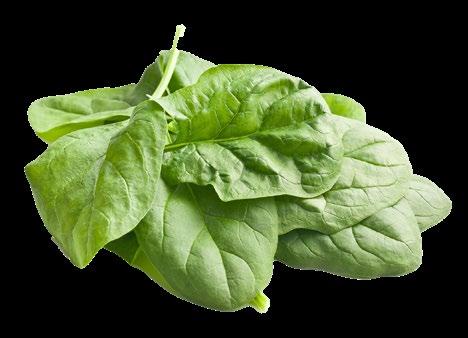
Dairy products are good source of calcium. If you are lactose intolerant or dislike dairy, calcium can also be found in other foods besides dairy. Green leafy vegetables like spinach, black sesame seeds, almond and fishes with edible bones like anchovies are good sources of calcium.


Stingray
Shallots
Garlic
Chilli padi
Dried red chilli
Brown sugar
MSG
Cooking oil
Optional: Serve with lime and sliced red onion
METHODS:
1. Wash stingray and banana leaves. Pat dry and set aside.
Nutrition Information (Per Serving)
Energy (kcal)
Carbohydrate (g)
Protein (g)
Fat (g)
Cholesterol (mg)
Dietary fibre (g)
Sodium (mg)
2. To make the sambal paste, blend the shallots, garlic, chilli padi, dried red chilli, brown sugar and MSG until smooth.
3. In a pan, stir fry sambal paste with oil over medium heat for 6 mins or until fragrant. Set aside.
4. Run banana leaves over low heat to soften before wrapping the stingray.
5. To wrap the stingray, place half of the sambal paste on the top of the banana leaf before layering it with the stingray and remaining sambal paste. Wrap it into a parcel by using toothpicks to seal off both ends.
6. Transfer onto a grilling pan or wok. Grill until charred for 10mins.
7. Garnish with lime and sliced red onions before serving.
FOOD TIP:

Many older adults may find their sense of taste fading over time. The generous use of herbs and spices can help flavour dishes without excessive use of sodium, making food tasty and friendly on our blood pressure. Other than grilling, this dish can also be prepared by steaming and baking.

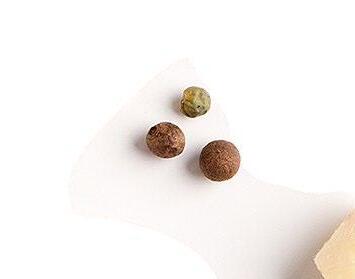
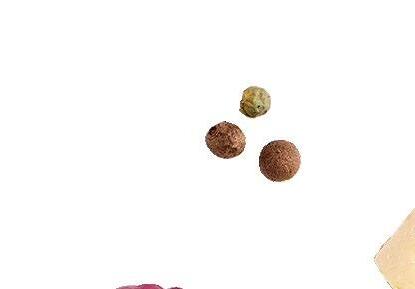


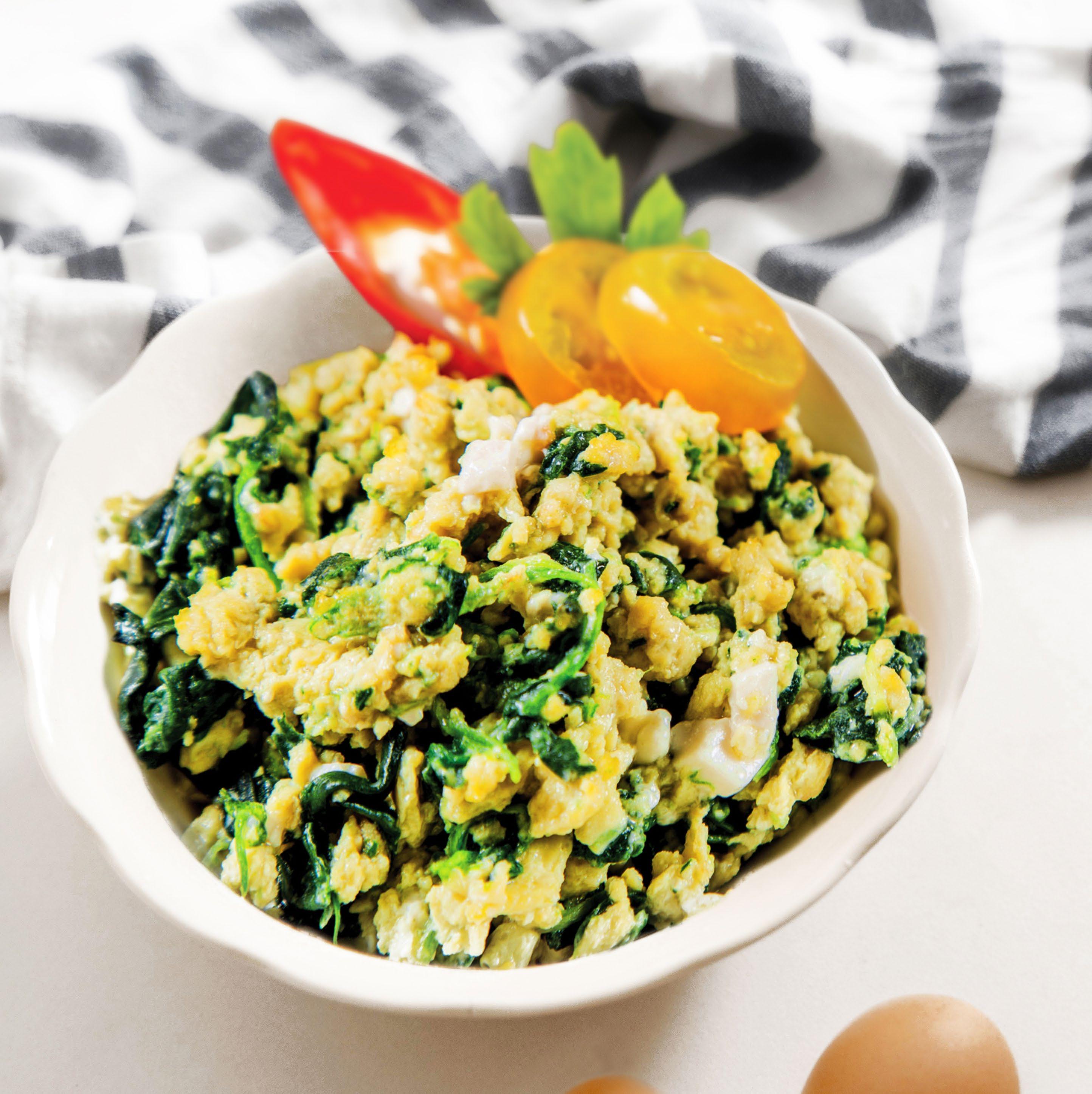
Firm tofu
Spinach leaves (loosely chopped)
Canola oil
Cumin powder
Chili powder
Garlic (minced)
Eggs (beaten)
Red medium sized onion
Optional: Add ¼ tsp Turmeric for nice yellow colour
METHODS:
Nutrition Information (Per Serving)
(kcal)
Carbohydrate (g)
Protein (g)
Fat (g)
Cholesterol (mg)
Dietary fibre (g)
Sodium (mg)
1. Add spices (garlic, cumin powder and chili powder) to a small bowl and set aside.
2. Warm a large pan over medium heat. Add Canola oil and onion slices.
Cook for 5 minutes or until the onion slices soften.
3. Add spinach, cover to steam for 2 minutes.
4. Meanwhile, use a fork to crumble drained tofu into bite-sized pieces.
5. Move spinach to one side of pan and add tofu into pan.
6. Sauté tofu for 2 minutes, then add mixed spices.

7. Stir to mix the tofu and spinach immediately, evenly distributing the dry spices.
Cook for another 5-7 minutes until tofu is slightly browned.
8. Add eggs to the pan and cook. Serve hot.
FOOD TIP:


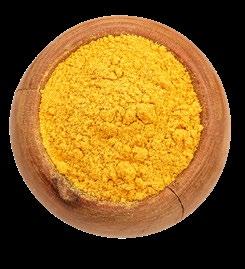
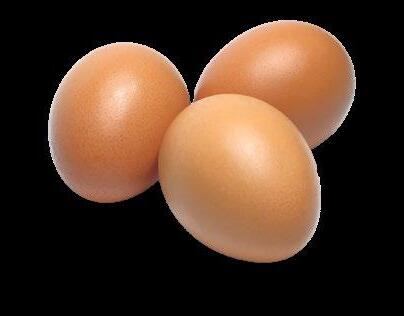
This dish is perfect for boosting your calcium and protein intake. Spinach and tofu contain calcium which reduces loss of bone mass as an adult age. Adequate calcium intake is important to reduce risk of osteoporosis.


Ingredients
Fresh broccoli, diced
Fresh eggs
Warm water
Dry wolfberries
Salt
Pepper powder
Quantity
Optional: For topping, add sesame oil and light soy sauce
METHODS:
1. Blanch diced broccoli in boiling water for 3 minutes and dish out.
Rinse with water, drain dry and set aside.
2. Beat the eggs with warm water.
3. Add salt and pepper and mix well.
4. Then, add broccoli and wolfberries, mix well.
5. Pour the egg mixture into another bowl.
6. Steam the egg mixture for 15 minutes.
Nutrition Information (Per Serving)
Carbohydrate (g)
Protein (g)
Fat (g)
Cholesterol (mg)
Dietary fibre (g)
Sodium (mg)
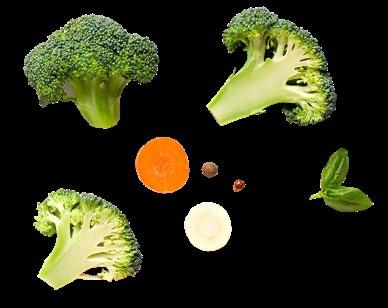
7. Drizzle sesame oil and light soy sauce (optional) over the steamed egg and serve warm.
FOOD TIP:
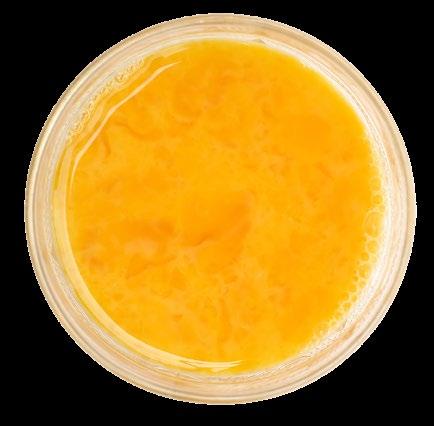
Dark green leafy vegetables like broccoli are good sources of iron which aids in supporting development of red blood cells and reduce risk of anaemia. Wolfberries are rich in vitamin A, vitamin C, antioxidants including Zeaxanthin. Iron supports the development of red blood cells and reduce risk of anaemia. Vitamin C can help increase our body’s absorption of iron. By pairing vitamin C rich foods with iron food sources like meat, poultry and green leafy vegetables can help us make the most out of the iron in our meals.



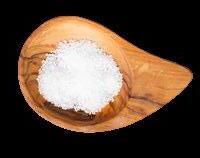
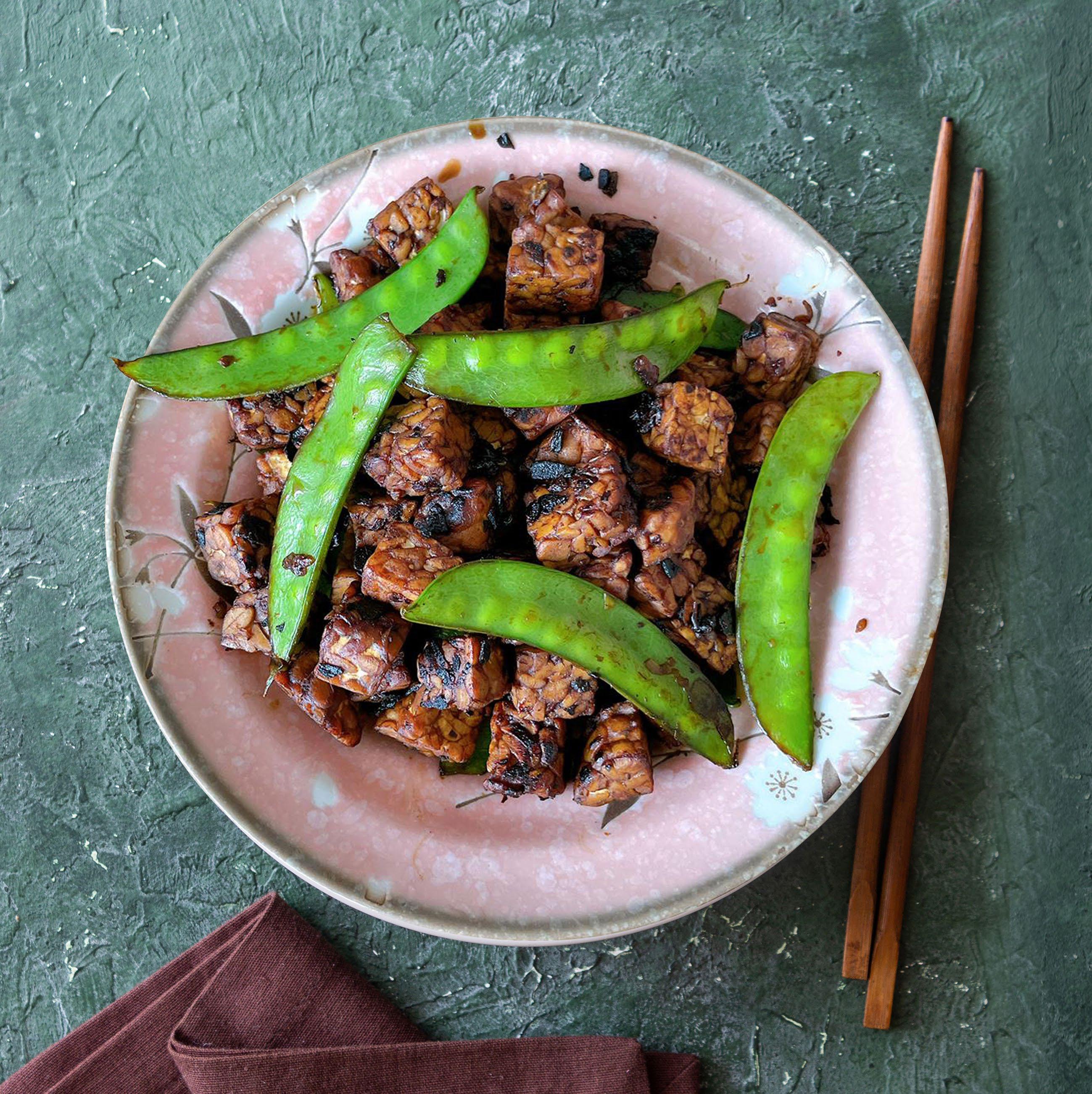
Tempeh, steamed & cubed
Shallots, diced
Peanut oil
Garlic cloves, minced
Snow peas
Soy sauce, reduced sodium Honey
Optional: Garnish with black and white sesame seeds or bird’s eye chili
METHODS:
1. In a heated pan, add in oil, shallots and tempeh.
2. Pan-fry the tempeh until they start to caramelize or about 5 minutes.
Nutrition Information (Per Serving)
(g) Cholesterol (mg)
Dietary fibre (g)
Sodium (mg)

3. Add in garlic, soy sauce and honey until all the tempeh are well-coated.
4. Add in snow peas and stir-fry for another 3-4 minutes.
5. Serve over brown rice to complete your meal.
FOOD TIP:

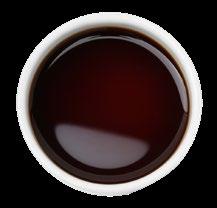
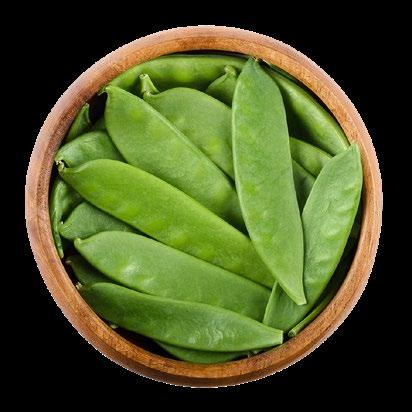
Tempeh is a good source of protein as it is made from fermented soybeans. Tempeh can contain as much protein content as animal protein. A diet high in protein aids in appetite control by increasing satiety.



Ingredients
Sesame oil
Garlic, minced
Tau kwa, diced
Light soya sauce, reduced sodium
Rice vinegar
Black sesame seeds
METHODS:
Nutrition Information (Per Serving)
Energy (kcal)
Carbohydrate (g)
Protein (g)
Fat (g)
Cholesterol (mg)
Dietary fibre (g)
Sodium (mg)
1. On a medium heated pan, add 1 tbsp sesame oil, minced garlic, and diced tofu into the pan. Stir-fry tofu till brown.
2. Add the soy sauce and rice vinegar. Stir for 2 mins,
3. Add in the sesame seeds and green onions. Remove from heat.
4. Let filling cool before filling in the dumpling wrappers.
5. Place 1 tbsp of filling at the centre of the wrap.



6. Dip finger in the water and wet the edges of the wrap. Fold the edges together, point to point. Press to seal.
7. On a medium heated pan, add the remaining sesame oil. Place the dumplings and heat till golden brown.
Flip to the other side. Serve hot!
FOOD TIP:


Did you know that 100g of tofu contains 350mg of calcium? Calcium is an essential nutrient required to prevent osteoporosis as there will be a decrease in bone mass associated with ageing.


Ingredients
Chicken, minced
Ginger, minced
Sesame oil
Oyster sauce
Xiao bai cai, finely chopped
Carrot, finely chopped
Wanton skin
Optional: Add salt and pepper to taste
METHODS:
Quantity
Nutrition Information (Per Serving)
(g) Fat (g)
(g)
Cholesterol (mg)
Dietary fibre (g)
Sodium (mg)
1. In a large bowl, add minced chicken with ginger, sesame oil, salt & pepper, oyster sauce and mix well.
2. Add in xiao bai cai & carrot.
3. Stir well to mix all the ingredients.
4. Wrap the mixture into wanton skin.
5. Cook the wantons in boiling water for 5 – 10 minutes until they float onto the surface.
6. Drain and take the wantons out from the water, serve hot.
FOOD TIP:


Poultry such as chicken is not only a good source of high biological value protein but also rich in vitamin
B12. Vitamin B12 is needed to form red blood cells, DNA, and ensure proper nerve functioning.







Tau kwa, diced
Sesame oil
Garlic, minced
Large carrot, cubed
Peas
Pack instant cauliflower rice
Soy sauce
Spring onions, chopped
METHODS:
Nutrition Information (Per Serving)
(g)
(mg)
1. Place heavy plate on the tau kwa on a few paper towels and press for at least 15mins.
2. Add in the tau kwa and stir fry till brown. Scoop out the tau kwa into a bowl.
3. Add ½ tbsp sesame oil into a medium-heated pan and add the garlic and carrots. Stir fry till fragrant.
4. Add in the cauliflower rice, peas, and remaining sesame oil. Stir fry for 5 mins.
5. Add in the tau kwa, soy sauce, and spring onions. Stir fry for another 4 mins. Serve hot!
FOOD TIP:




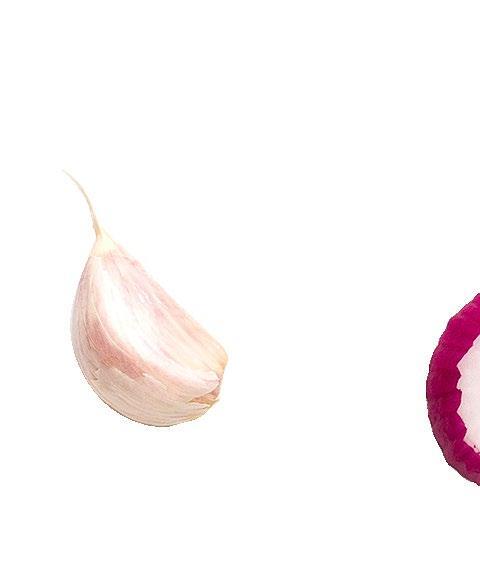
Cauliflower contains a great amount of Vitamin B9 (Folate) which is important for red blood cell formation.
Folate is vital for proper brain function. This dish is high in protein and fibre but has a lower calorie content.


Chicken breast fillet
juice
Nutrition Information (Per Serving)
Carbohydrate (g)
Cholesterol (mg)
Dietary fibre (g)
Sodium (mg)
Optional: Serve with spring onion and corn kernel
METHODS:
1. Slice chicken and marinate in a mixture of lime juice, honey, chili & garlic for 15 mins.
2. Pan fry chicken slices and marinade mixture until chicken slices are cooked. Set aside.
3. In the same pan, add oats and toss for 1 minute.
4. Add chicken stock and ½ cup water. Cook until desirable texture.
5. Top oats with chicken slices. Enjoy!
FOOD TIP:
This is a high-protein one-dish meal suitable for breakfast to boost protein intake. Instead of having plain oat, we can try a savoury oat.



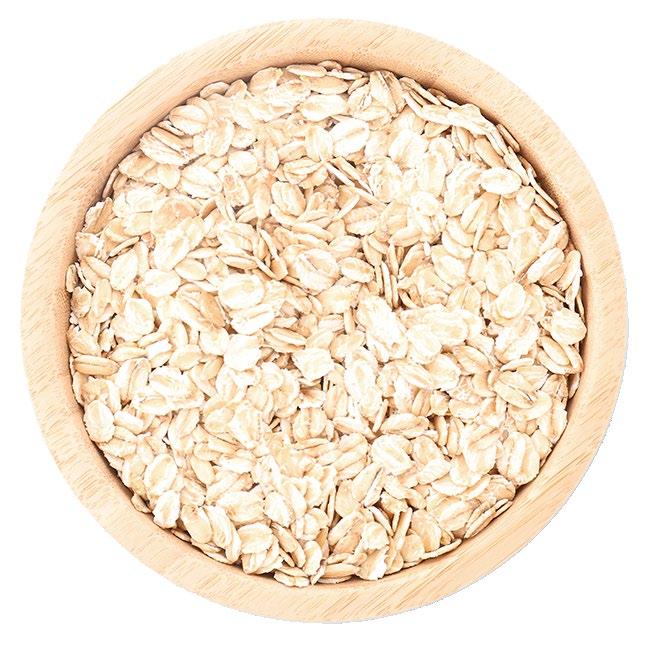


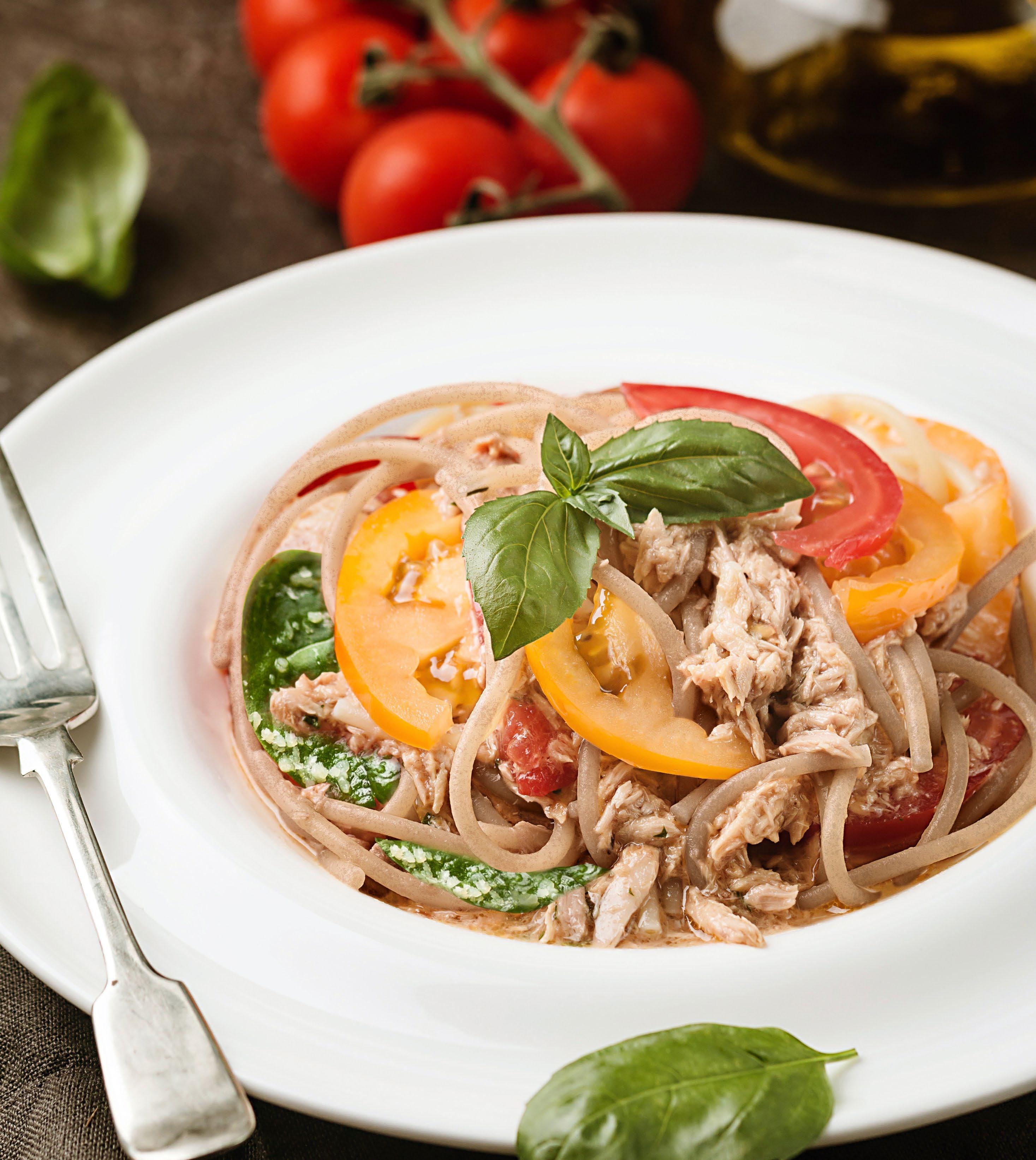
Wholegrain spaghetti, uncooked
Canned tuna, drained
Spinach, chopped
Garlic, chopped
Fish stock
Cooking cream
Parmesan cheese
Olive oil
TIP: To add more texture to the pasta, add in tomatoes whole and slice.
Optional: Garnish with sweet basil and cherry tomatoes; Add salt & pepper to taste
METHODS:
1. Cook the spaghetti as per instruction on the packaging.
Nutrition Information (Per Serving)

2. Heat up the oil on a nonstick pan, and sauté the chopped garlic till fragrant. Add in the spinach and stir fry.


3. Add in the cooked spaghetti and mix well. Pour the fish stock and the cooking cream and season with salt and pepper.
4. Sprinkle the top with parmesan cheese and garnish with English parsley and cherry tomatoes before serving.
FOOD TIP:
Tuna is a good source of omega-3 and vitamin D. Choose wholegrain spaghetti to increase the dietary fibre, B vitamins and minerals intake. Do you know that wholegrains has a higher iron content than refined grains like white rice?
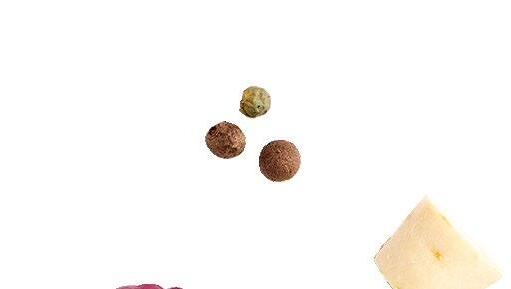

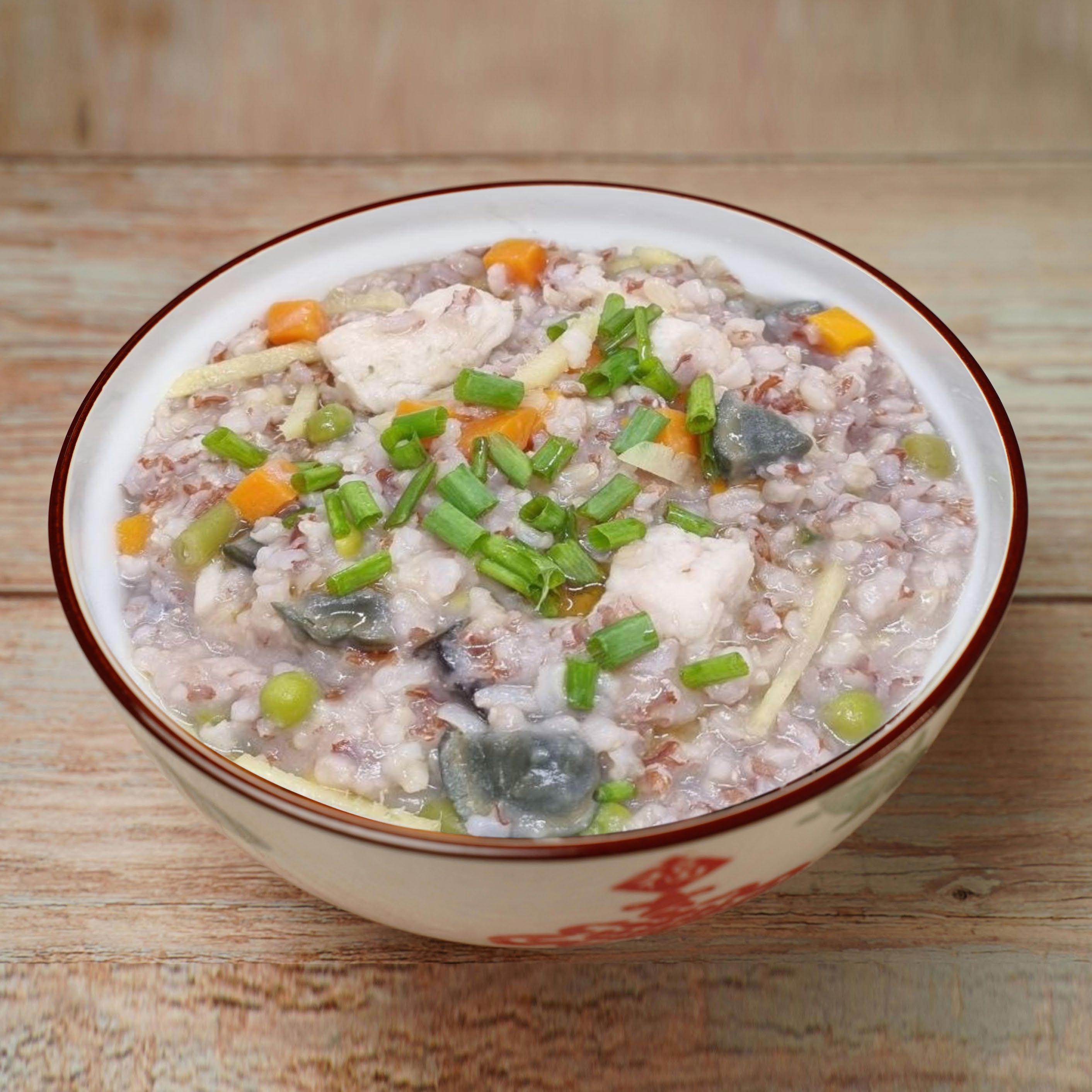
Shiitake mushrooms, dried, rinsed
Brown rice, uncooked, rinsed
Chicken stock, concentrated, lower in salt
Mixed vegetables, frozen
Dory fish, sliced
Ginger, sliced
Century egg, chopped
Sesame oil
Optional: Green onions, finely chopped
METHODS:
1. Soak dried mushrooms in 2 cup of hot water for 10 mins.
2. Slice the mushrooms and set the mushroom water aside.
3. In a rice cooker, add in rice with concentrated chicken stock, mushroom water, 5½ cups of water and mix well.
4. Add in frozen vegetables, sliced mushroom, dory fish & ginger.
5. Turn on the rice cooker.
6. Once the rice cooker has indicated the porridge is cooked, turn off the rice cooker or continue to cook longer for a thicker consistency porridge.
7. Mix in the chopped century egg.
8. Serve hot with sesame oil and spring onion.
FOOD TIP:



Do you know that sun-dried mushroom is a good source of vitamin D? It is important to have adequate vitamin D to help our body to absorb calcium to reduce risk of osteoporosis.
consumption may reduce the risk of cognitive decline too!


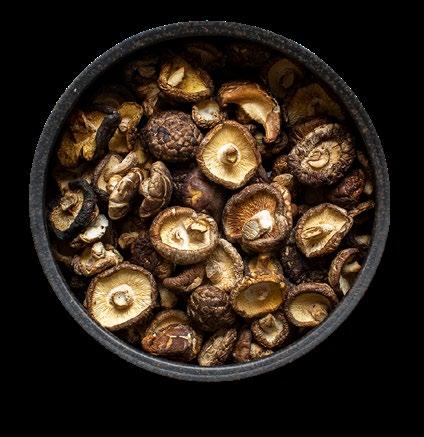
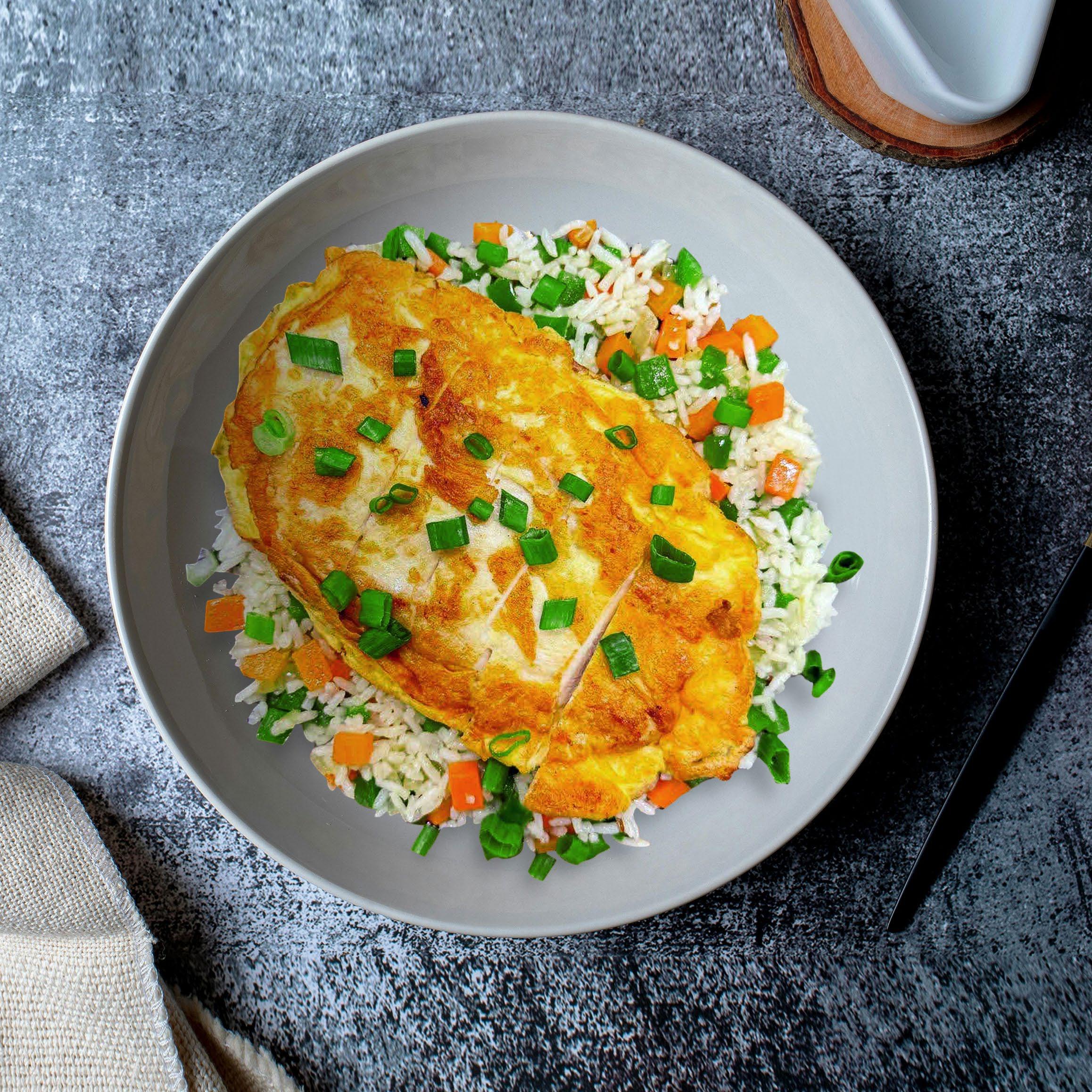
White rice, cooked
Margarine, unsalted
Onions, diced
Carrot, diced
Green capsicum, diced
Egg, medium
Parmesan cheese
Chicken breast, 4 pieces Ingredients
METHODS:
1. Prepare the cooked white rice.
Nutrition Information (Per Serving)
2. In a heated pan, heat up margarine and add in diced onion. Cook till fragrant.
3. Add in carrots, followed by green capsicum and rice. Cook well and dish equally onto 4 plates.
4. In a dish, add eggs and cheese. Mix well.
5. Marinate the chicken breast in the egg mixture.
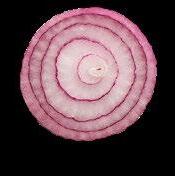

6. In a heated pan, cook the chicken till golden brown on both sides and dish it on top of the fried rice.
7. Serve immediately and enjoy!
FOOD TIP:
This dish is high in protein and calcium. Remember to include 2 servings of high-calcium food daily to support bone health. 1 serving equals to 40-60g of cheese or 2 glasses of milk or high-calcium soymilk. You may consider using brown rice to prepare this dish to make it more nutritious.



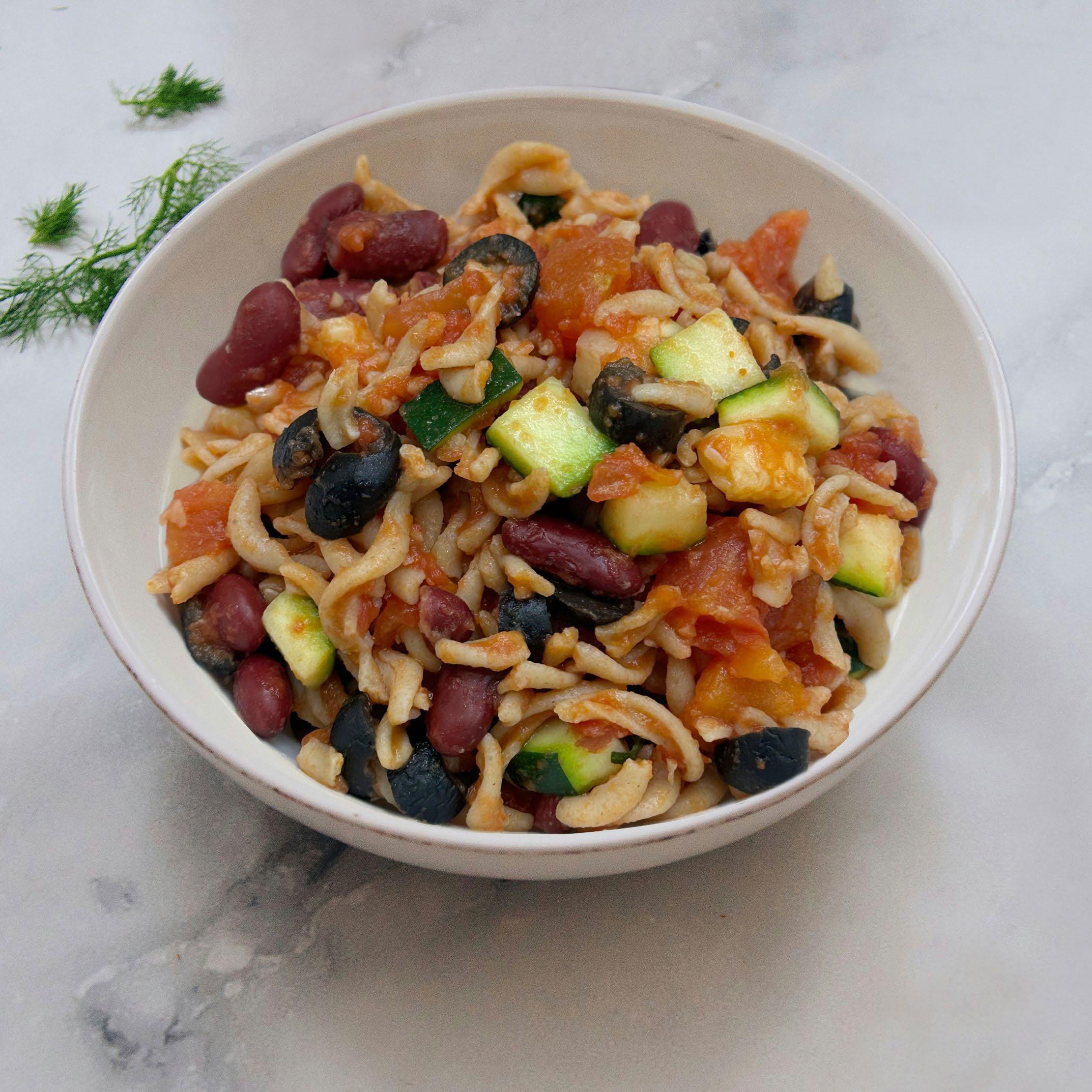
Wholemeal spirals
Olive oil
Zucchini, cubed
Garlic, minced
Chopped tomatoes, no added salt
Red kidney beans, drained
Black olives, sliced
Salt, lower sodium
TIP: Add in some water if sauce is too thick
Optional: Garnish with parmesan cheese
METHODS:
Nutrition Information (Per Serving)
Carbohydrate (g)
Protein (g)
Fat (g)
Cholesterol (mg)
Dietary fibre (g)
Sodium (mg)
1. Boil pasta per package instructions, drain and rinse with cold water. Set aside
2. In a saucepan, heat oil over medium heat. Fry 2 cloves garlic for 2 mins.
3. Add in canned tomatoes and ¼ tsp salt. Simmer for 10 mins.
4. In a frying pan, heat oil over medium heat. Add in 2 cloves garlic and fry for 2-3 mins.
5. Add in zucchinis and ¼ tsp salt, fry for 2-3 mins.
6. Add in kidney beans and olives and stir for 1 min.
7. Stir in the pasta for 1 min before adding in sauce.
8. Mix well, garnish and enjoy
FOOD TIP:



Beans are excellent sources of protein, fibre and minerals. Red kidney beans are rich in iron, which is essential for older adults to reduce risks of anaemia. Mediterranean diet has been shown to reduce risk of cognitive decline. This dish fulfils the Mediterranean diet concept as it is made with wholegrains (wholemeal spirals), legumes (red kidney bean) and olive oil.






Ingredients Quantity
Mixed rice (at least 20% wholegrain):
White rice
Brown rice
Peeled carrot, julienned
Japanese unpeeled zucchini, sliced
Baby spinach
Salmon with skin, diced
Sesame oil
Gochujang red chilli paste
eggs
METHODS:
Nutrition Information (Per Serving)
Energy (kcal)
Carbohydrate (g)
Protein (g)
Fat (g)
Cholesterol (mg)
Dietary fibre (g)
Sodium (mg)
1. Marinate sliced zucchini with ½ tbsp of Gochujang red chilli paste. Leave aside.
2. Rinse white rice and brown rice before adding to a rice cooker and add in 2¼ cups of water.
3. Prepare soft boiled eggs by air frying whole egg (with shell) at 100⁰C for 10 mins. Leave aside.
4. Separately, pan-fry diced salmon until cooked and stir-fry carrots until soft with ½ tbsp. of oil. Set aside.
5. Stir-fry marinated zucchini for 3-4 minutes with remaining ½ tbsp. of sesame oil. Set aside.
6. Boil spinach and drain well. Set aside.
7. Assemble dish by adding mixed rice in a bowl and add in ½ tbsp. of Gochujang red chilli paste.
8. Top with cooked vegetables, salmon and egg. Mix well before eating.
FOOD TIP:
Salmon is a good source of omega-3 fatty acids which benefits not only heart health, but also eye health. Oily fish or omega-3 intake help to reduce the risk of age-related macular degeneration. Other omega-3 rich foods include tuna, mackerel and sardines.


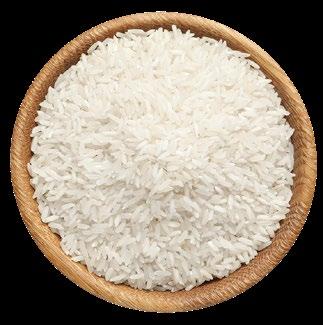




Ingredients Quantity
Eggs
Shiitake mushroom, dried
Brown rice vermicelli, uncooked
Olive oil
Block soft tofu, cubed
White miso paste
Bok choy, small, chopped, blanched
2 nos
(20 g)
Optional: Garnish with chopped spring onion and sliced red chili
METHODS:
Nutrition Information (Per Serving)
Energy (kcal)
Carbohydrate (g)
Protein (g)
Fat (g)
Cholesterol (mg)
Dietary fibre (g)
Sodium (mg)
1. To prepare the poached eggs, place a cling film over a small soup bowl and crack an egg. Gather the edges of cling wrap together and twist. Place them in boiling water for 4 minutes and set aside.
2. Soak dried shiitake mushrooms in 2 cups of hot water for 10 minutes, slice and set aside.
3. Meanwhile, boil vermicelli for 5 minutes and set aside.
4. In a pot, heat olive oil and sauté sliced mushrooms for 2 minutes.
5. Add 4 cups of water and soft tofu to the pot, bring to simmer for 8 minutes. Stir in miso paste.
6. Add in chopped bok choy and cook for 2 minutes.
7. To assemble the dish, place vermicelli into 2 separate serving bowls and scoop half of the cooked broth into each bowl.
8. Serve with poached egg and enjoy!
FOOD TIP:
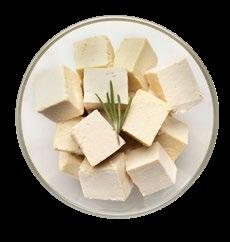



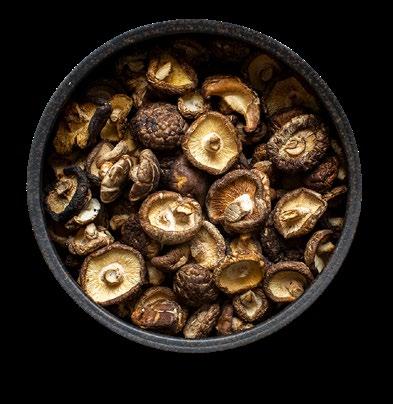
This is a healthy and balanced one-dish meal. Choose brown rice vermicelli instead of white vermicelli as wholegrains intake has been shown to reduce the risk of type 2 diabetes, heart diseases and cancers. The protein sources of this dish are egg and tofu, which is suitable for ovo-vegetarians.


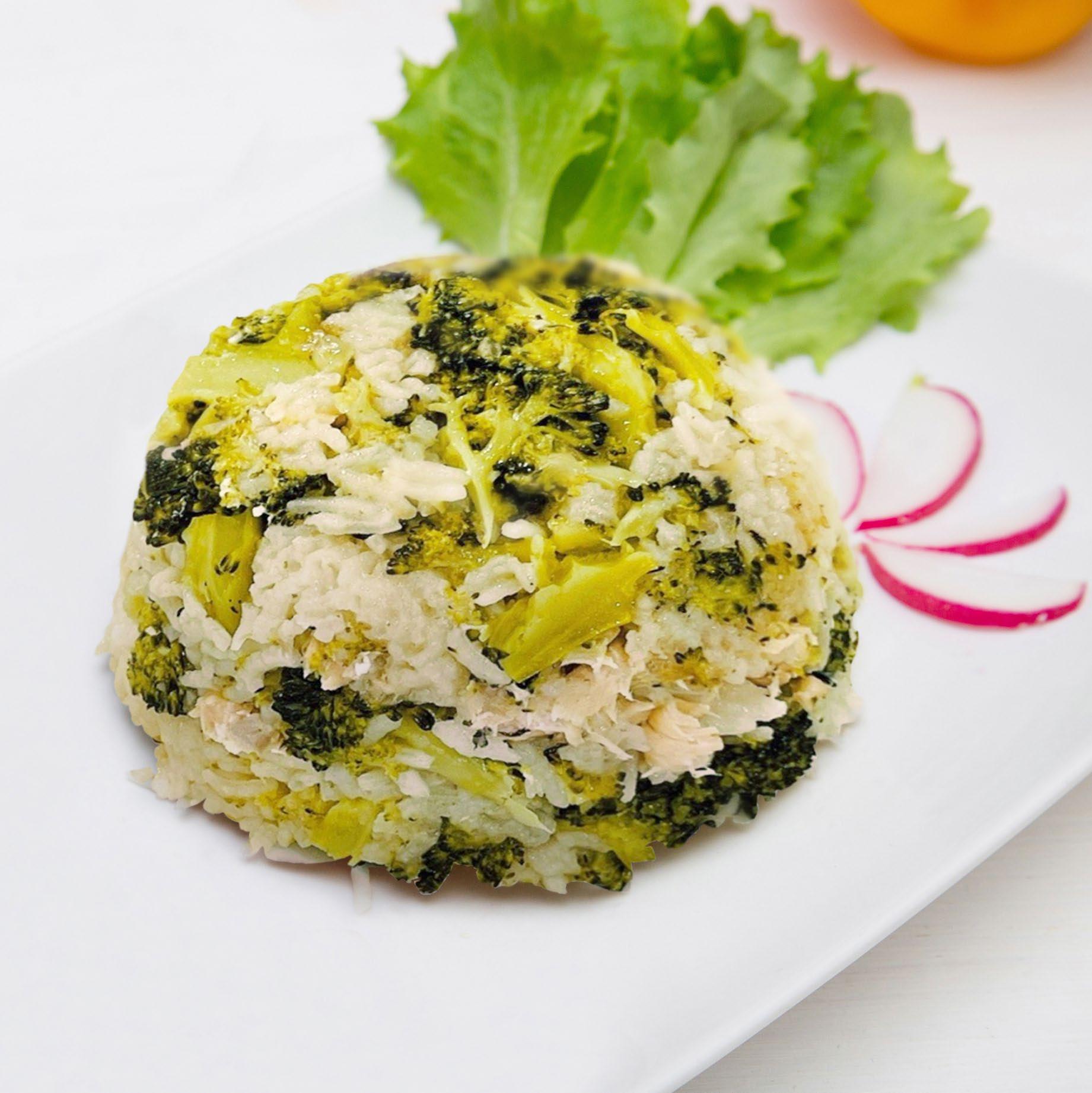
Chicken stock, concentrated, lower in sodium
Olive oil
Salmon
Margarine
Onion, medium, diced
Garlic, diced
Brown rice, washed
Broccoli, cut into small florets
METHODS:
Nutrition Information (Per Serving)
Carbohydrate (g)
Protein (g)
Fat (g)
Cholesterol (mg)
Dietary fibre (g)
Sodium (mg)
1. Add 360ml of hot water to 2 tsps of concentrated chicken stock and set aside.
2. In a heated pan, add olive oil and sear all sides of the salmon till the exterior turns crispy. Remove and set aside.
3. In a heated rice cooker, add in margarine and sauté the garlic and onion until fragrant.
4. Add in the washed rice and stir fry for 1 min.
5. Add chicken stock and cover the lid.
6. When the stock has come to a boil, add in the broccoli florets & salmon and covering it once again.
7. Simmer until the rice is cooked.
8. Mix well the rice, broccoli and salmon.
9. Serve hot and enjoy!
FOOD TIP:
This one dish meal also meets some of the criteria for a Mediterranean diet as it includes wholegrains (brown rice), green leafy vegetables (broccoli), olive oil and salmon fish. This dish is high in fibre, protein and omega-3. Do you know that salmon is also a good source of vitamin D?
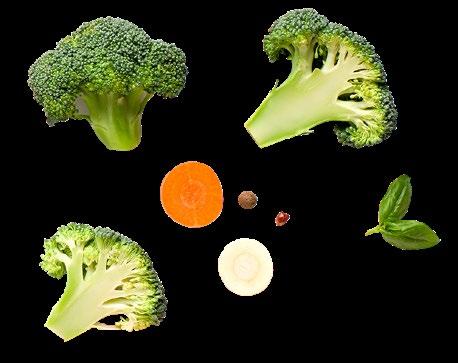

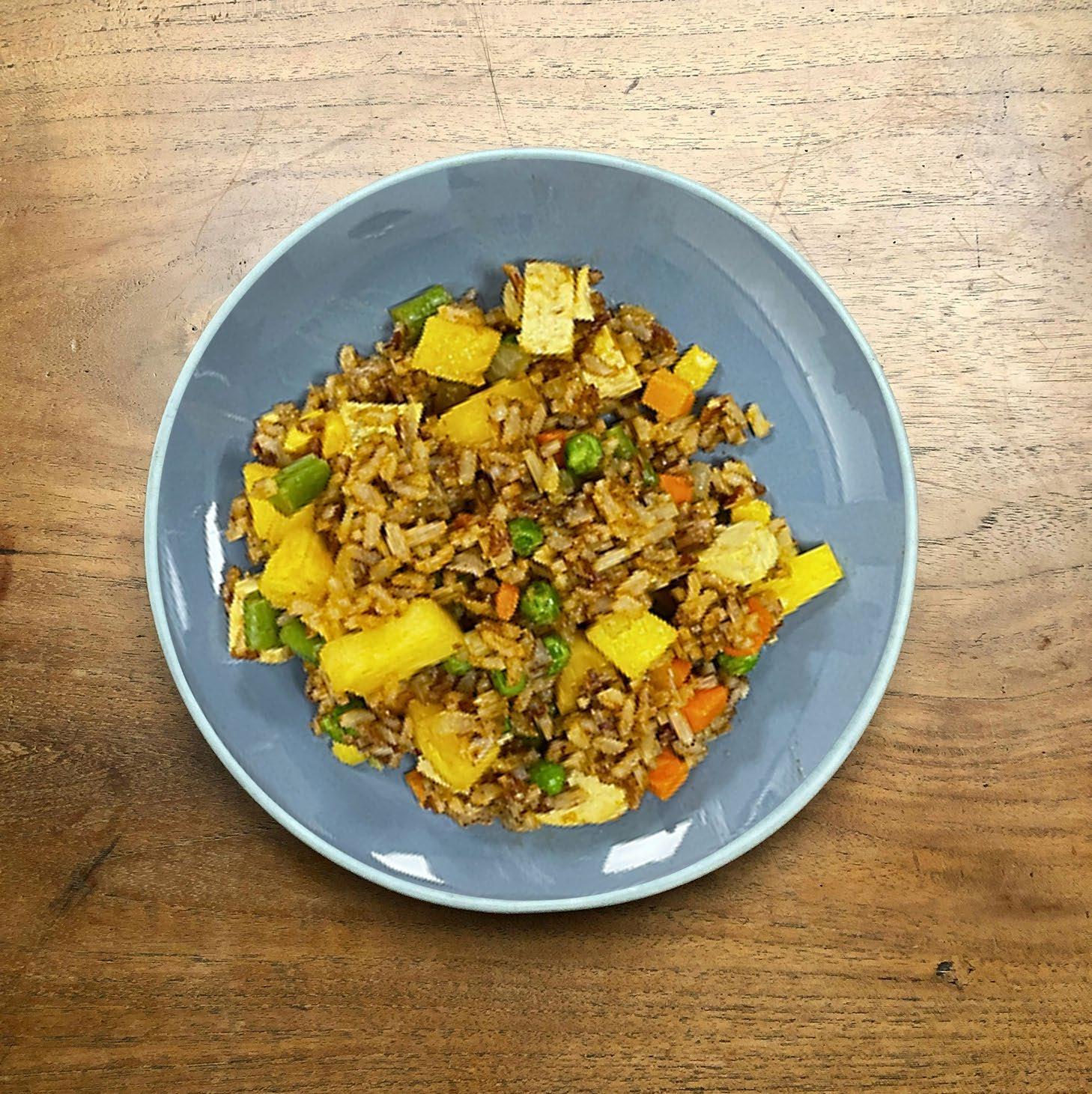
Ingredients
Canola oil
Onion, diced
Quantity
Nutrition Information (Per Serving)
Mixed vegetables, frozen
Tau kwa, cubed
Cooked brown rice
Curry powder
Pineapple, diced
Soy sauce, reduced salt
Optional: Garnish with spring onions and roasted cashew nuts
METHODS:
1. In a wok, add oil and sauté the onion until aromatic over medium heat.
2. Add the mixed vegetables.
3. Add in the tau kwa and stir with a spatula until it is slightly golden brown.
4. Add in the cooked brown rice.
5. Sprinkle the curry powder.
6. Stir in the pineapple.
7. Add soy sauce and stir all the ingredients until well mixed.
8. Sprinkle spring onion and roasted cashew nuts and serve!
FOOD TIP:
(g)
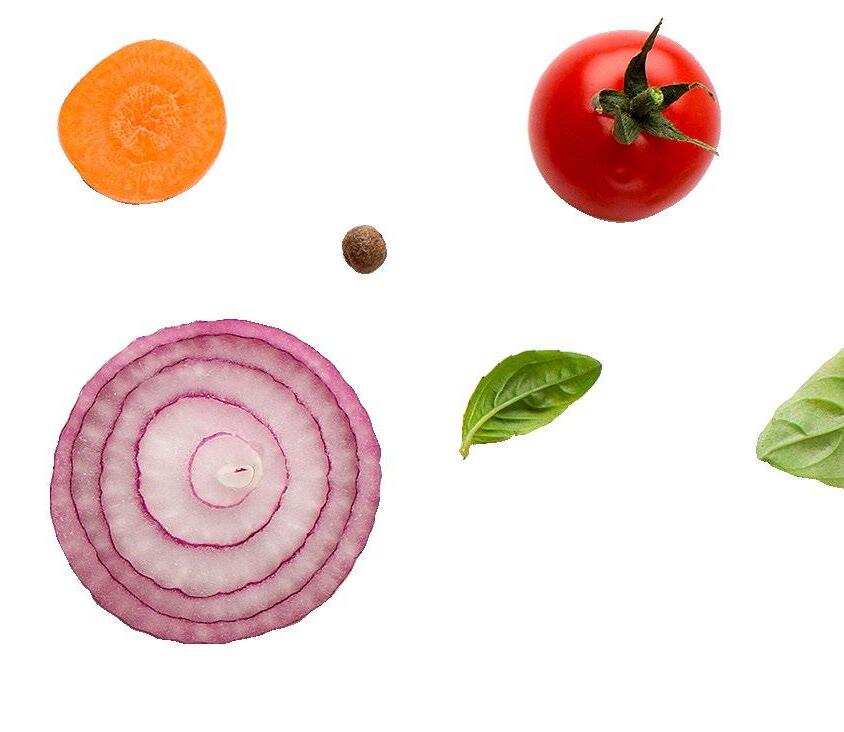
This plant-based one-dish meal is not only delicious but rich in dietary fibre, protein and calcium. Cashew nuts help to enhance the texture of the dish and it is also a good source of protein and unsaturated fat.


Quantity Ingredients
Shiitake mushrooms, dried
Olive oil
Firm tofu, cubed
Tempeh, cubed
Long beans, chopped
Pumpkin, diced
Brown rice, uncooked, rinsed
Light soya sauce, lower in sodium
METHODS:
Nutrition Information (Per Serving)
Energy (kcal)
Carbohydrate (g)
Protein (g)
Fat (g)
Cholesterol (mg)
Dietary fibre (g)
Sodium (mg)
1. Soak dried shiitake mushrooms in 2 cups of hot water for 10 minutes. Slice and set aside.
2. In a pan, heat ½ tablespoon of olive oil and fry tofu and tempeh until golden brown and set aside.
3. In the same pan, heat remaining oil and stir fry mushrooms, pumpkin, long beans and raw brown rice for 5 minutes.
4. Turn off heat and transfer into the rice cooker along with the tempeh and tofu.
5. Add 1½ cups of water and soya sauce, give it a good stir.
6. Turn rice cooker on and cook.
7. Serve warm and enjoy.
FOOD TIP:
Pumpkin contains beta-carotene (vitamin A) which gives it a bright orange colour. Vitamin A is important to maintain good vision.





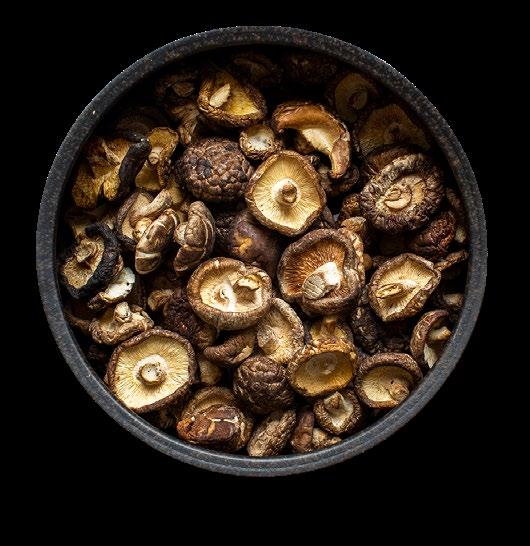
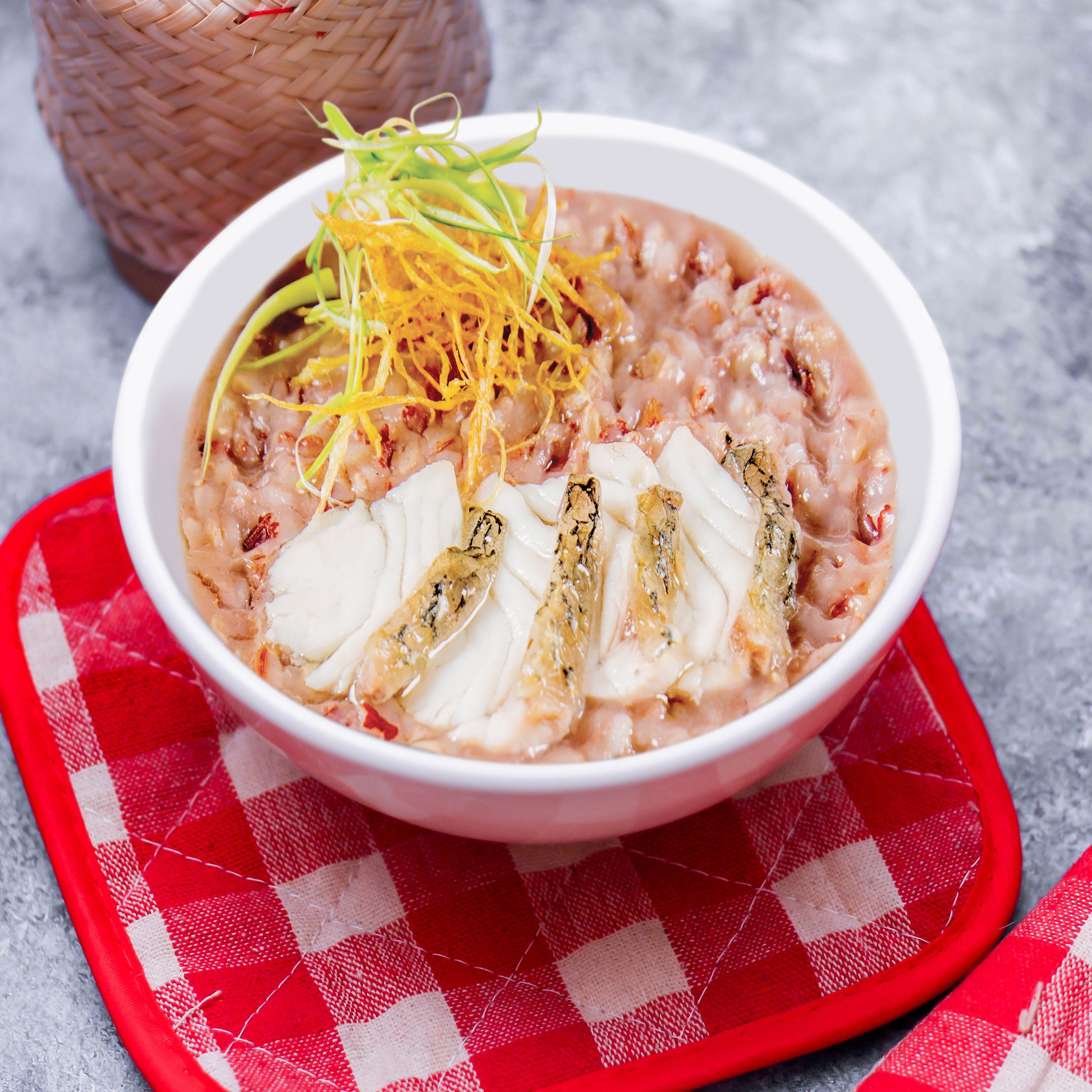
Quantity Ingredients
Sea bass fish (sliced)
Brown rice (uncooked)
Carrot (diced)
Corn starch
Light soy sauce
Sesame oil
Optional: Garnish with spring onion
METHODS:
1. Add washed rice and 3 cups water to a pot. Bring to a boil.
Nutrition Information (Per Serving)
(mg)
2. Simmer for about 20 minutes. Stir bottom of pot occasionally to prevent rice from sticking to the base.
3. Meanwhile, marinate the fish slices with 1 tsp light soy sauce and corn starch. Set aside.
4. When congee has cooked to preferred consistency, place fish slices and diced carrots into congee. Cook for about 5 minutes under low heat.
5. Season congee to taste with light soy sauce and sesame oil.
6. Garnish congee with spring onions and serve hot.
FOOD TIP:

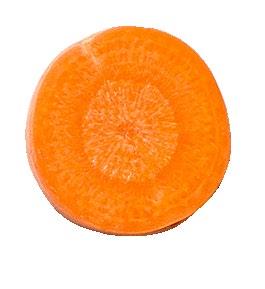
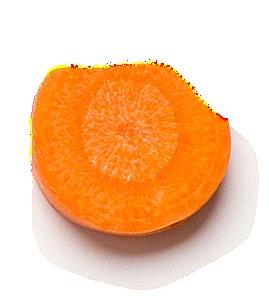
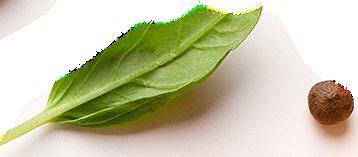
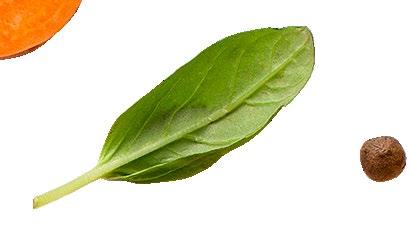
Try to use brown rice to cook congee to increase the nutritional value of the meal. Do you know that brown rice contains more protein, iron, fibre, B vitamins and unsaturated fat as compared to white rice?



Ingredients
Brown rice bee hoon, soaked and drained
Rice bran oil
Ginger, sliced
Concentrated chicken stock, lower in sodium
Toman fish, sliced
Tomato, cut into wedges
Sesame oil
Evaporated milk, low fat
Quantity
Nutrition Information (Per Serving)
(g)
(g)
(g)
Cholesterol (mg)
Dietary fibre (g)
Sodium (mg)
Optional: Garnish with chopped spring onions; Pepper to taste
METHODS:
1. In a heated wok, add in rice bran oil.
2. Stir-fry the sliced ginger until fragrant.
3. Pour in 750ml of water and bring it to a boil.
4. Add in concentrated stock and boil for another 2 minutes.
5. Add in bee hoon, sliced Toman fish, tomatoes, sesame oil and low fat evaporated milk.
6. Cook for 2 minutes or until the fish is cooked.
7. Add spring onion and pepper and enjoy!
FOOD TIP:
To increase the fibre content in this dish, use brown rice vermicelli instead of white rice vermicelli. Wholegrains contain more dietary fibre as compared to refined grains, which helps to reduce the risks of type 2 diabetes, heart attack and stroke. You may incorporate more vegetables like bok choy into the dish for more fibre as well.


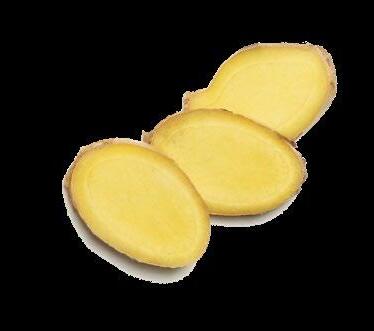

Ingredients
Wholemeal spaghetti, uncooked
Olive oil, extra virgin
Garlic, minced
Prawns, deshelled
Spinach, frozen
Yellow capsicum, julienned
Salt, reduced sodium
Optional: Chili flakes to taste
METHODS:
Quantity
Nutrition Information (Per Serving)
1. In a large pot, bring 1½ litres of water to a boil and cook the wholemeal spaghetti for 12 mins.
2. Keep 6 tbsp of the pasta water and drain the rest.
3. In a heated pan, add olive oil & stir fry the garlic until fragrant.
4. Add in the prawns, spinach and capsicum and stir-fry for 5 mins or until the prawns are cooked.
5. Add in pasta, pasta water, salt chili flakes and mix well.
6. Serve hot and enjoy!
FOOD TIP:



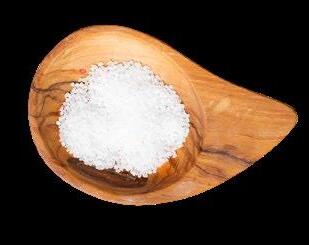

Spinach is high in iron, folate and calcium. Do not worry – frozen vegetables do retain their nutritional value and can be a convenient way to add fibre and minerals to your meals on a busy day!



Ingredients
Wholegrain noodle
Tomatoes
Eggs, medium
Rice bran oil
Soya sauce, reduced salt
Onion
Garlic Round spinach
Quantity
Optional: Serve with chopped spring onions; Add pepper to taste
METHODS:
1. Cook the noodle for 2-3mins and set aside.
2. Diced the tomatoes into small pieces.
3. Wash the spinach thoroughly and set aside.
4. In a small bowl, beat the eggs and set aside.
Nutrition Information (Per Serving)
Carbohydrate (g)
Protein (g)
Fat (g)
Cholesterol (mg)
Dietary fibre (g)
Sodium (mg)
5. In a pan with heated oil, stir fry the onion and garlic till golden brown.
6. Add the diced tomatoes and cook until soft.
7. Add in the soya sauce and 500ml of water. Bring it to a boil.
8. Stir the soup while adding the egg mixture slowly.
9. Blanch the spinach and set aside.
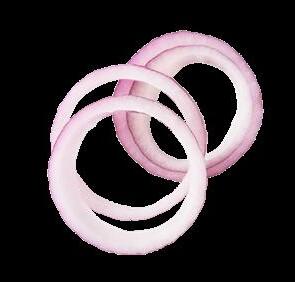

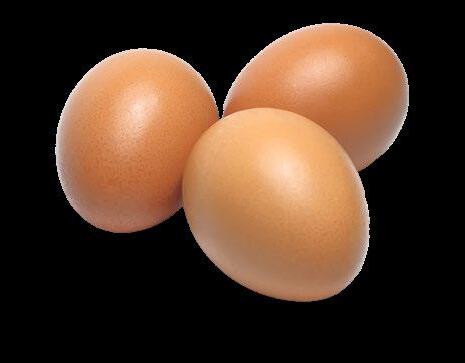
10. Pour the soup over the cooked noodles. Top with the blanched spinach or spring onion and pepper. Enjoy!
FOOD TIP:
Eggs is a great pantry staple with a long shelf-life when refrigerated and high versatility. Not only high in protein, it also contains iron and folic acid. The yolks are also high in lutein and vitamin D.


Mixed rice, uncooked:
White short-grain rice
Brown rice
Rice marinade:
Rice vinegar
Sugar
Tuna in mineral water, flaked & drained
Japanese mayonnaise
“Lower sodium” soy sauce
Capsicums, mixed colour & julienned
Furikake seasoning
Nori seaweed sheets
TIP: Wet the knife blade edge each time you cut the sushi roll to prevent the seaweed and rice from sticking to the blade.
METHODS:
1. Add in rinsed mixed rice in a rice cooker with 1¾ cup of water.
2. Once cooked, add in rice marinade and set aside.
3. Blanch capsicum and set aside.
Nutrition Information (Per Serving)
(kcal)
Carbohydrate (g)
Protein (g)
Fat (g)
Cholesterol (mg)
Dietary fibre (g)
Sodium (mg)
4. In a bowl, mix rice, tuna flakes, Japanese mayonnaise, Furikake seasoning & soy sauce.
5. Divide the rice mixture and capsicums into 4 equal portions.
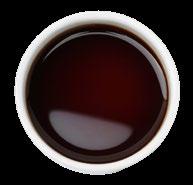
6. Place the Nori sheet on a bamboo mat, then cover the sheet with an even layer of rice (1 portion).
Smooth gently with the rice paddle.
7. Layer the capsicums (1 portion) horizontally - 1” from the bottom of the seaweed sheet.
8. Roll it up tightly.
9. Cut each roll into 6-7 equal pieces and serve.

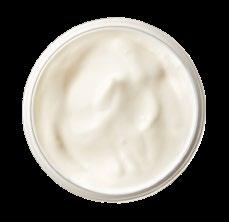
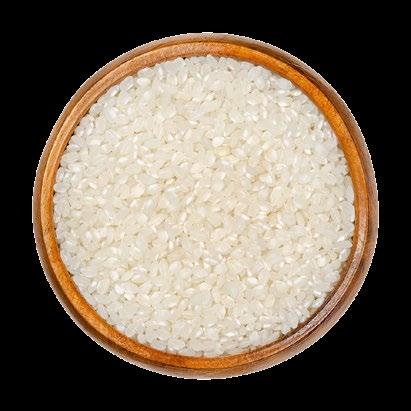
Oily fishes like tuna and salmon are a good source of omega-3 fatty acids which reduce the risk of age-related macular disease and improves cardiovascular health. If you do not like the tuna, you may swap it out for canned salmon as well. Remember to choose the lower in sodium options instead of those soaked in brine.



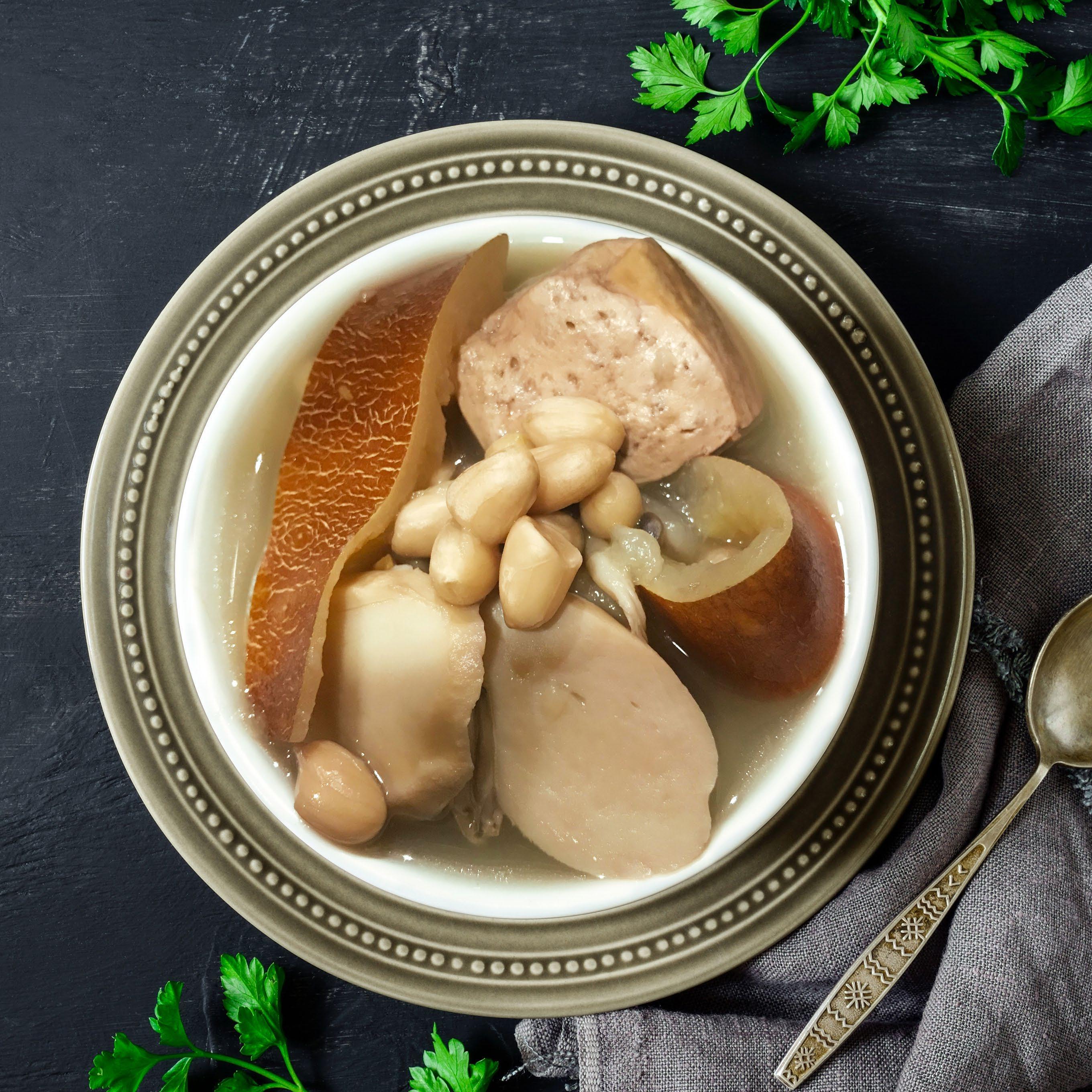
Old cucumber
Peanut
Tau kwa
White shimeiji mushroom
Oyster king mushroom
Water chestnut
Candied jujube OR
METHODS:
1. Cut old cucumber, tau kwa, and water chestnuts into cubes.
2. Slice the candied jujube/red dates into half.
3. Slice the oyster king mushroom.
4. Boil the water in a pot.
5. Add in all ingredients into the pot of boiling water.
6. Simmer till peanuts turns soft.
FOOD TIP:

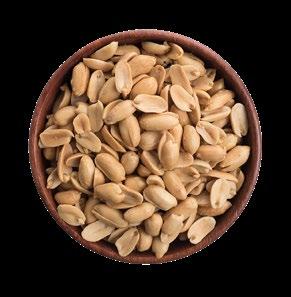

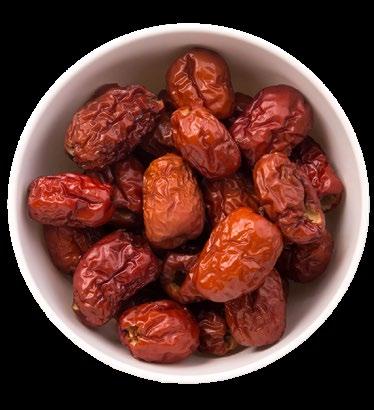
Do you know that peanuts contain more unsaturated fat (healthier fat) than saturated fat (unhealthy fat)?

Soups are a great source of fluids and can help keep elderly hydrated. However, do remember to eat the tau kwa and peanuts to reap the beneficial nutrients like protein, fibre and unsaturated fats, they contain!


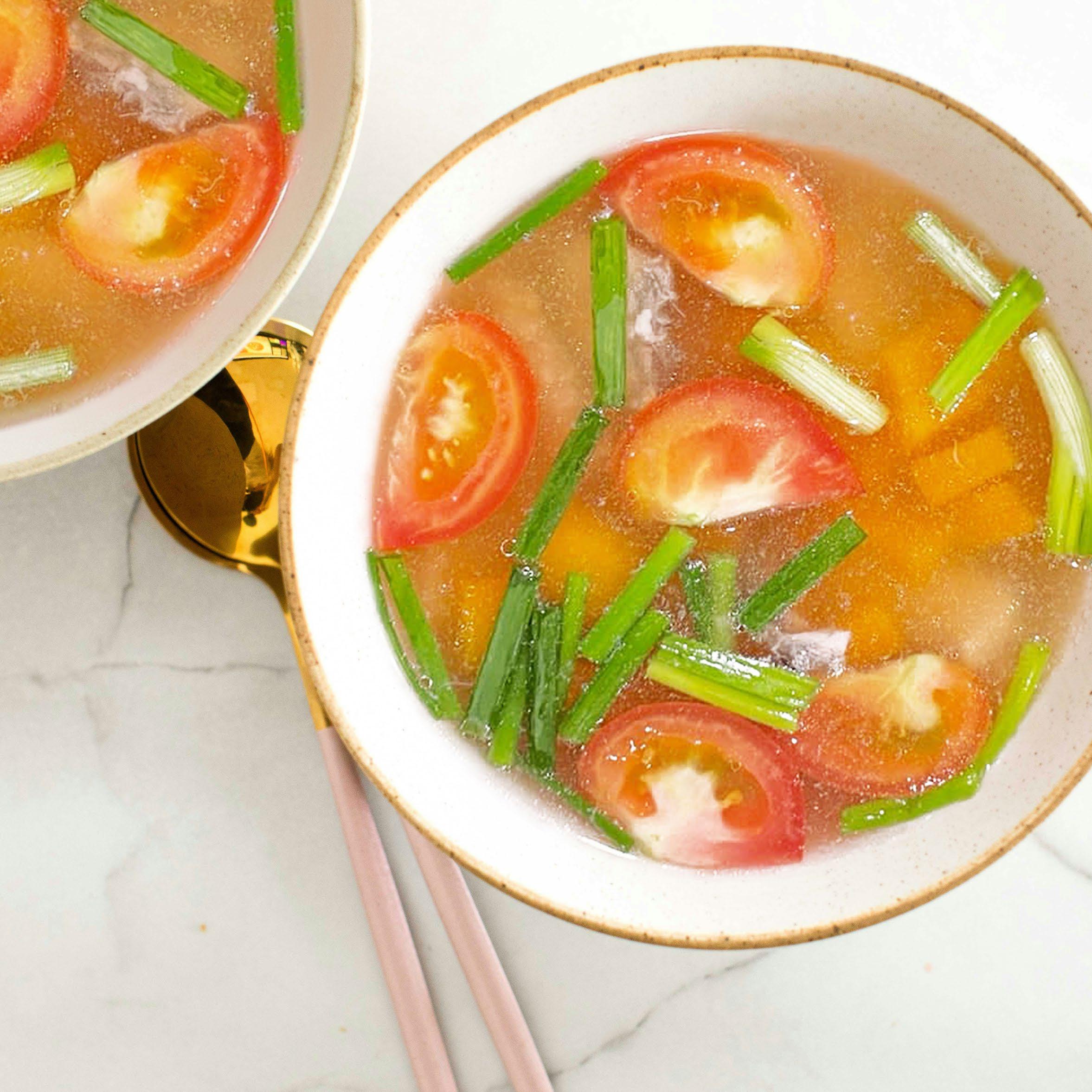
Quantity Ingredients
Ginger Salt
Pepper
Sesame oil
Seabass, deboned and sliced
Fish bone (from fish above)
Pumpkin
Tomato, wedged
Water
Optional: Garnish with spring onion
METHODS:
Nutrition Information (Per Serving)
1. Thinly slice 10 pieces ginger and crush the remaining ginger to obtain its juice.
2. Marinade sliced fish with ginger juice, salt, pepper and sesame oil.
3. Prepare fish stock in a pot by boiling water with fish bones and 5 pieces sliced ginger. Boil for 30-60 minutes.
4. Filter and drain away impurities to obtain clear soup and place into same pot to continue to boil.
5. Once the soup boils, add in pumpkin and the remaining 5 pieces sliced ginger.
6. Add marinated sliced fish.
7. Lastly, add tomato wedges
8. Leave to boil until fish is cooked.
9. Remove from stove and serve in individual bowls.
FOOD TIP:
This dish is high in Vitamin A (from pumpkin and tomato). Vitamin A promotes and maintains good vision. This soup will help the elderly to get hydrated while providing protein. Elderly can take this soup with rice or add noodles into the soup.

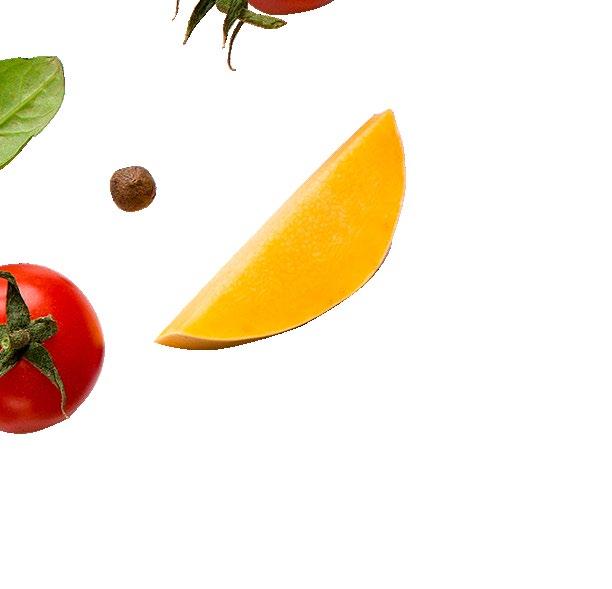
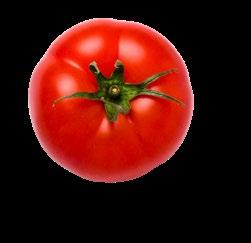


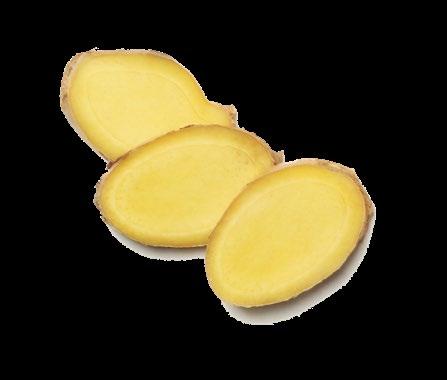
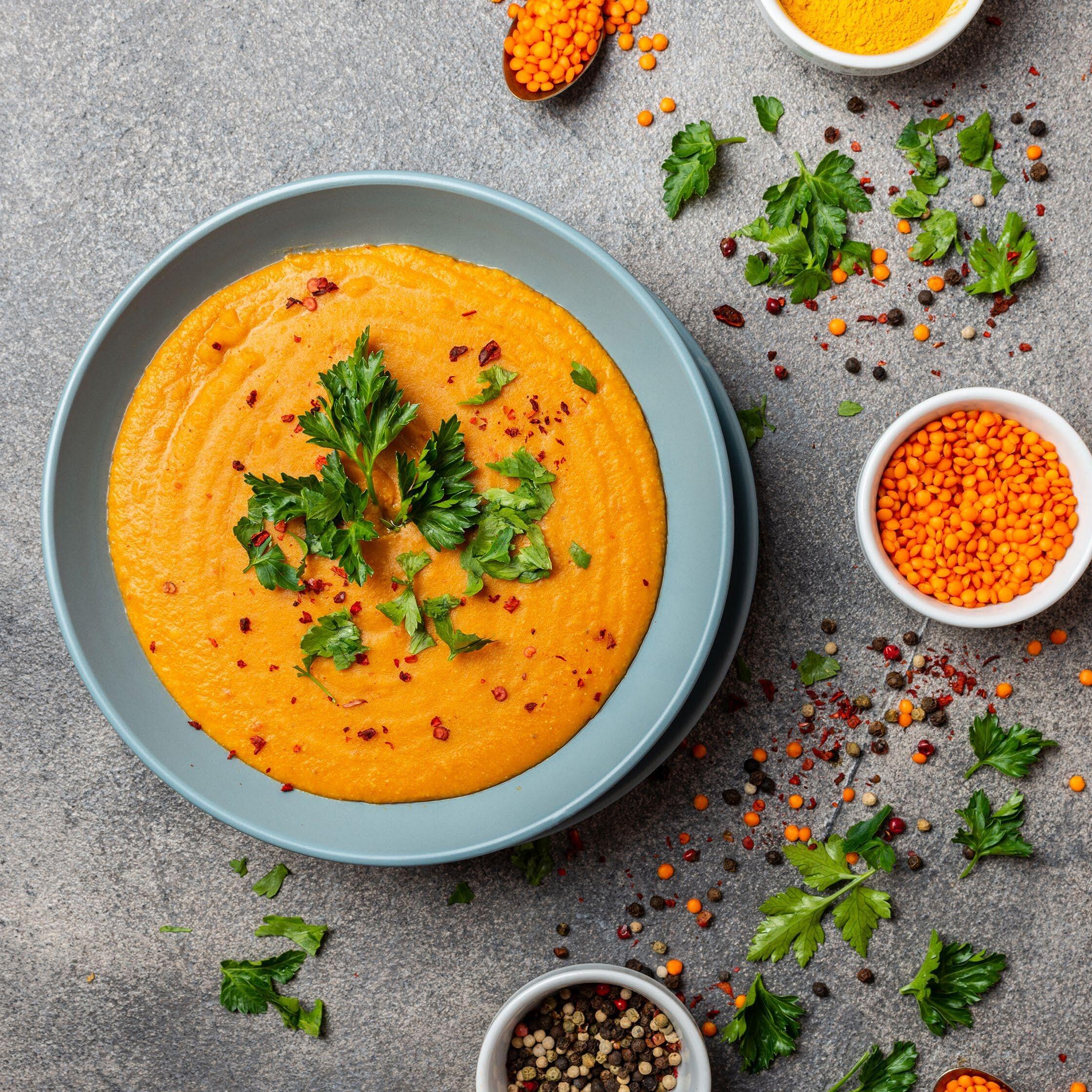
Dried brown onions, diced
Red lentils, rinsed and drained
Carrots, diced
Coriander powder
Cumin powder
Lower sodium salt
Oil
Lemon juice
Water
Optional: Garnish with parsley; Add black pepper to taste
METHODS:
1. Put a medium sized pan on the stove at medium high heat.
Nutrition Information (Per Serving)
fibre (g)
(mg)
2. Add oil with cumin powder and coriander powder and stir fry till fragrant.
3. Add onions and sauté till slightly softened.
4. Add carrots and lentils into the pan.
5. Add water and lower sodium salt to the pan.

6. Bring to a boil and reduce to low heat, cover the pan and simmer until carrots and lentils are soft.
7. Turn off heat and mix in lemon juice to the soup.
8. Use a blender to blend the soup to desired consistency.
9. Portion into 2 bowls and top with black pepper to taste.
10. Garnish with parsley.
FOOD TIP:
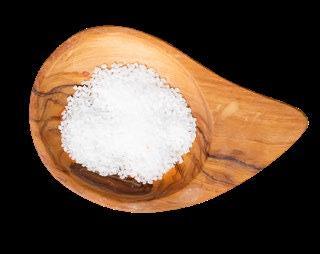
Antioxidants such as Vitamin A and C decrease risk of age-related cataract. These vitamins can be found in vegetables such as carrots, pumpkin and sweet potato.


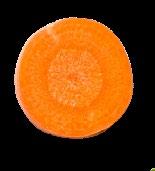

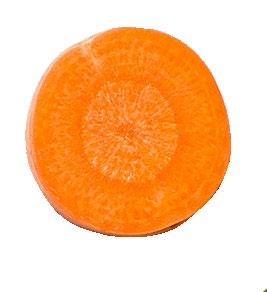

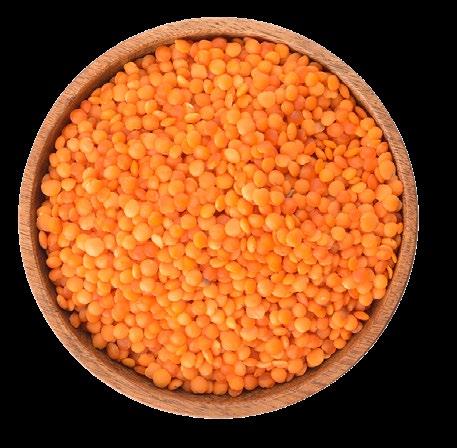
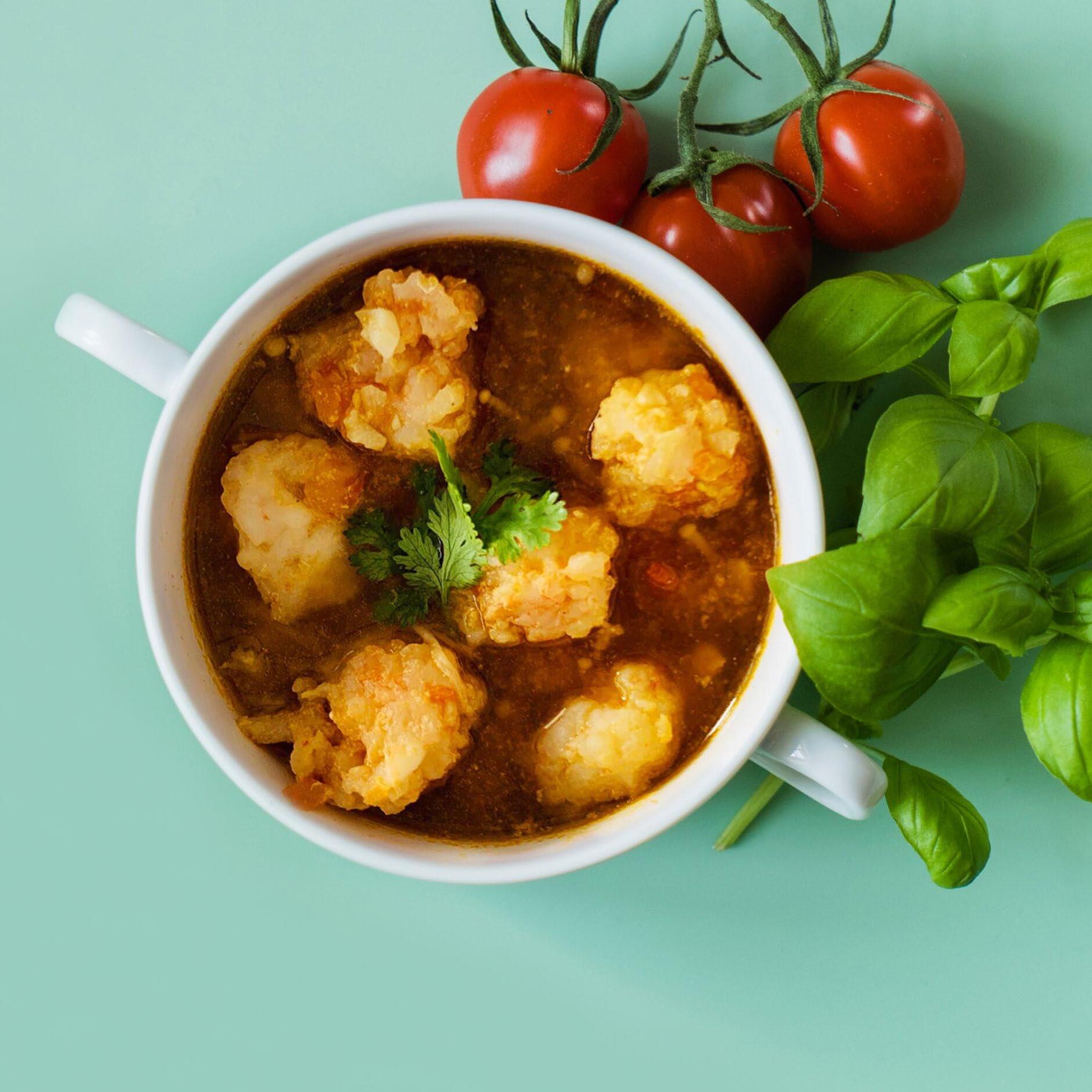
Quantity Ingredients
Prawns
Enoki mushroom
Tomatoes
Eggs white
Garlic
Oil
Pepper
Soy sauce, reduced sodiuma
METHODS:
Coriander; Tomato paste
Nutrition Information (Per Serving)
Carbohydrate (g)
Protein (g)
Fat (g)
Cholesterol (mg)
Dietary fibre (g)
Sodium (mg)
1. Mix 300 g of prawns, 2 egg whites, ½ tsp of pepper and ½ tbsp of soy sauce. Marinade for 15 minutes
2. Finely chop prawn mixture into paste. Set aside.
3. Boil tomatoes in hot water for 30 seconds and dice. Set aside.
4. Add 1 tbsp of cooking oil and fry garlic until fragrant.
5. Add in diced tomatoes and 3 cups of water.
6. Form prawn paste into balls and add into tomato soup.

7. Add Enoki mushroom and ¾ tbsp of soy sauce and cook for another 2 minutes.
8. Add in coriander & tomato paste for thicker consistency. Serve hot.
FOOD TIP:



This soup is flavourful and rich in protein. It is also rich in antioxidants from enoki mushroom and tomato.





Dried fig
Optional: Add salt to taste
METHODS:
1. Cut winter melon and tofu into cubes.
2. Cut corn into 3 pieces.
3. Slice tomato into 8 pieces.
4. Boil water in a pot.
5. Put all ingredients into the pot.
6. Simmer the soup for 1.5 hours.
7. Add salt to season the soup.
FOOD TIP:

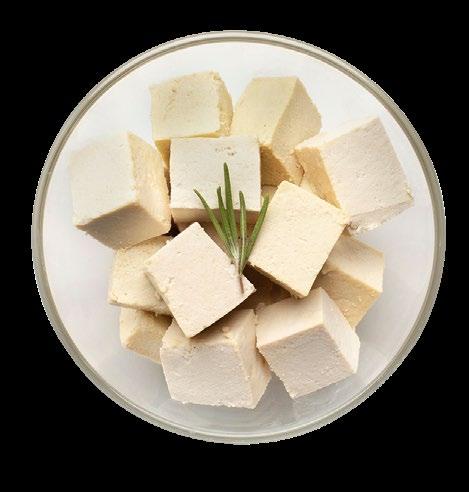


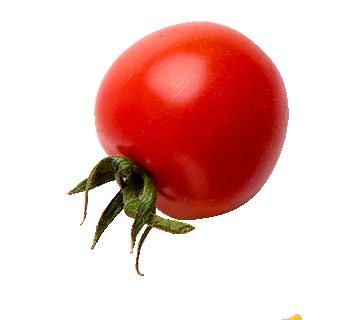

This soup is rich in various nutrients and antioxidants like polyphenols, flavonoids and anthocyanins, which helps to play a protective role in bodies by fighting free radical compounds, delaying cellular damage that leads to diseases. This antioxidant-rich soup will aid in maintaining the vision of elderly people and protect against memory loss. This soup is also rich in proteins from the tofu which will aid muscle growth.


Ingredients
Dried mandarin peel
Adzuki red bean, rinsed
Brown sugar slab
Water
TIP: If you are cooking on a stove, soak beans overnight. Put beans, dried peels and water in a large pot and bring it to a boil. Lower the heat to let it simmer until the consistency you want. Stir in brown sugar and enjoy.
Optional: Add rice ball dumpling during festive occassion.
METHODS:
Nutrition Information (Per Serving)
Carbohydrate (g)
Protein (g)
Fat (g)
Cholesterol (mg)
Dietary fibre (g)
Sodium (mg)
1. To prepare the mandarin peel, rehydrate it in cold water for 20 minutes.
2. Scrap away the water bitter part. In an instant pressure cooker, add in mandarin peel, adzuki red bean, brown sugar slab and water.
3. Pressure cook for 30 mins and 20 mins of natural release.
4. Bring the red bean soup to a boil using “Sauté High” function for 15 to 20 mins until desired consistency.
FOOD TIP:
Red bean is a legume, which is a good source of plant-protein and dietary fibre. It is also rich in iron which aids in red blood cell formation.



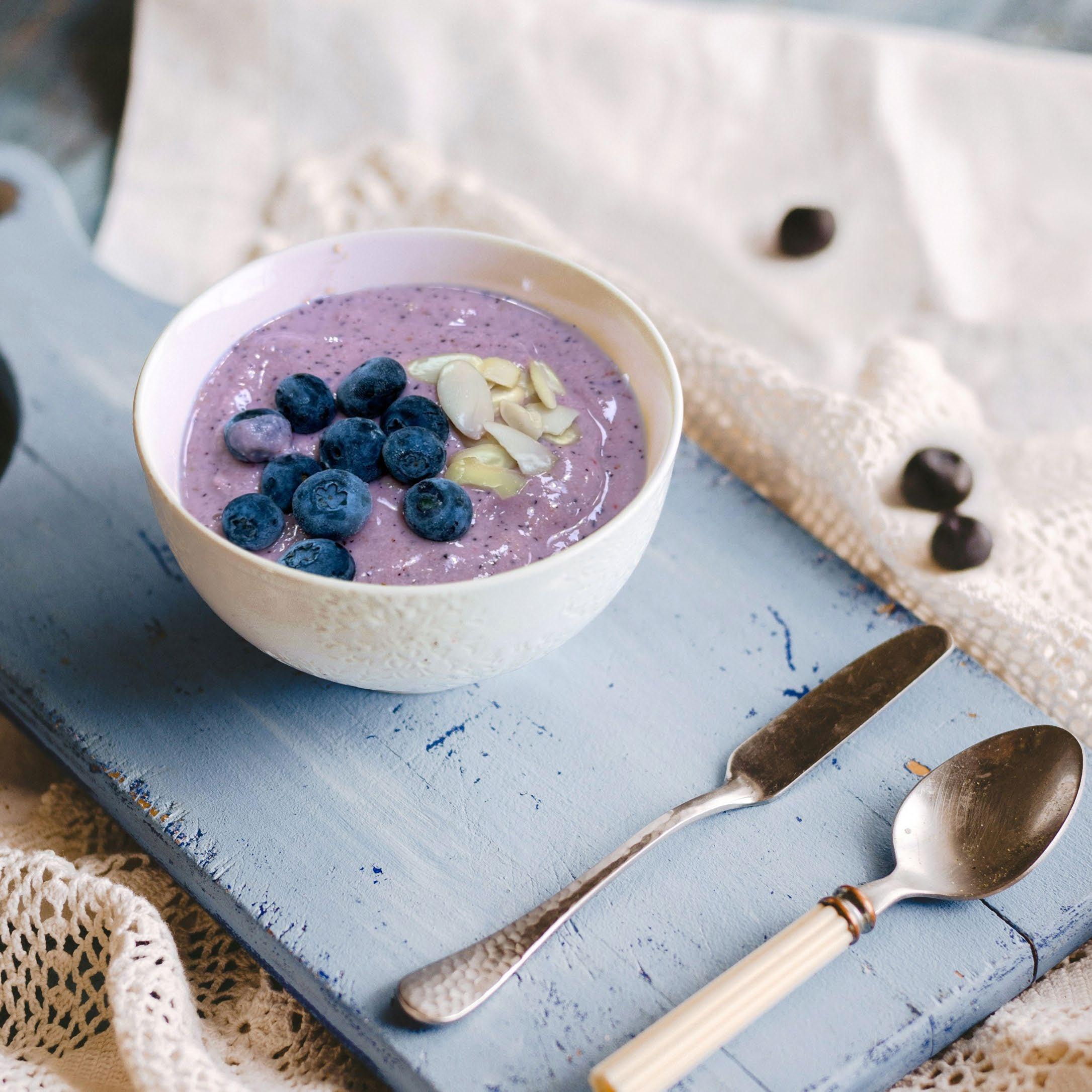
Ingredients
Frozen strawberries
Frozen bananas
Low fat milk
Almonds
Cinnamon powder
Blueberries
Quantity
TIP: Add more milk if the smoothie is too thick.
METHODS:
1. Blend frozen strawberries, bananas, low-fat milk, almonds and cinnamon powder in a blender.
2. Blend until smoothie is thick and well blended.
3. Pour in a bowl and top off with blueberries.
4. Serve immediately.
FOOD TIP:
Nutrition Information (Per Serving)
Carbohydrate (g)
Protein (g)
Fat (g)
Cholesterol (mg)
Dietary fibre (g)
Sodium (mg)

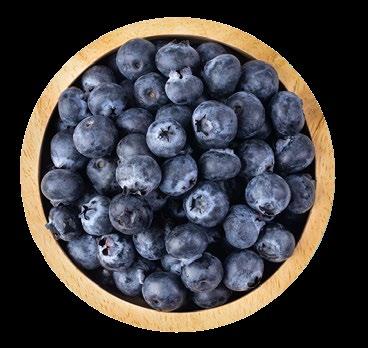
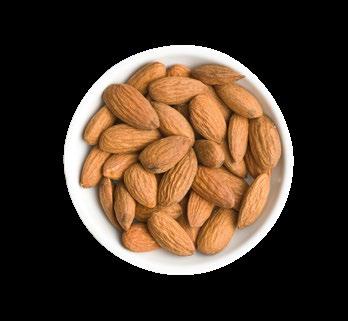
Berries are high in flavonoids, especially anthocyanidin. Regular intake of berries has been shown to reduce the rate of cognitive decline in older adults. Almonds are a good source calcium and protein, which help to strengthen bones, reducing the risk of sarcopenia or osteoporosis.

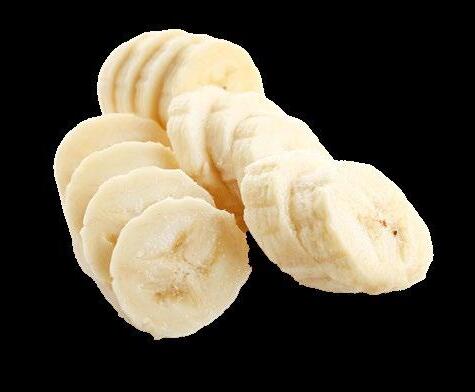

Ingredients
Banana, mashed
Low fat milk
Peanut butter
Egg white
Vanilla extract
Oats, instant
Cinnamon, powder
Baking powder
Optional: Drizzle with low fat yoghurt
METHODS:
Quantity
Nutrition Information (Per Serving)
Protein (g)
Fat (g)
Cholesterol (mg)
Dietary fibre (g)
Sodium (mg)
1. In a large microwavable mug, add mashed banana and low fat milk and mix well.
2. Add in peanut butter, egg white and vanilla extract.
3. Gently stir in oats, cinnamon powder and baking powder.
4. Microwave ½ min or until the mixture is firm.
5. Drizzle with some yoghurt and enjoy!
FOOD TIP:

Both soluble and insoluble fibre can be found in a variety of fruits, vegetables, and wholegrains. Dietary fibre helps to improve constipation as fibre adds bulk to stools.


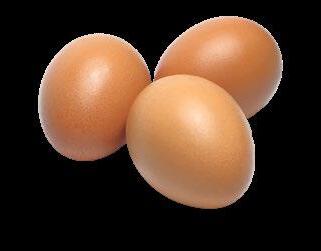

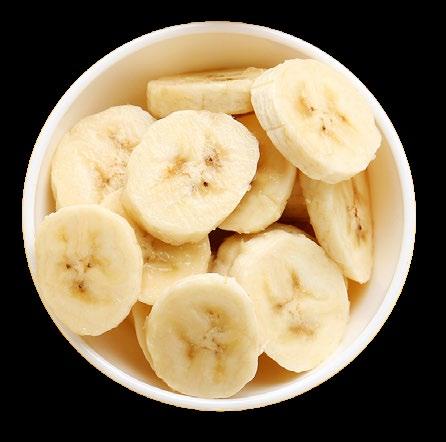
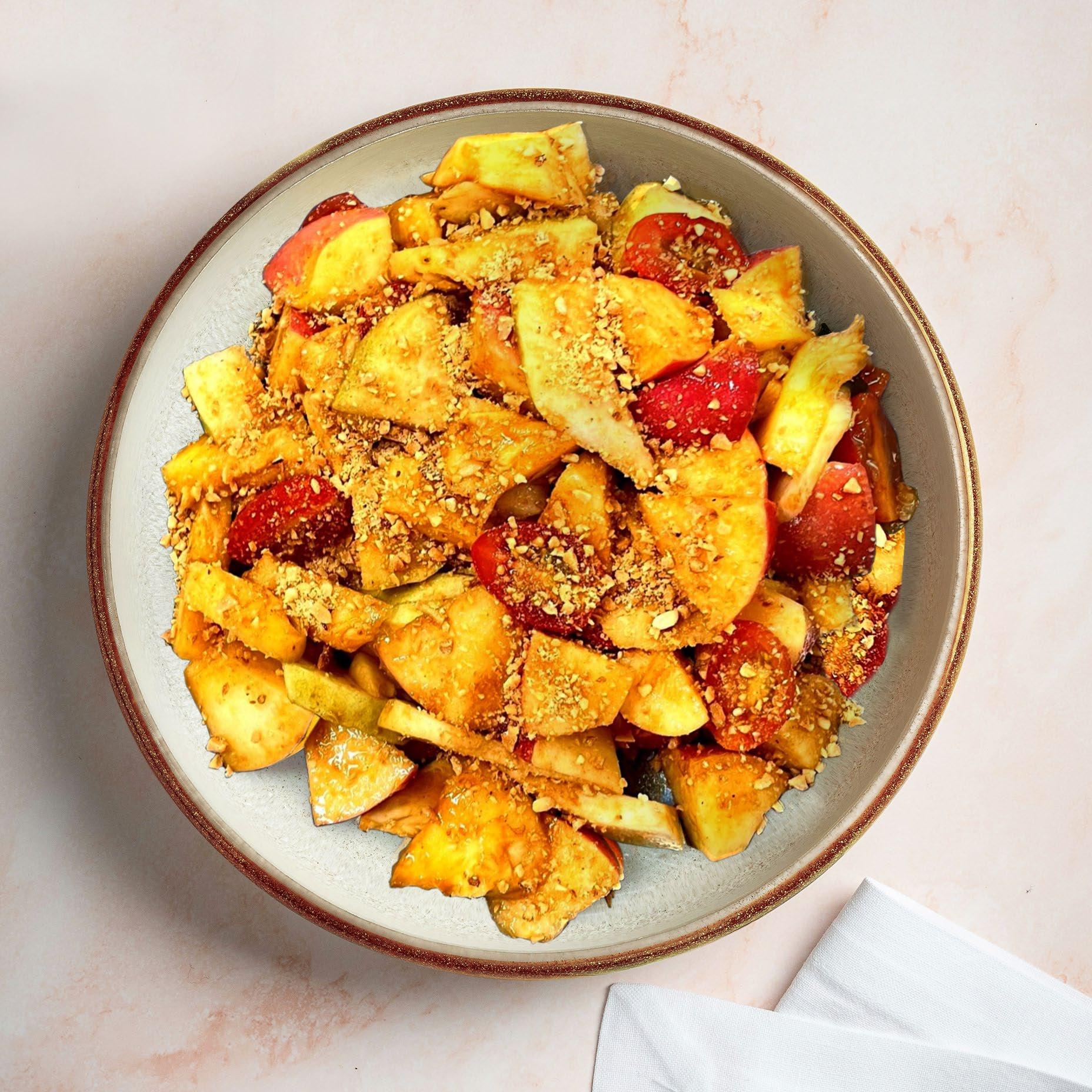
Tamarind paste
Fermented prawn paste
Sugar
Apple, small, sliced
Guava, deseeded and sliced
Pineapple, sliced
Cherry tomato, halved
Toasted peanuts, unsalted, crushed
TIP: Use any fruit that you like to mix into the rojak sauce, but preferably avoid fruits with high water content as they may dilute the sauce.
METHODS:
1. Dissolve tamarind paste in 2 tablespoons of warm water.
2. In a large mixing bowl, prepare the rojak sauce by combining the tamarind mixture, fermented prawn paste and sugar.
3. Add in the rest of the ingredients to the bowl.
4. Stir and mix well.
5. Sprinkle with crushed peanuts.
6. Ready to serve.
FOOD TIP:
Nutrition Information (Per Serving)
Energy (kcal)
Carbohydrate (g)
Protein (g)
Fat (g)
Cholesterol (mg)
Dietary fibre (g)
Sodium (mg)

Fruits and vegetables contain essential nutrients such as antioxidants, vitamins, and dietary fibre.

Increasing intakes of brightly coloured fruits and vegetables can slow down the decline of eye health.


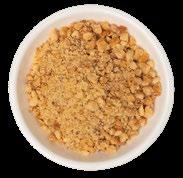


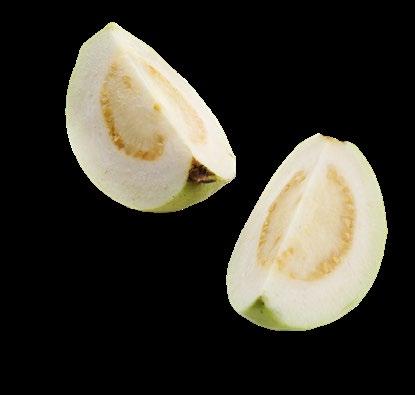

peeled and diced
Information (Per Serving)
fibre (g)
(mg)
METHODS:
1. Mix oatmeal with half a cup of hot water until well combined.
2. Combine all ingredients and one cup of cold water in a food processor. Blend until smooth.
3. Serve immediately.
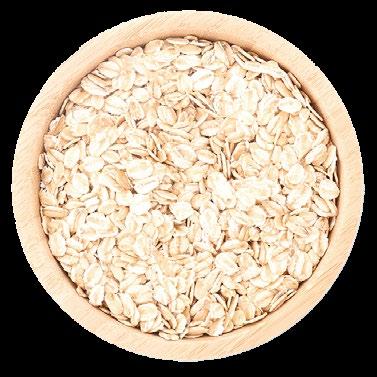
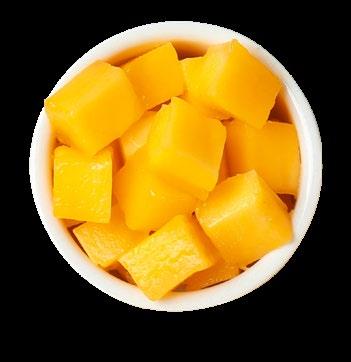

FOOD TIP:
Mango is high in antioxidants like beta carotene, beneficial for vision. Stay well-hydrated by drinking plenty of fluids throughout the day. Dehydration can impair concentration and cognitive performance.



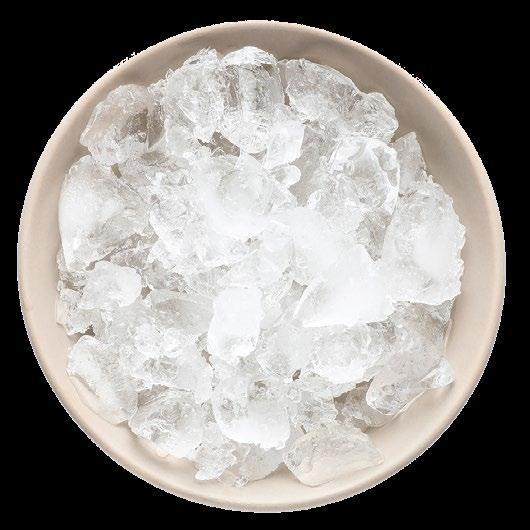
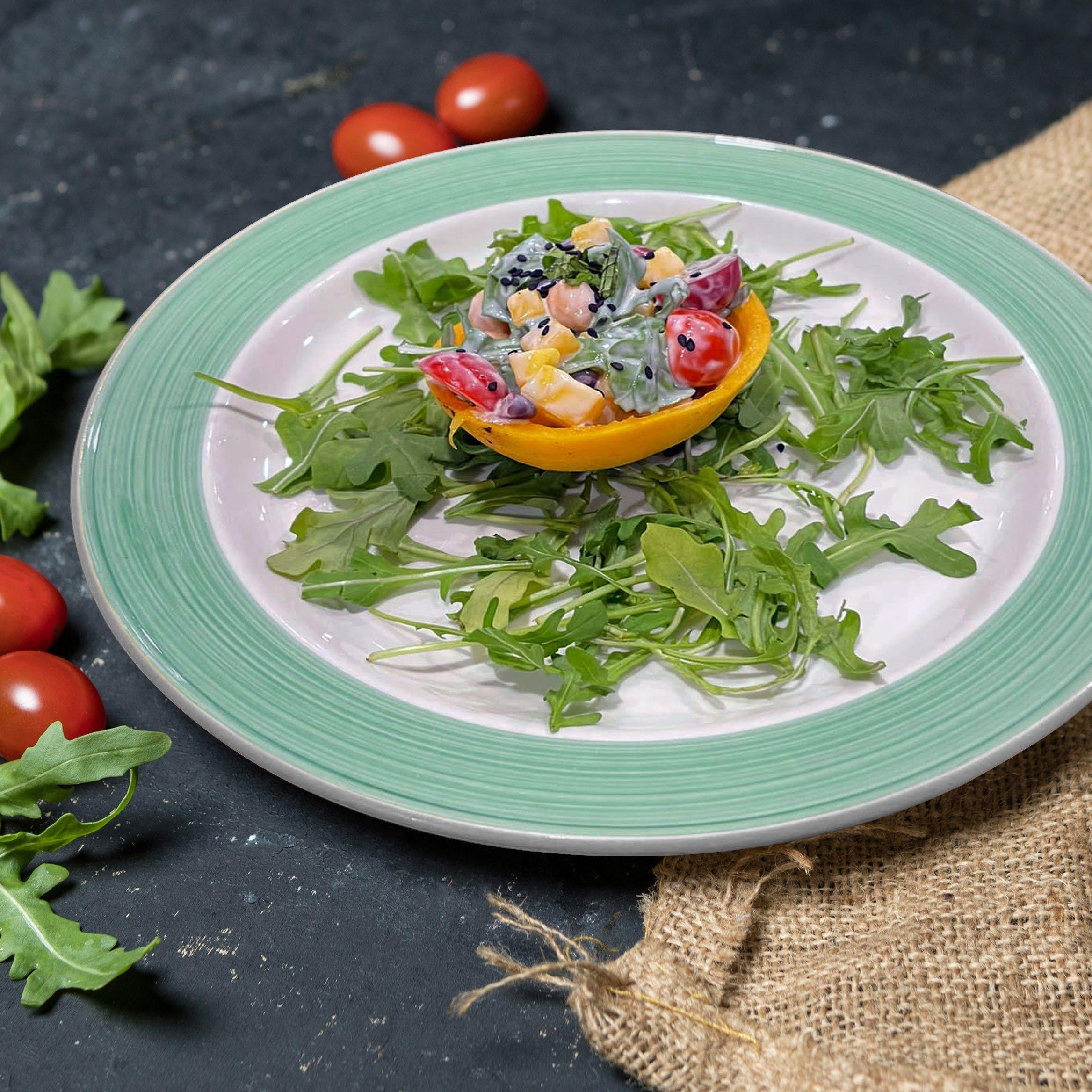
Ingredients
Mango (ripe), cubed
Chickpeas (canned), drained, rinsed
Kidney beans (canned), drained, rinsed
Cherry tomatoes, halved
Green grapes, seedless, halved
Rocket leaves
Low fat yogurt
juice
METHODS:
Quantity
Nutrition Information (Per Serving)
Protein (g) Fat (g)
Cholesterol (mg)
Dietary fibre (g)
Sodium (mg)
1. In a large salad bowl, add in mango, chickpeas, kidney beans, cherry tomatoes, grapes and rocket leaves.
2. Gently toss to combine.
3. In a small bowl, combine yogurt and lemon juice, mixing them well.
4. When ready to serve, pour the yogurt mixture into the large salad bowl and gently mix to combine.
FOOD TIP:


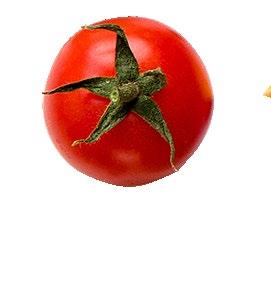
Lentils are a great source of protein and have a long shelf life. One can buy canned lentils and store them until needed to cook dishes conveniently. There are different types of legumes, such as lentils, beans, peas, and soybeans.
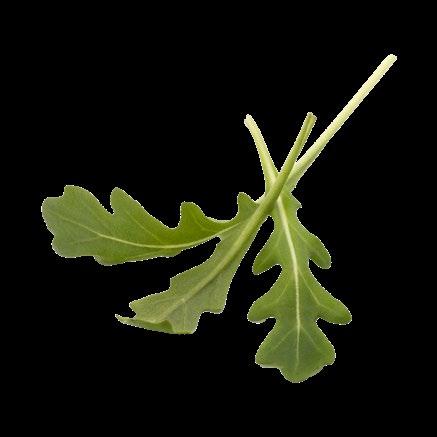


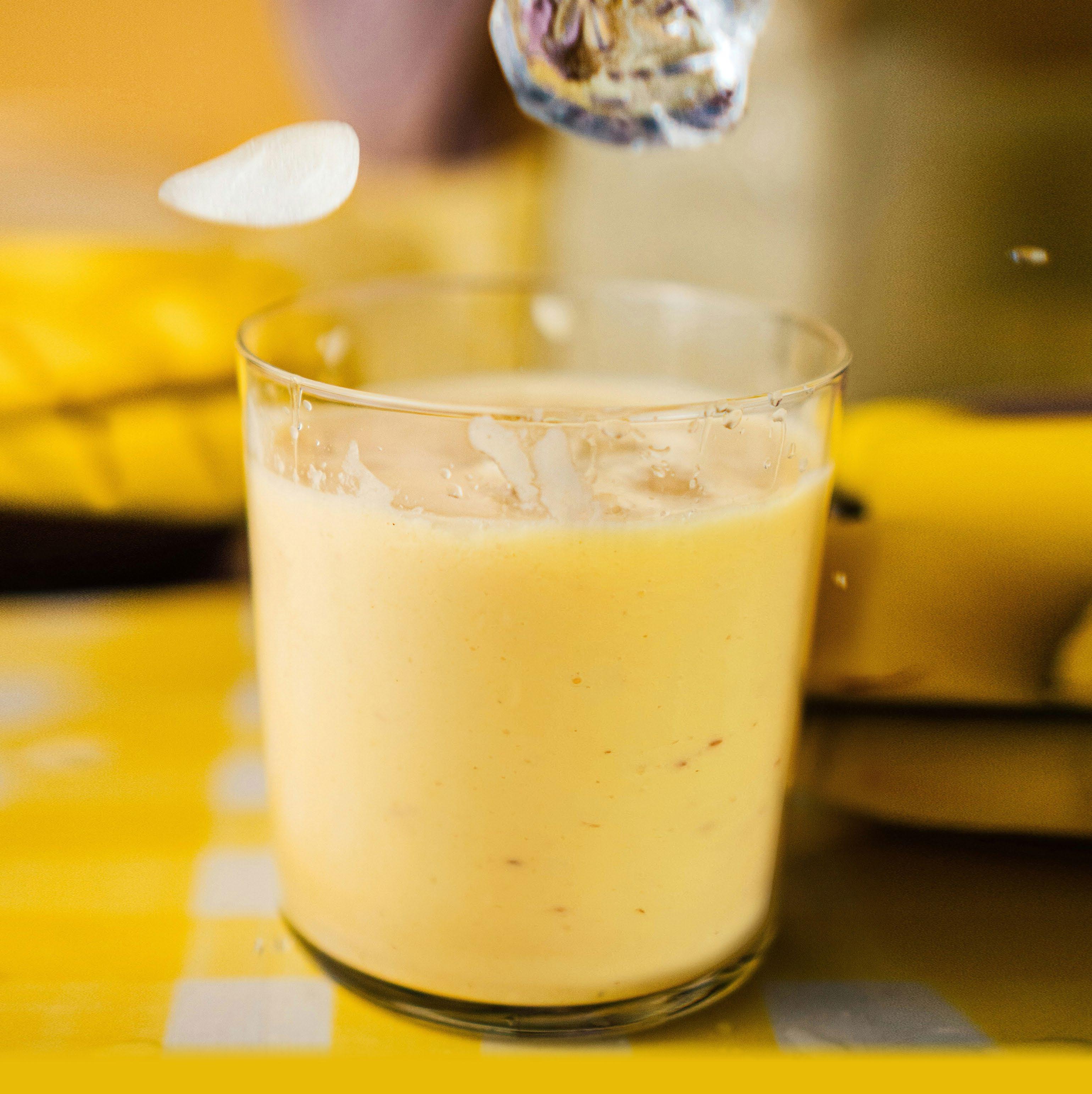
yogurt, plain
TIP: Add artificial sweetener if need to increase the sweetness of this drink.
METHODS:
1. Blend everything together to a smooth consistency in a blender.
2. Serve chill.
FOOD TIP:
Yogurt is a good source of calcium, which is necessary in strengthening bones and hence necessary to reduce risk of fractures and frailty among the elderly. Yogurt also contain less lactose and is suitable for those who are lactose intolerant.




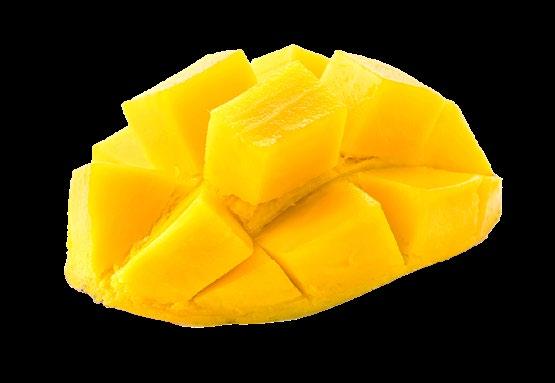
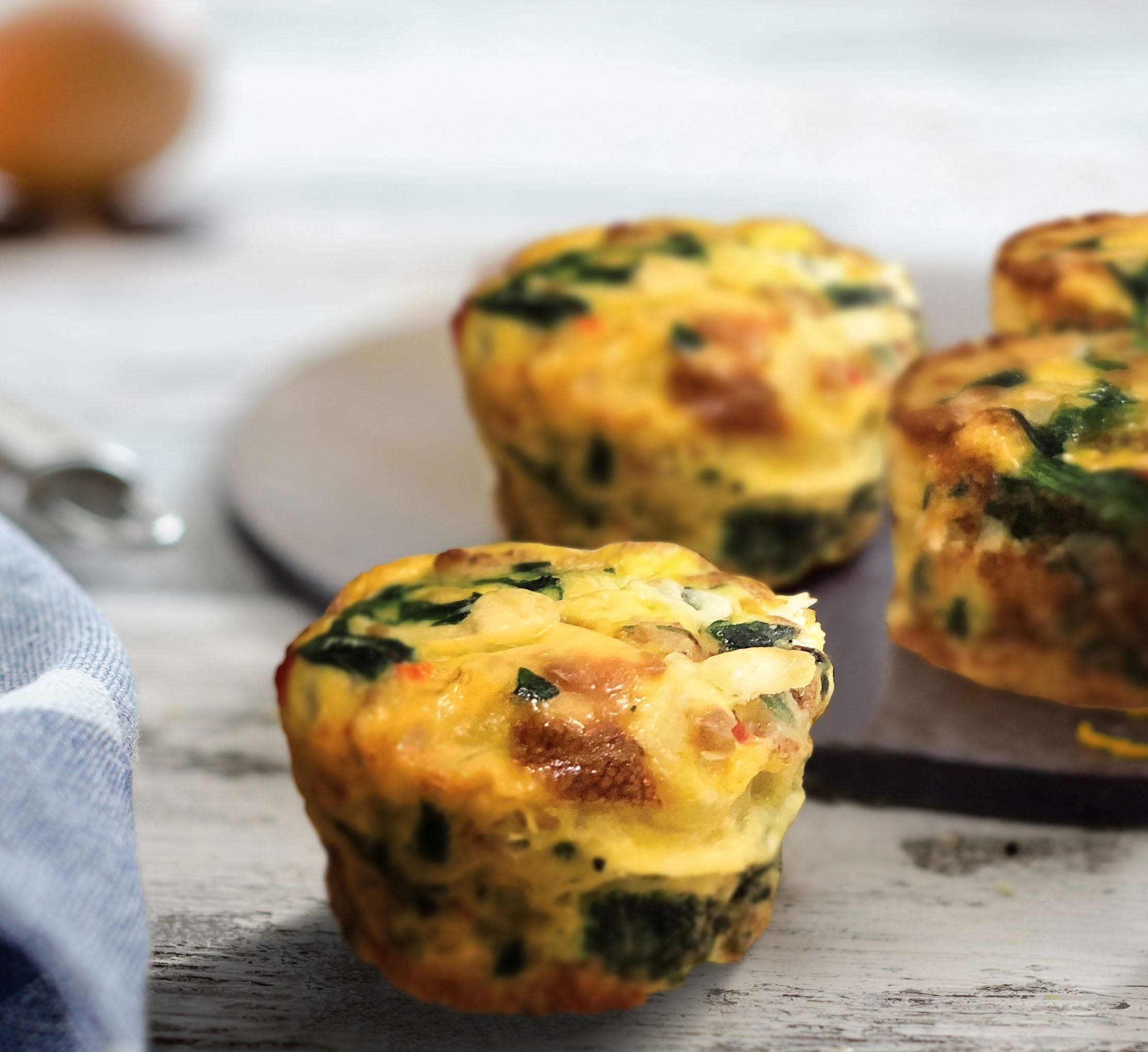
Onion, chopped
Eggs
Red capsicum, chopped
Spinach, chopped
Minced chicken
Low fat cheese
Optional: Add salt and pepper to taste
METHODS:
1. Preheat oven to 175 degrees celsius. Lightly grease 6 muffin cups, or line with paper muffin liners.
2. Heat a large skillet over medium-high heat and stir in minced chicken; cook and stir until chicken is evenly browned, and no longer pink, 10 to 15 minutes; drain.
3. Beat eggs in a large bowl. Stir in onion, red pepper, spinach, salt and pepper. Mix in chicken and cheese.
4. Spoon by ⅓ cupful into muffin cups. Bake in preheated oven until a knife inserted near the center comes out clean, 20 to 25 minutes.
FOOD TIP:
Eggs contain a compound choline, which functions to improve cognitive function. Studies have shown egg consumption may help in reducing memory loss. This can be a good snack that can help to also boost your protein intake along the day.

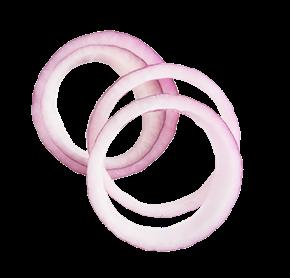
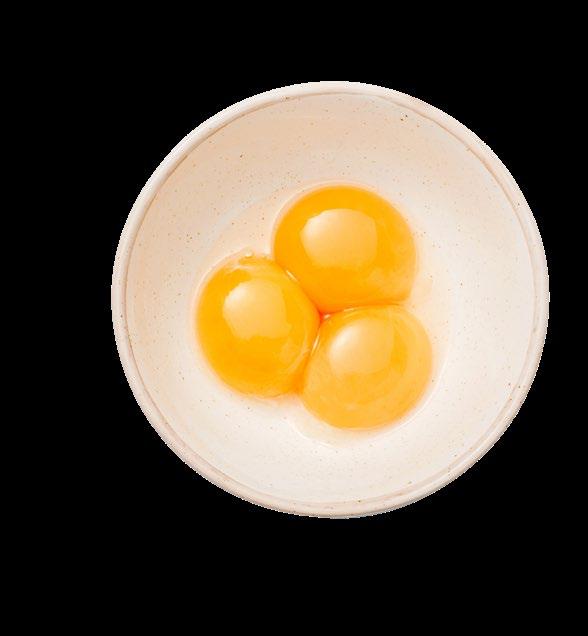

Banana
Tofu silken
Maple syrup
Cacao powder
Peanut butter
Vanilla essence
Chia seeds
Lemon juice made from ¼ lemon, medium
METHODS:
Nutrition Information (Per Serving)
(kcal)
Carbohydrate (g)
Protein (g)
Fat (g)
Cholesterol (mg)
Dietary fibre (g)
Sodium (mg)
1. To prepare the chocolate mousse, add ½ of the banana, tofu, maple syrup & vanilla essence with cocoa powder & peanut butter into a blender and blend until smooth. Set aside.
2. To prepare the chia tofu pudding, blend the remaining tofu, maple syrup & vanilla essence with the lemon juice until smooth. Mix in chia seeds and set aside.
3. Slice remaining ½ banana into ¼” and set aside.
4. Assemble the pudding by layering the bottom of a glass with ½ of the chocolate mousse and top with¼ of the sliced banana.
5. Layer the chia tofu pudding on top of the chocolate mousse andtopwith¼of the sliced banana.
6. Repeat with the remaining chocolate mousse, chia tofu pudding and sliced banana.
7. Set in the fridge to chill and firm up before consuming.
FOOD TIP:
Tofu is not only high in calcium, but also a good source of plant-based protein, Chia seed is a good source of calcium, dietary fibre and omega-3. This is indeed a high protein snack!




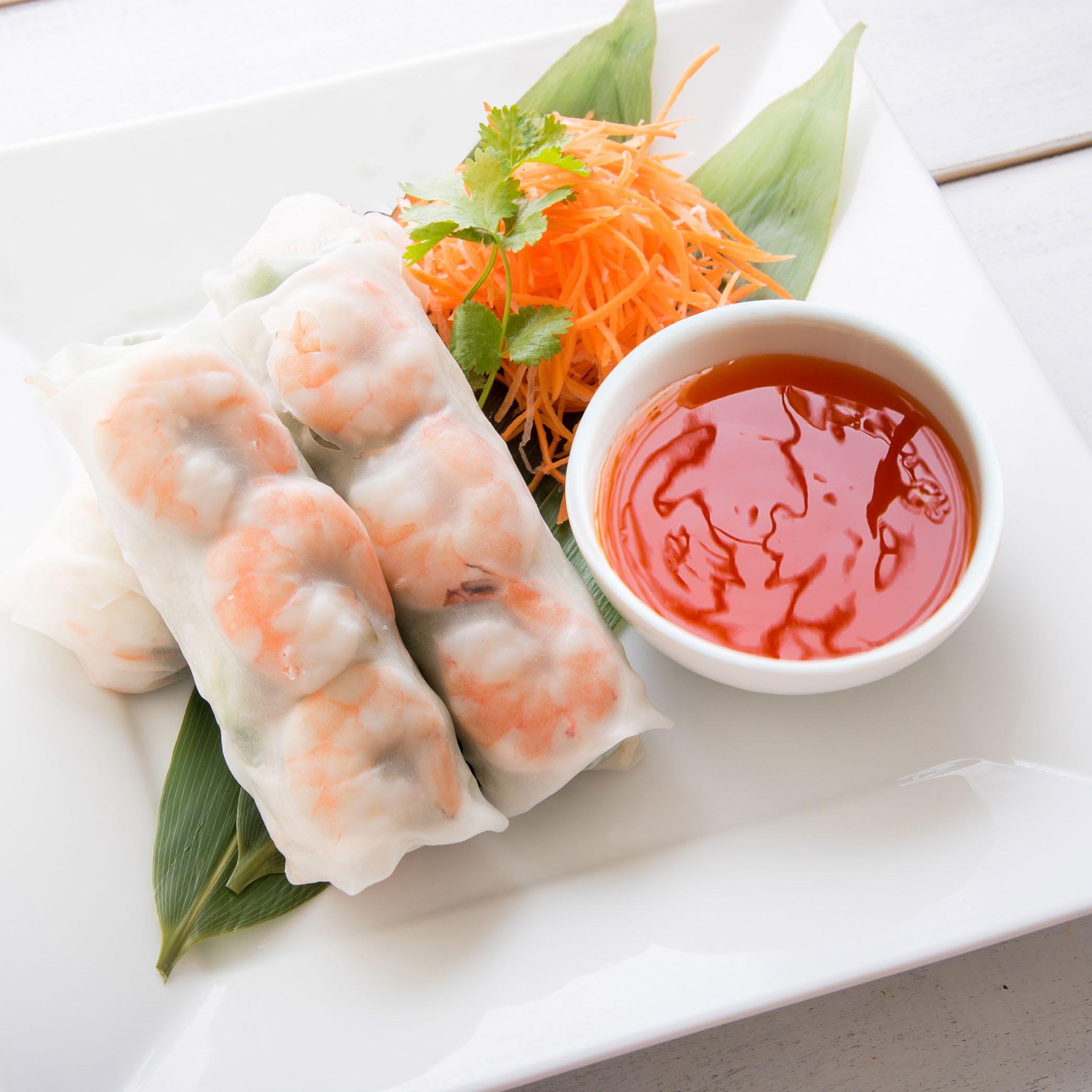
Ingredients
Brown rice bee hoon, uncooked
Prawns
Rice paper (22cm)
Lettuce
Cucumber, deseeded and peeled
Carrot, peeled
METHODS:
Quantity
Nutrition Information (Per Serving)
1. Blanch brown rice bee hoon in a pot of hot water and drain, set aside.
2. In the same pot of hot water, add in prawns. Drain and set aside when fully cooked.
3. Shred the carrot and cucumber, set aside.
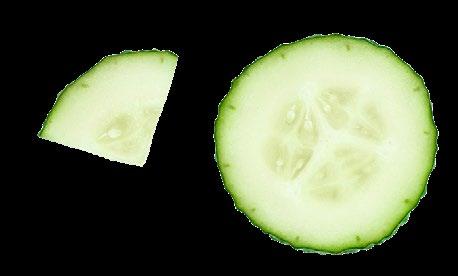
4. Prepare a shallow dish plate wider than the rice paper. Fill it with lukewarm water.
5. To rehydrate the rice paper, simply slide it in the plate of water for a few seconds.
6. Place vermicelli, lettuce, cucumber, carrot and prawns on the soaked rice paper, roll it up and enjoy!

FOOD TIP:
This dish is special. This high-protein dish can serve as a main meal or serve in smaller quantity as a light snack.
Go easy on the dipping suace if you want to cut back on your sodium intake.


Ingredients
Tau kwa block
White button mushroom, chopped
Peppers, green
Tomato, chopped
Mozzarella cheese
sauce
METHODS:
Quantity
Nutrition Information (Per Serving)
(kcal)
Carbohydrate (g) Protein (g) Fat (g)
Cholesterol (mg)
Dietary fibre (g)
Sodium (mg)
1. Place a plate and a heavy object on top of the tau kwa for 15 minutes. Drain.
2. Place the tau kwa on its side and slice the tau kwa into 4 equal slabs.
3. Coat all sides of the tau kwa with oil.
4. Arrange in air fryer at 180°C for 7 minutes.
5. Prepare the pizza topping by mixing the mushroom, peppers, tomato, mozzarella cheese, and 4 tbsps of tomato sauce in a bowl. Set aside.
6. Spread the remaining tomato sauce onto each air fried tau kwa evenly.
7. Distribute the pizza topping onto each air fried tau kwa equally.
8. Arrange in air fryer at 180°C f or another 5 minutes.
9. Serve hot.




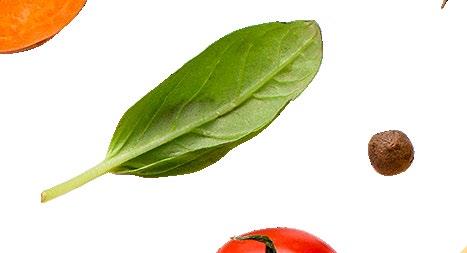
By using tau kwa as the base of this “pizza”, this dish contains 20g protein per serving – 30% of an average elderly’s daily protein needs. For elderly who finds meat and poultry too tough to chew through, tofu and tau kwa are softer and rich in protein. It is important to incorporate protein and calcium rich foods like tau kwa and cheeses in our day to day lives as they support the growth of our muscles and strengthen our bones.

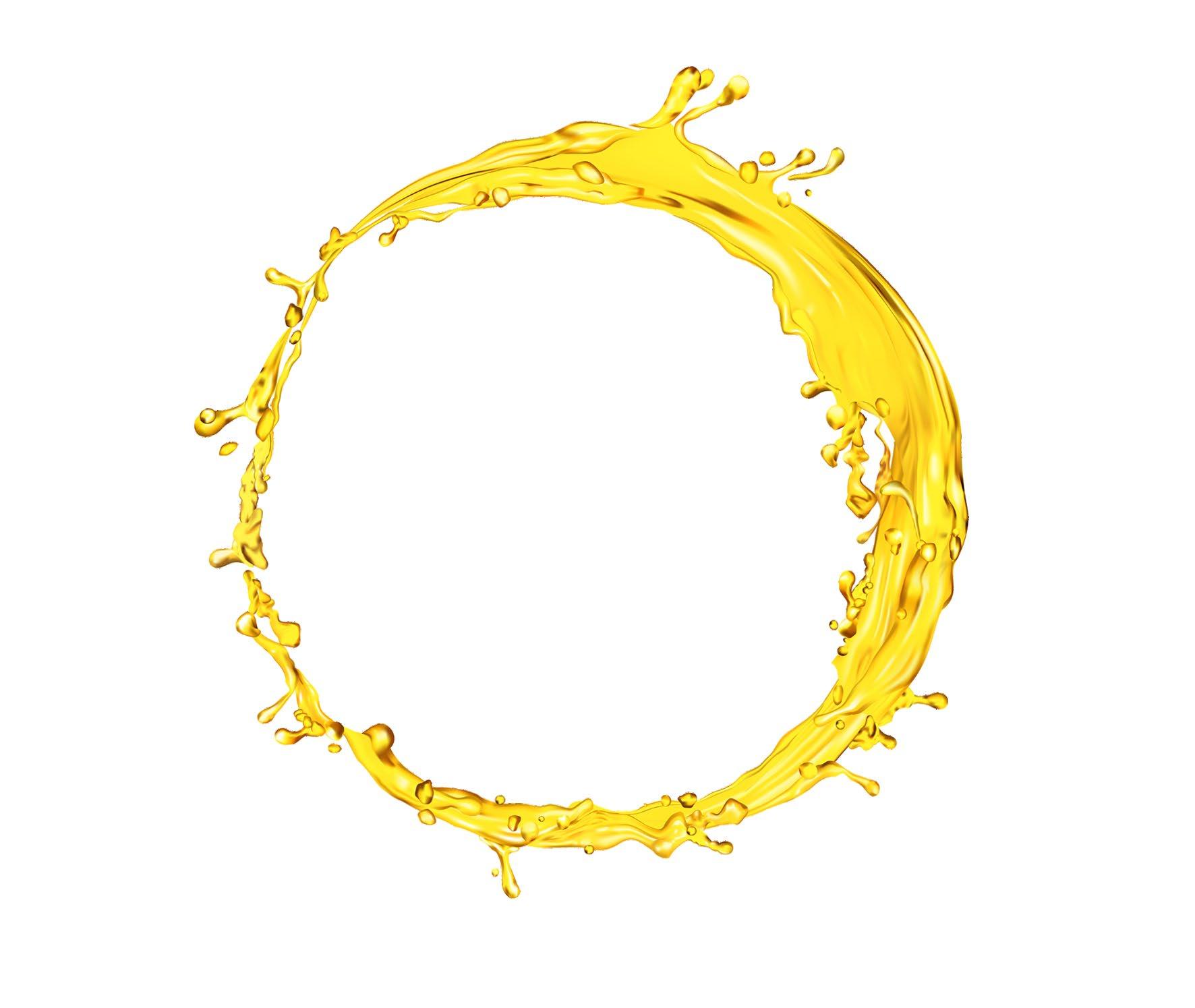
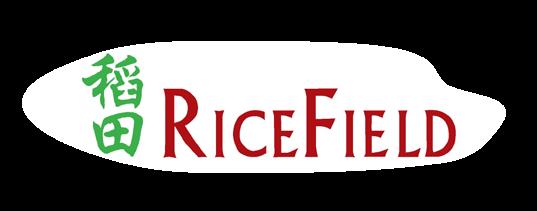
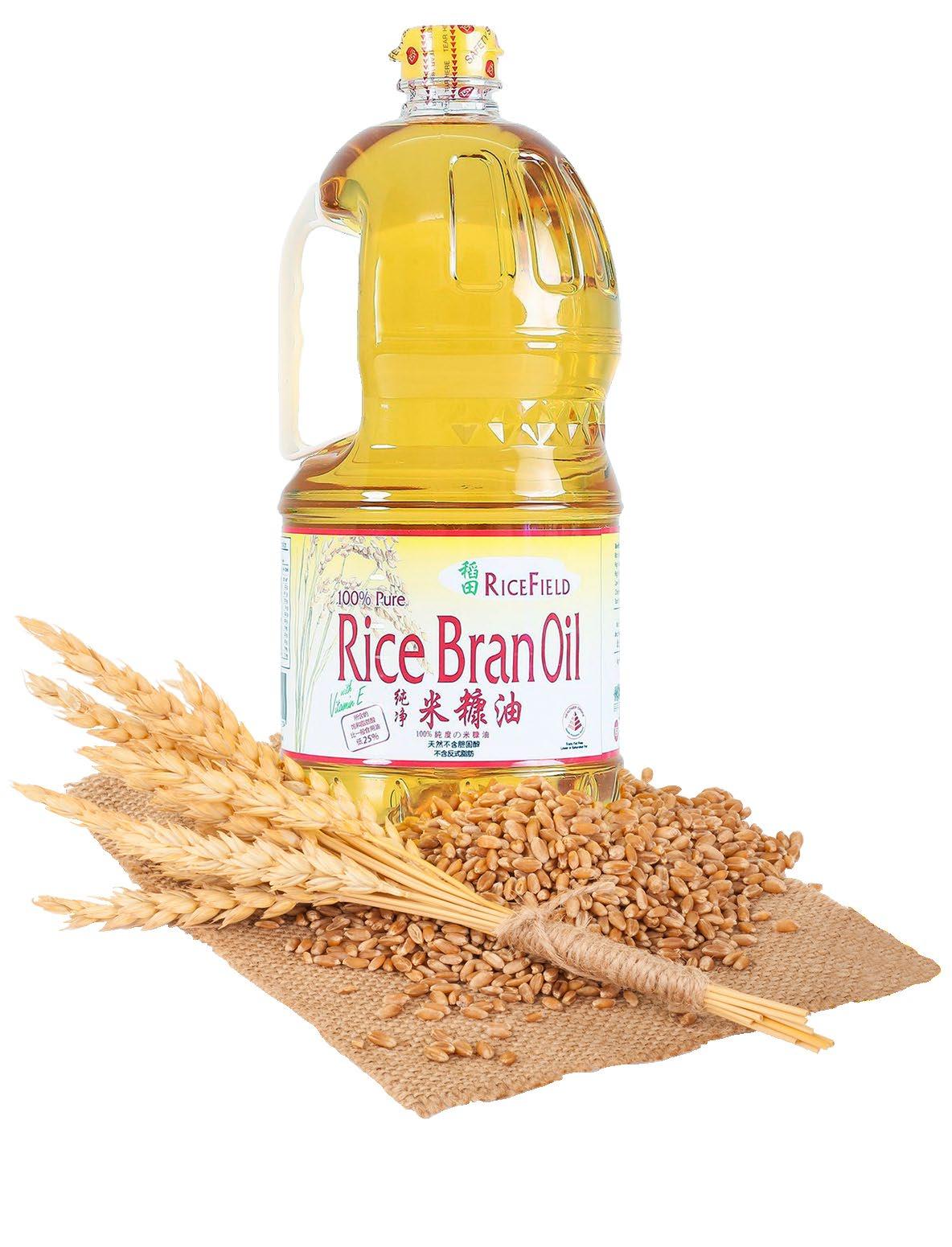
Rice Bran Oil: Nature’s Health Elixir
In the realm of culinary cooking oils, rice bran oil stands out as a true gem. Extracted from the outer layer of rice grains (bran), this versatile oil is rich in nutrients and offers a myriad of health benefits. Whether you are a seasoned chef or someone looking to improve your dietary habits, rice bran oil deserves a place in your kitchen. Let us now explore the wonders of rice bran oil and uncover why it is hailed as nature’s health elixir.
Rice bran oil’s light flavour and high smoke point (232°C) make it a versatile cooking oil. It is suitable for various culinary applications, from frying and sautéing to grilling and salad dressings. Here is how you can incorporate rice bran oil into your everyday cooking and food preparation:
With a high smoke point, rice bran oil is ideal for frying. It remains stable at high temperatures, ensuring your food is cooked evenly without breaking down into harmful compounds.
Rice bran oil’s mild flavour makes it perfect for sautéing vegetables, meat and seafood. It enhances the ingredients’ natural flavours while adding to the nutritional profile of your dish.
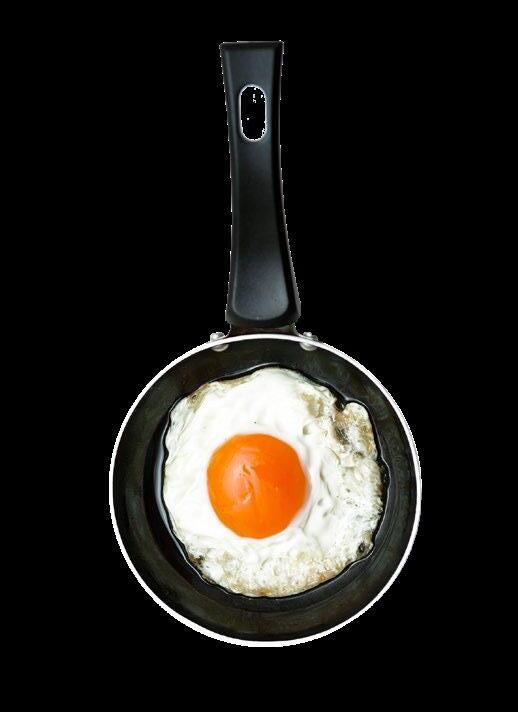
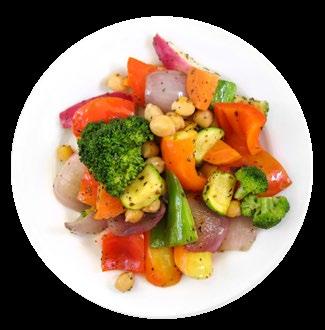
Rice bran oil’s light, slightly nutty flavour makes it an excellent base for salad dressings and marinades. It blends well with herbs, spices and vinegar, creating delicious and healthy dressings that can elevate any salad.
Use rice bran oil to coat veggies, meats and fish before grilling/roasting. Its high smoke point ensures your food cooks evenly without burning, and it imparts a subtle flavour that enhances the natural taste of your ingredients.



Rice bran oil is a nutritional powerhouse, packed with essential fatty acids, vitamins and antioxidants that you need. Here is a breakdown of its key components:

Among the different types of cooking oil, rice bran oil boasts the most balanced composition of saturated (24%), monounsaturated (42%), and polyunsaturated fatty acids (34%). Research has shown that consumption of plant-based monounsaturated fats may help to lower heart disease risk by decreasing LDL (bad) cholesterol levels.
This unique blend of fatty acids makes rice bran oil a heart-healthy choice, promoting cholesterol balance and reducing the risk of cardiovascular diseases. In fact, the American Heart Association and World Health Organisation (WHO) recognise rice bran oil as a healthy oil to keep cholesterol under control.

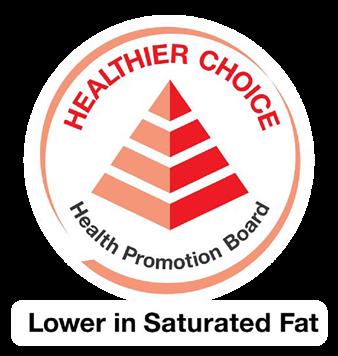
Vitamin E - a potent antioxidant - is abundant in rice bran oil. This vitamin helps to combat free radicals, protecting cells from damage and may benefit skin health. The presence of tocotrienols, a form of vitamin E, adds to its antioxidant prowess. They are associated with improving heart health by reducing heart disease risk factors and preventing osteoporosis.





Rice bran oil contains a healthy amount of polyunsaturated fats, which help our body to function. These fats, including omega 6 and omega 3, are important for good heart health. Omega-6 fatty acids are also crucial for brain function, overall growth and development, while omega 3 helps to drive normal brain and nervous system development/function, maintain immune function, blood flow and heart rhythm, and promote healthy skin.




One of the most remarkable compounds in rice bran oil is Gamma-Oryzanol. This powerful antioxidant not only fights free radicals, but may also help to lower cholesterol levels and support metabolic health. In fact, one study has shown that Gamma-Oryzanol was stronger than vitamin E for scavenging free radicals from the body and preventing tissue damage that results from free radical action. GammaOryzanol might also reduce cholesterol levels by reducing the absorption of cholesterol from foods.
Phytosterols (plant sterols) in rice bran oil are known for their cholesterol-lowering effects. They block the absorption of cholesterol in the intestines, aiding in maintaining healthy cholesterol levels.


Rice bran oil is a heart-friendly oil. Its balanced fatty acid profile, along with the presence of gamma-oryzanol and phytosterols, helps to reduce LDL cholesterol while maintaining HDL (good) cholesterol levels. Regular consumption of rice bran oil can help to lower the risk of heart disease and improve overall cardiovascular health.
The high levels of antioxidants, particularly vitamin E and Gamma-Oryzanol, make rice bran oil a powerful ally against oxidative stress. Antioxidants neutralise free radicals and help to reduce inflammation.
In a test-tube study in mouse cells, rice bran oil was found to reduce insulin resistance by neutralising free radicals. Rice bran oil significantly lowered blood sugar levels by increasing insulin levels. A human study found similar results, where participants who ate a single meal containing 3.7g of rice bran mixed in oil found their blood sugar levels dropped 15%, compared with those who did not eat the ingredient.
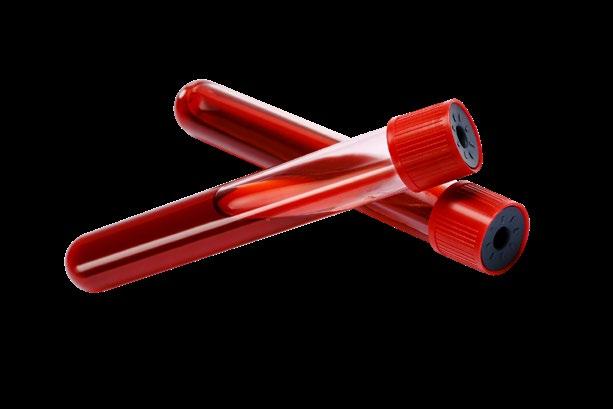

A study found that gamma-oryzanol may enhance innate immune responses. The researchers investigated the effect of Gamma-Oryzanol-rich extract on the activation of the innate immune system. It was shown that the compound increased the expression of CD14 and Toll-like receptor 4 and enhanced the phagocytic activity of macrophages. Furthermore, gamma-oryzanol also promoted the secretion of innate cytokines, interleukin-8 and CCL2, which facilitate phagocytosis.
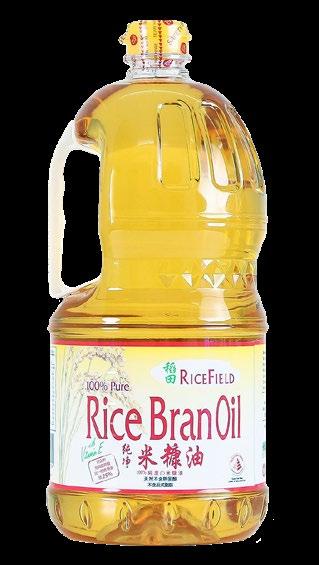

Tocotrienols may have anticancer effects. Test-tube and animal studies indicate that tocotrienols suppress the growth of various cancer cells, including those of the breast, lung, ovary, liver, brain and pancreas.

In one test-tube study, tocotrienols from rice bran oil seemed to protect human and animal cells exposed to ionising radiation, high levels of which may cause harmful effects like cancer. Additional test-tube studies have also revealed that tocotrienols have strong anti-cancer effects when combined with other anti-cancer drugs or chemotherapy.
Incorporating rice bran oil into your diet can aid in weight management. Its unique composition helps to boost metabolism and improve fat utilisation. The presence of Gamma-Oryzanol also aids in reducing body fat, making it a valuable addition to weight loss regimes. In a study in people with hyperlipidemia, it was found that participants who followed a low-calorie diet with 2 tablespoons (30ml) of rice bran oil per day had significantly decreased LDL (bad) cholesterol, as well as reductions in heart disease risk factors, such as body weight and hip circumference.


When compared to other popular cooking oils, rice bran oil holds its own and often surpasses them in terms of health benefits and versatility. For example, while olive oil is celebrated for its heart-healthy monounsaturated fats, rice bran oil offers a more balanced fatty acid profile, including beneficial polyunsaturated fats. Additionally, rice bran oil’s higher smoke point makes it more suitable for high-temperature cooking.
Rice bran oil also compares favourably against other common cooking oils like canola oil and coconut oil. Rice bran oil contains more antioxidants, and has a more favourable fatty acid composition, compared to canola oil, offering additional health benefits. And while coconut oil is popular in health circles, it is high in saturated fats, which can raise cholesterol levels. In contrast, rice bran oil provides a healthier mix of fats and is better suited for those seeking to maintain heart health.
Make your cooking healthier with RiceField Rice Bran Oil. Working with their partner factory in Thailand, Tong Seng were the first to introduce rice bran oil (RiceField Rice Bran Oil) to Singapore. The “RiceField” brand pays tribute to the padi fields, where their rice brans are harvested.
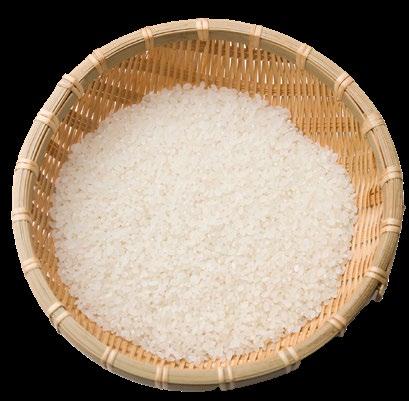
To ensure that their product is 100% pure high quality rice bran oil, the factory only produces one type of oil, and prevents any contact with other varieties or impurities during production.
Besides being rich in Vitamin E, RiceField Rice Bran Oil contains Gamma-Oryzanol, a natural antioxidant that helps to reduce the risk of several diseases. RiceField Rice Bran Oil is also more nutritional and healthier than some other types of cooking oils as it is high in unsaturated fats, is transfat free, and is also naturally cholesterol free. Additionally, its high smoke point makes it suitable for deep frying.
Furthermore, rice bran oil is an eco-friendly option as it is derived from the bran layer of rice, a byproduct in rice milling. Utilising this byproduct makes the production process more environmentally sustainable.
You should store rice bran oil in a cool, dark place to maintain its freshness. Tightly seal the bottle after each use to preserve its quality. And when you are using rice bran oil for frying, ensure that the oil is heated to the appropriate temperature before adding your food. This helps to achieve a crispy texture without absorbing too much oil.
Last but not least, you can consider blending rice bran oil with other oils to enjoy the combined benefits. For example, mixing it with olive oil can enhance the flavour of your dishes while providing a wider range of nutrients.
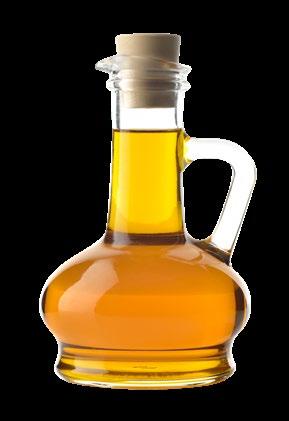
Rice bran oil is more than just a cooking oil; it is a versatile, nutrient-rich elixir that offers numerous health benefits. From promoting heart health and aiding in weight management to its powerful antioxidant properties, rice bran oil is a valuable addition to any diet. Its culinary versatility allows it to be used in a variety of cooking methods, making it a practical choice for any kitchen.
By choosing RiceField Rice Bran Oil, you not only enhance your health but also support sustainable farming practices. Its balanced fatty acid composition, high antioxidant content, and impressive array of nutrients make it a superior choice compared to other oils. Experience the golden goodness of RiceField Rice Bran Oil today. Add it into your daily cooking routine and enjoy the multitude of benefits it has to offer.


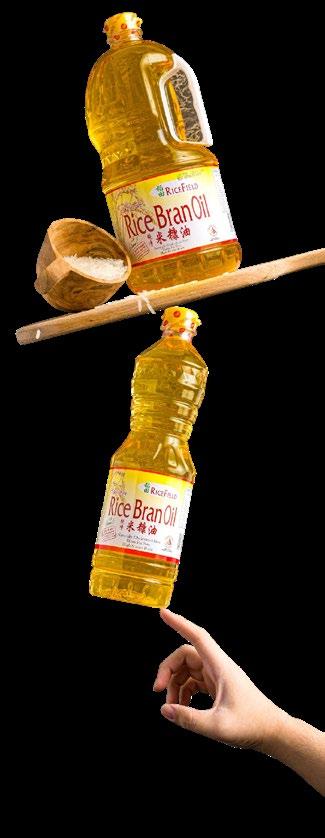
Nutrition & Dietetics
Ryan Ong Chu Xiang
Tan Chew Sia
Chow Pek Yee
Gladys Wong Hooi Chuan
Gina Ong Lye Kim
Food Services
Ghazali Mohamad
Nge Aik Tee
Muazzin Shah Bin Mohd Shah
Chin Kim Voon
Mok Jey Lun
Temasek Polytechnic Diploma in Food, Nutrition & Culinary Science Students
Nur Umairah Binte Nazrulla
Wong Wei Ni
Designed by Spring Publishing Pte Ltd
61 Upper Paya Lebar Rd, 05-02A Tat Wan Building, Singapore 534816



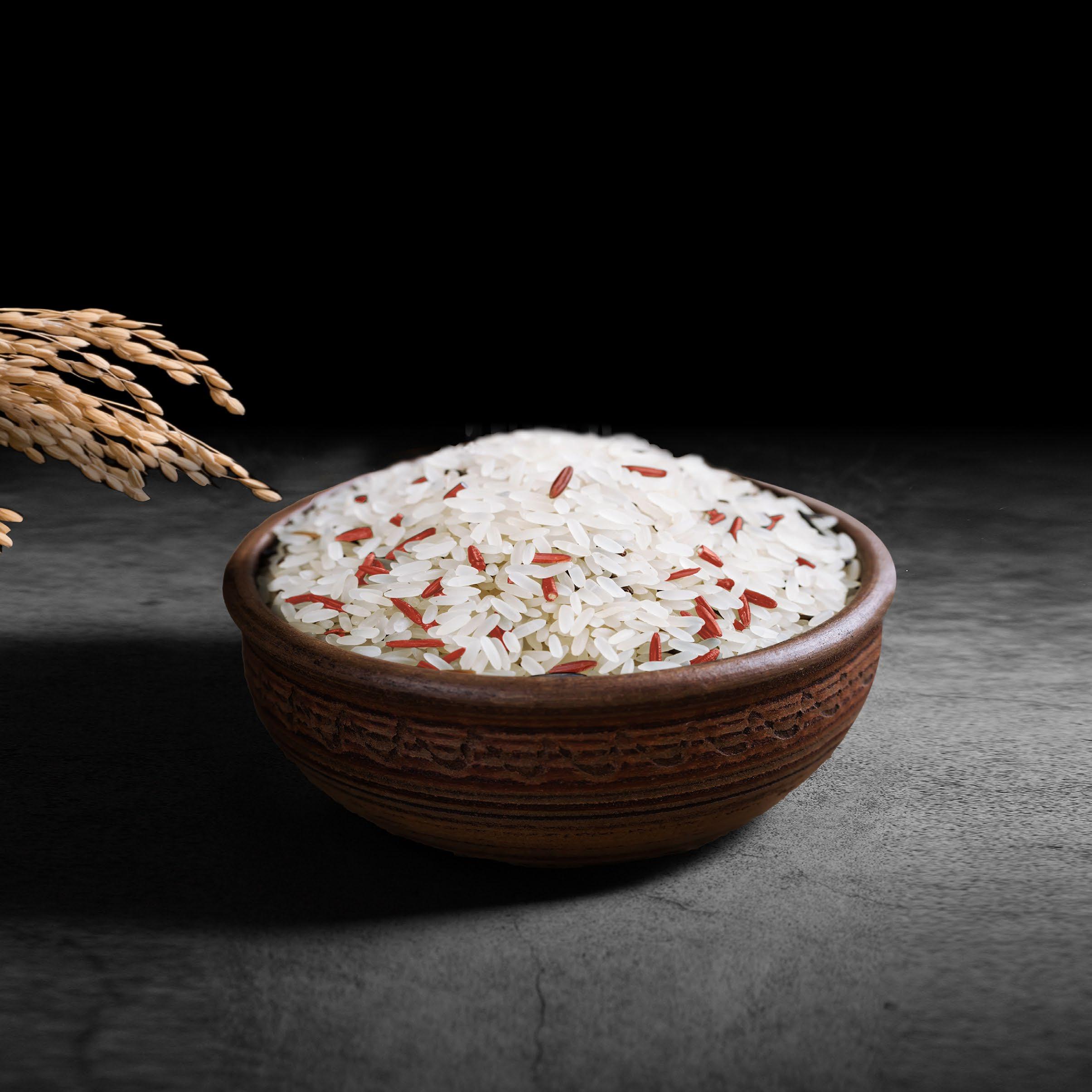

Meatless Monday
Dishes or snacks that do not contain any meat or meat products
<500 kcal Dish
Dishes that contains less than 500 kcal
Wholegrain Wednesday
Dishes or snacks that contain wholegrains
Fruity Friday
Dishes or snacks that contain fruits
200 kcal Dish/Snack
Dishes or snacks that contain 200kcal or less than 200kcal
Festive Dish
Dishes that can be prepared daily or during festive seasons
Garden-To-Table
Dishes that uses freshly harvested vegetables
100 kcal Dish/Snack
Dishes or snacks that contain 100kcal or less than 100kcal
Dishes that are cooked using one pot One-Dish Meal
Dishes that contains high amounts of Omega-3
Abbreviations & Measures:
Balanced Meal
Dishes that contains all the macronutrients
High Protein Dish/Snack
Dishes that contains 10g or more of protein

